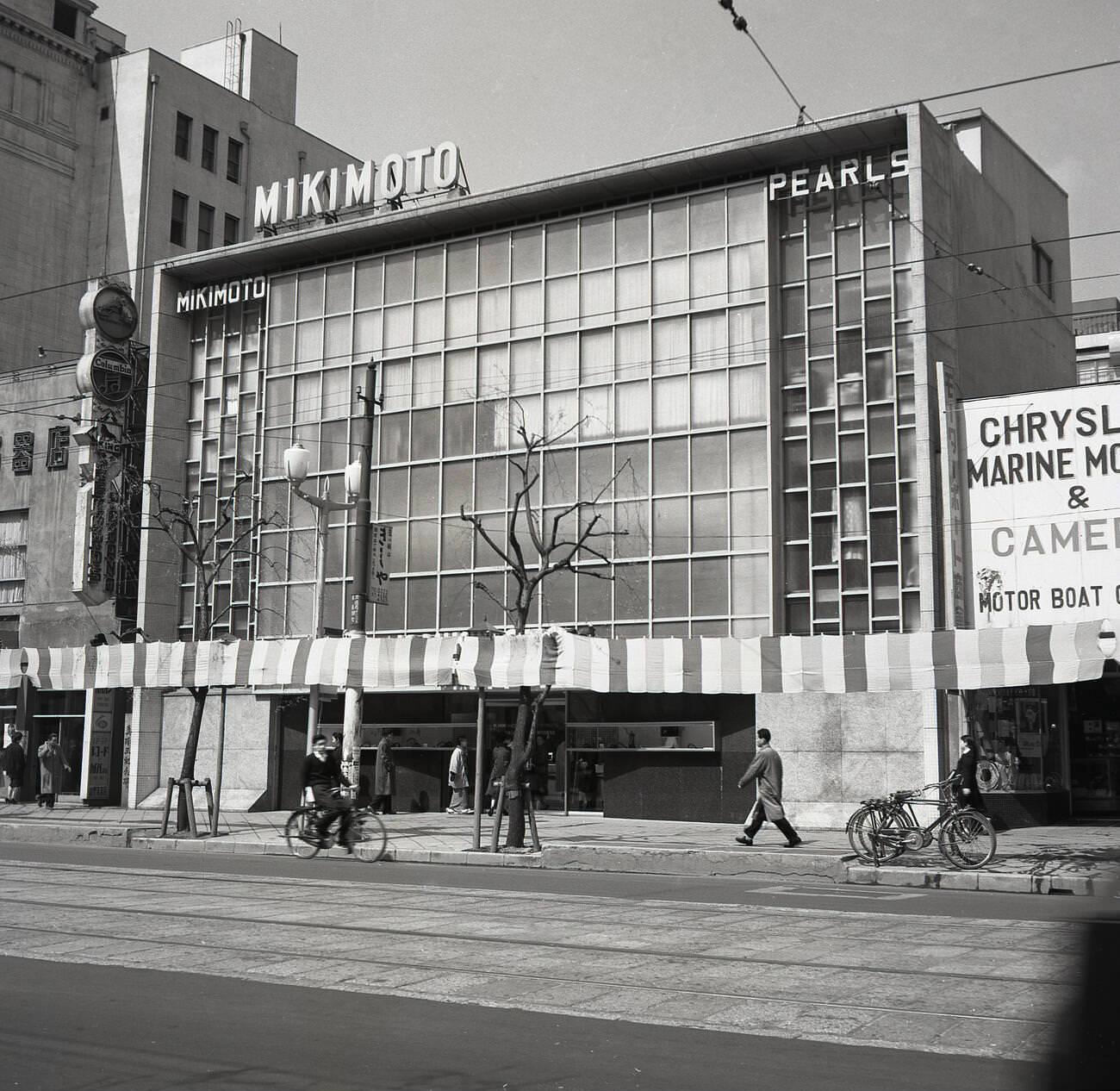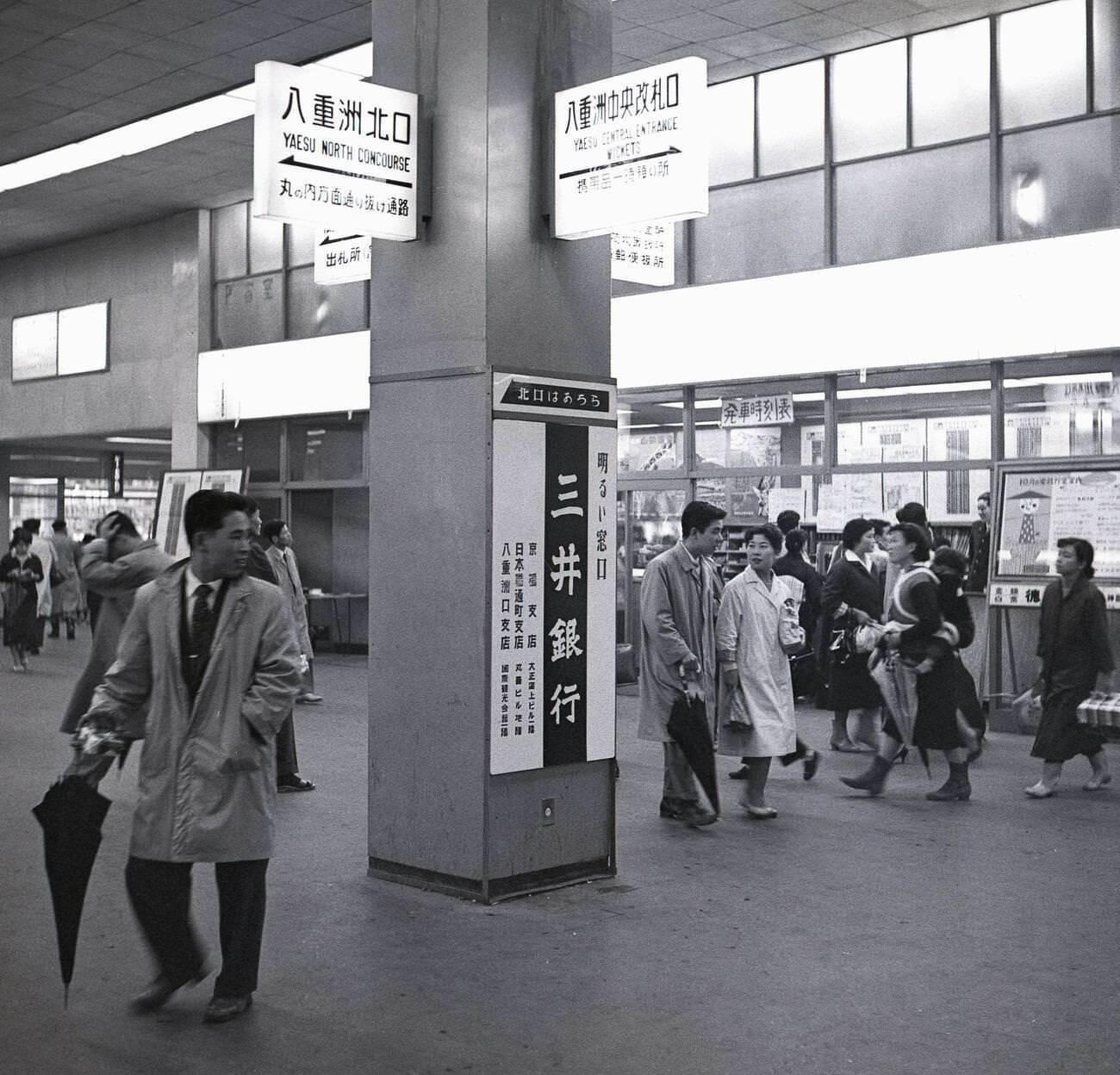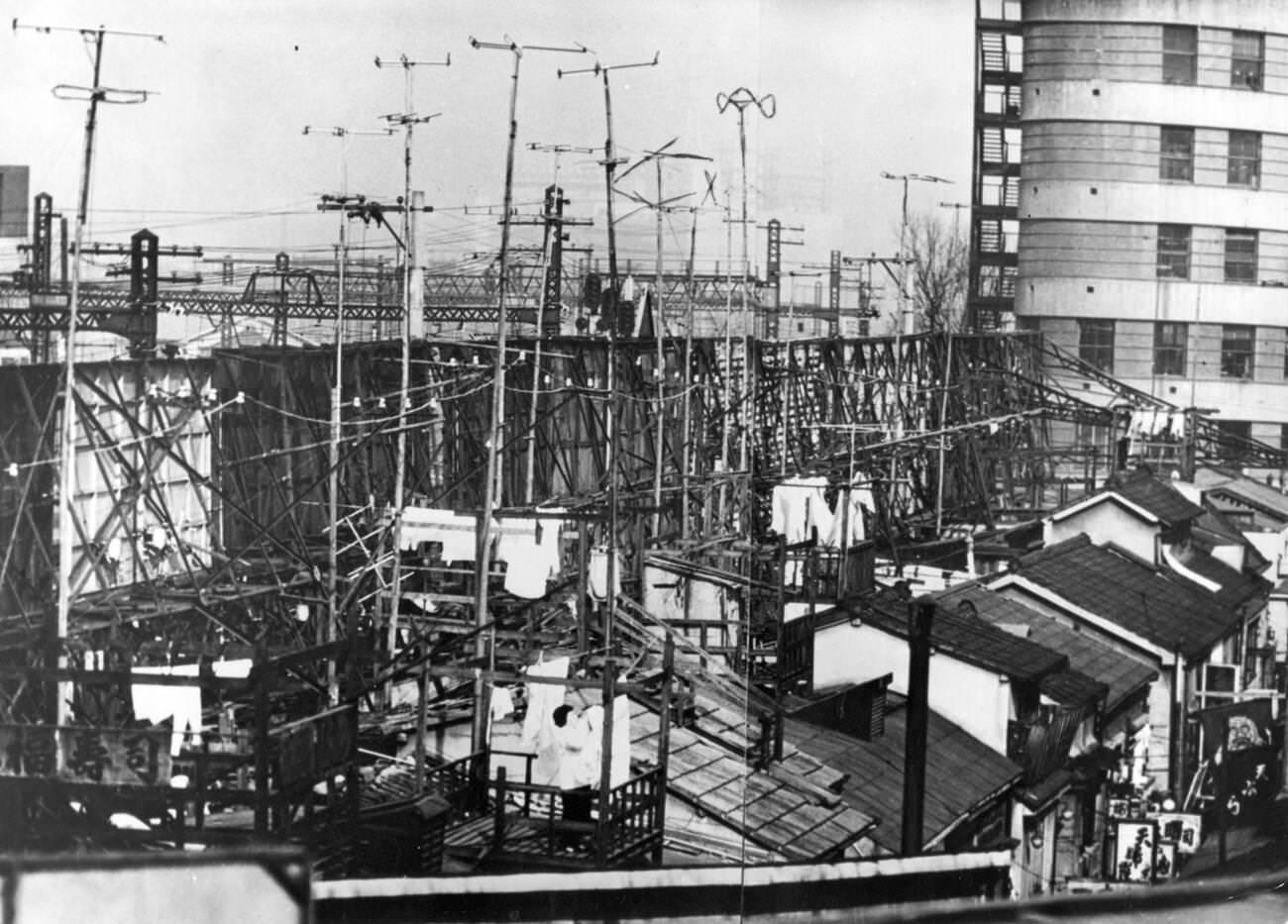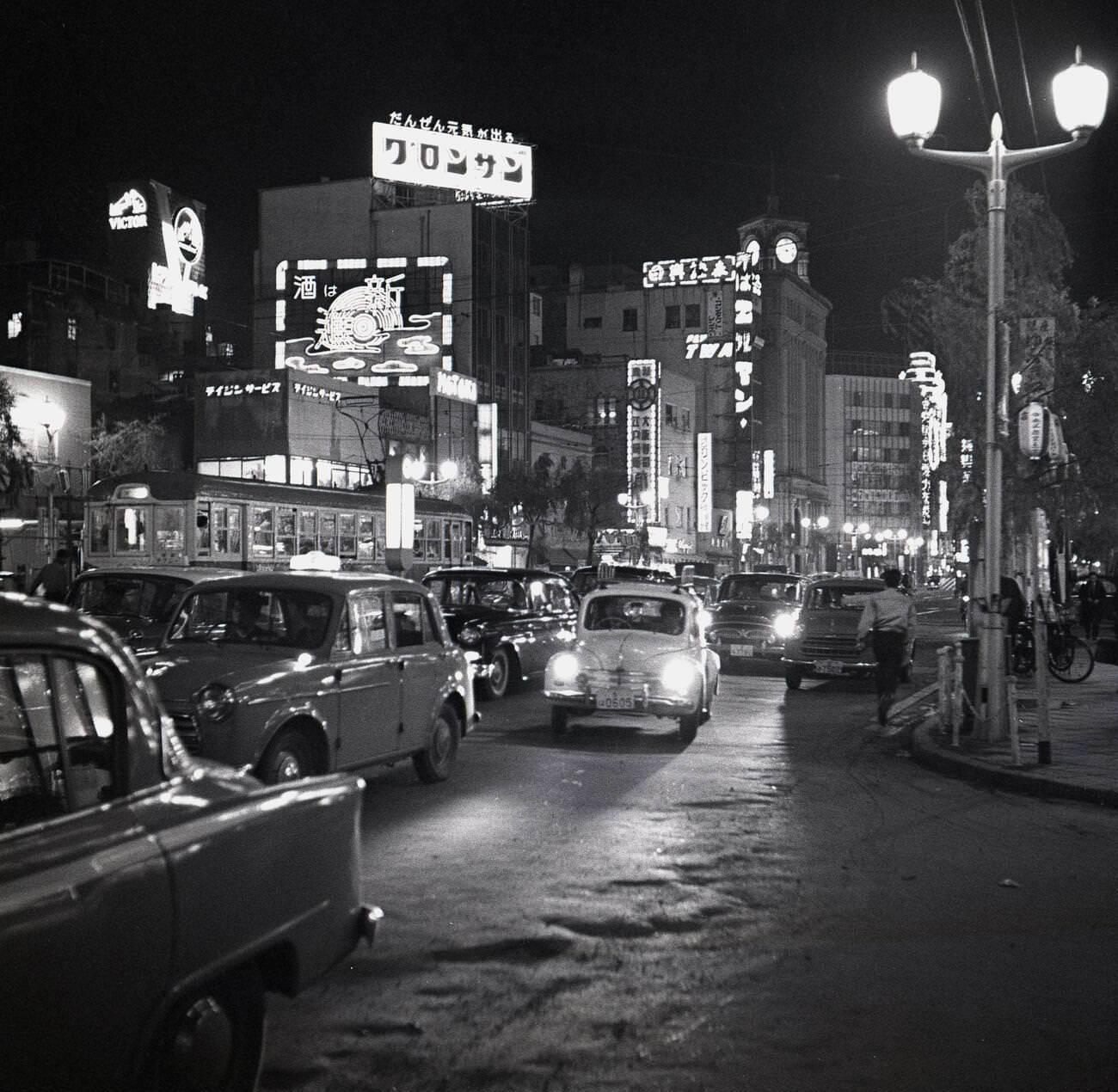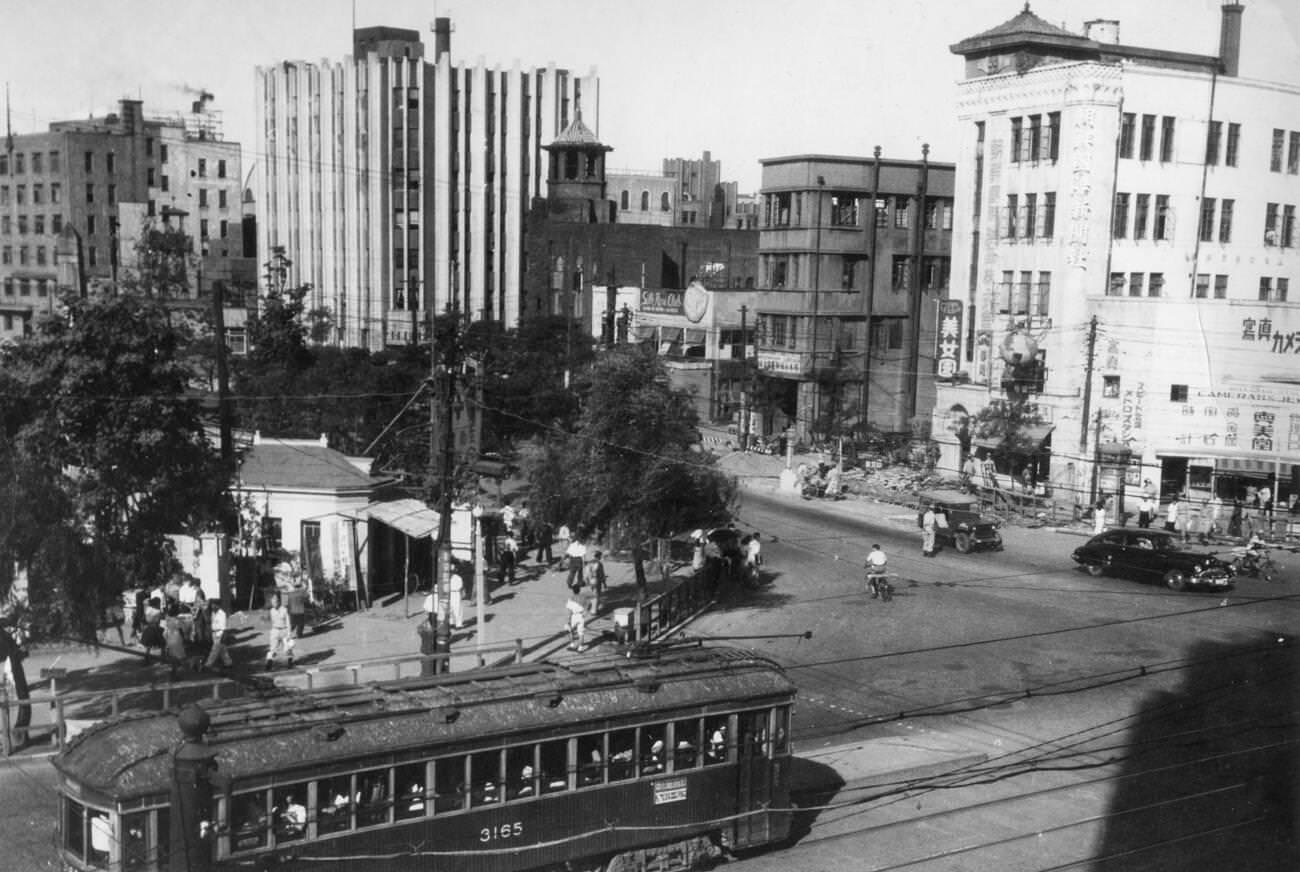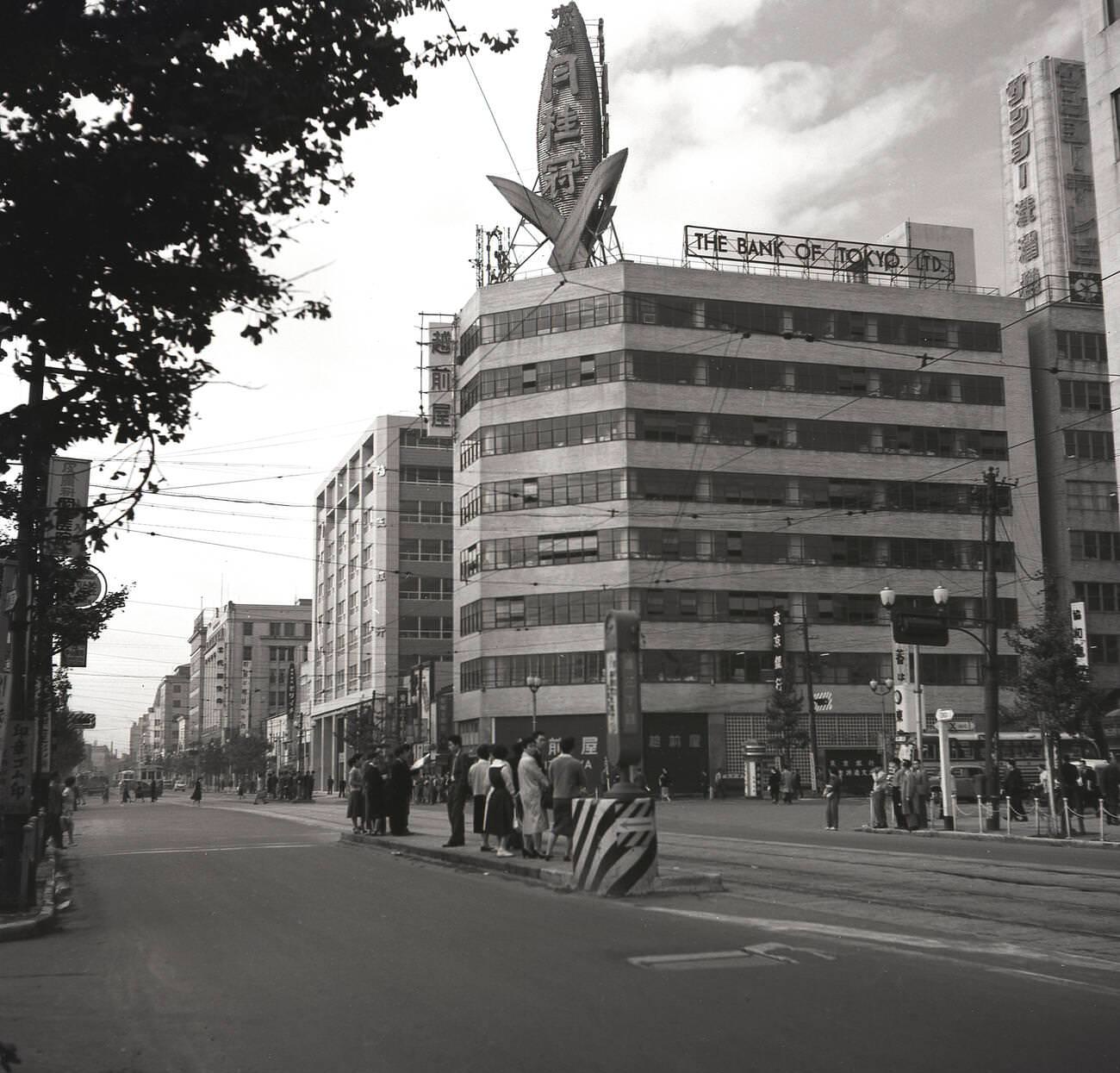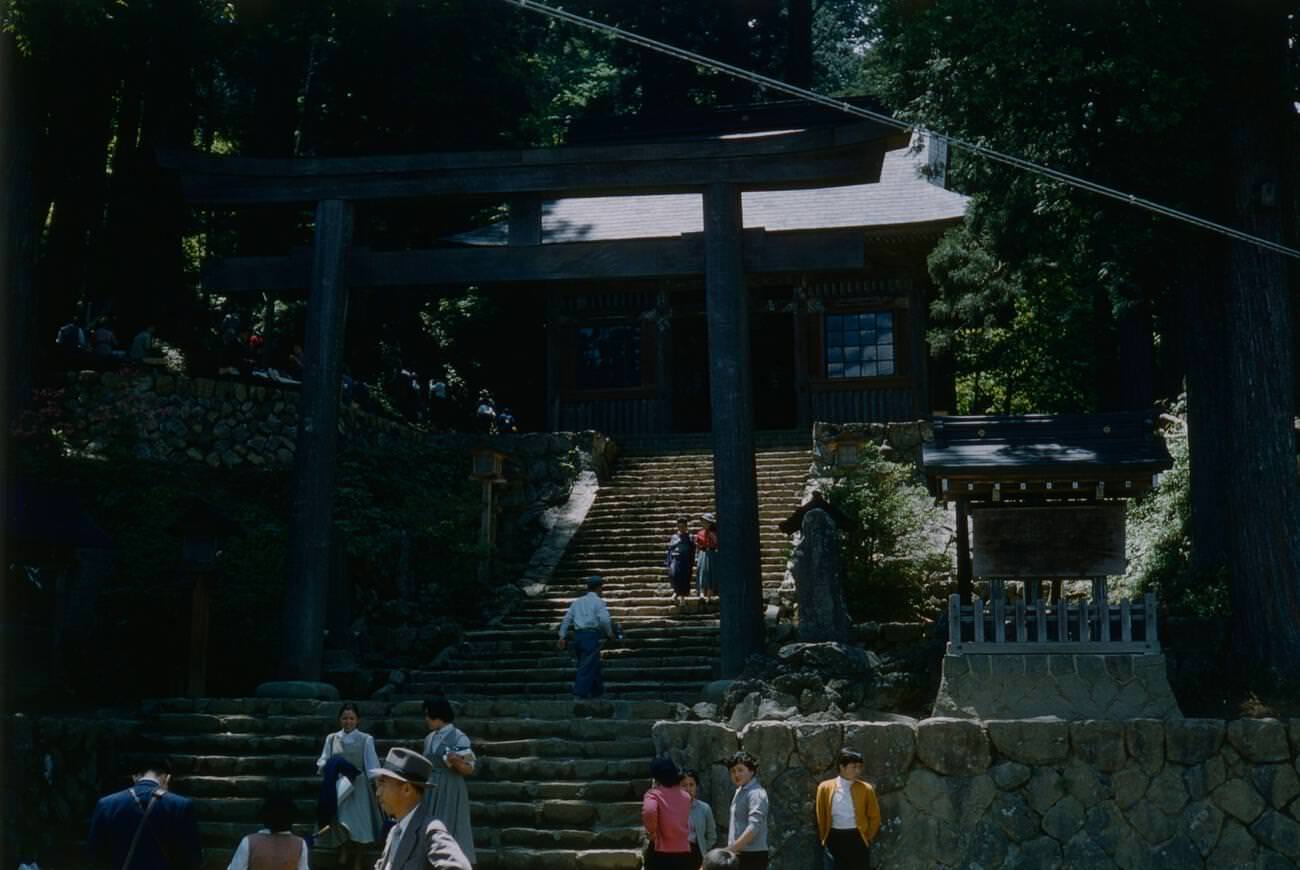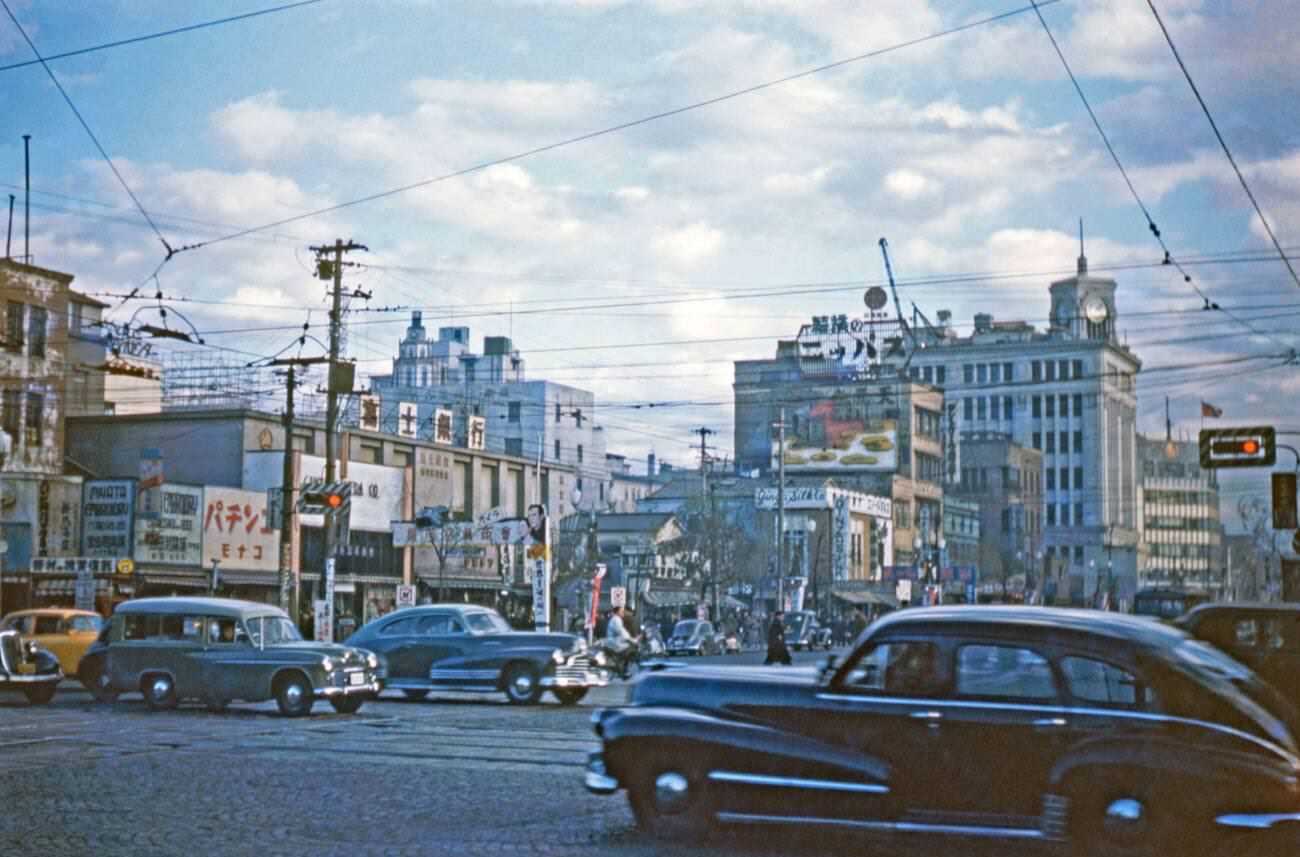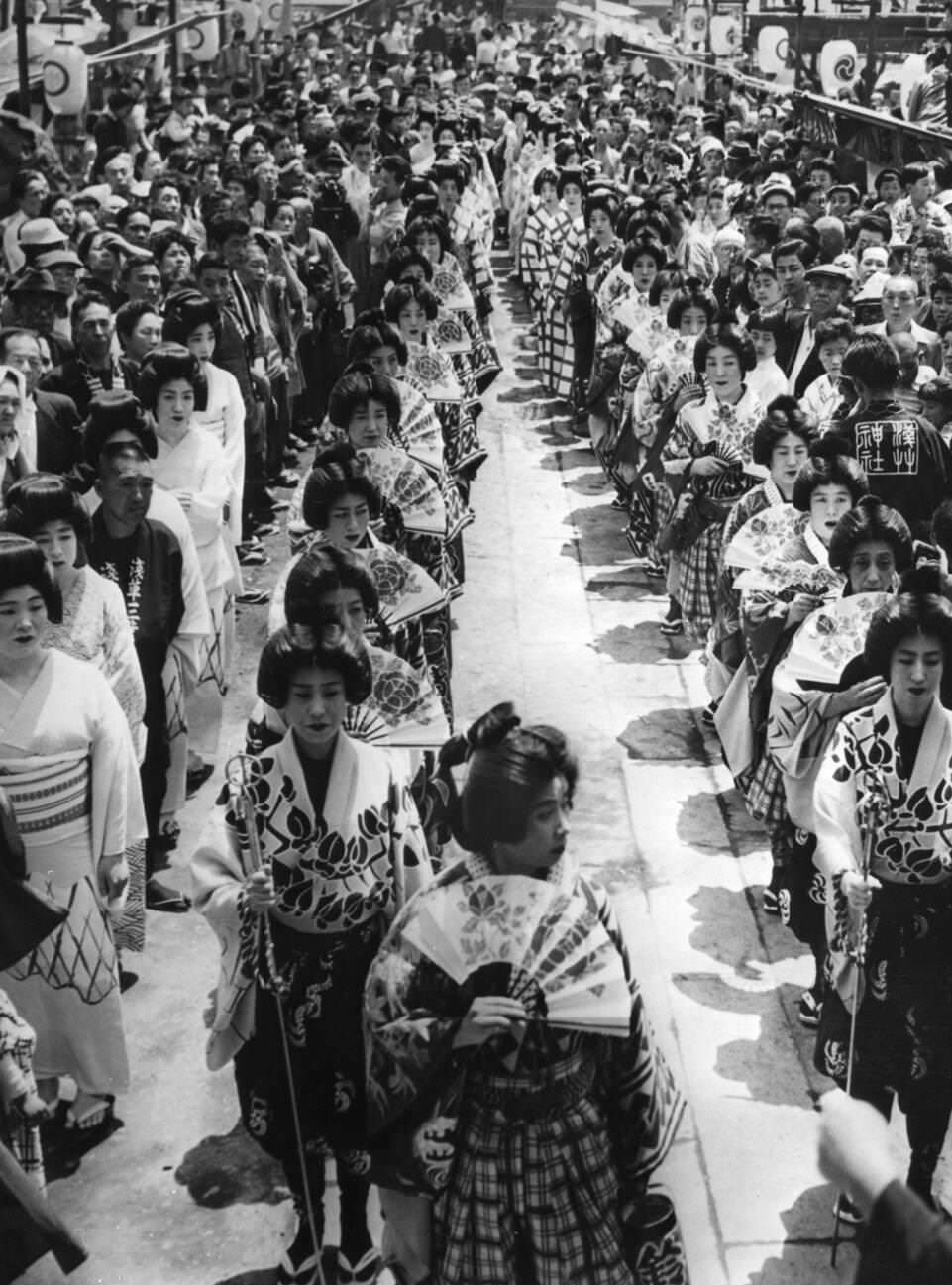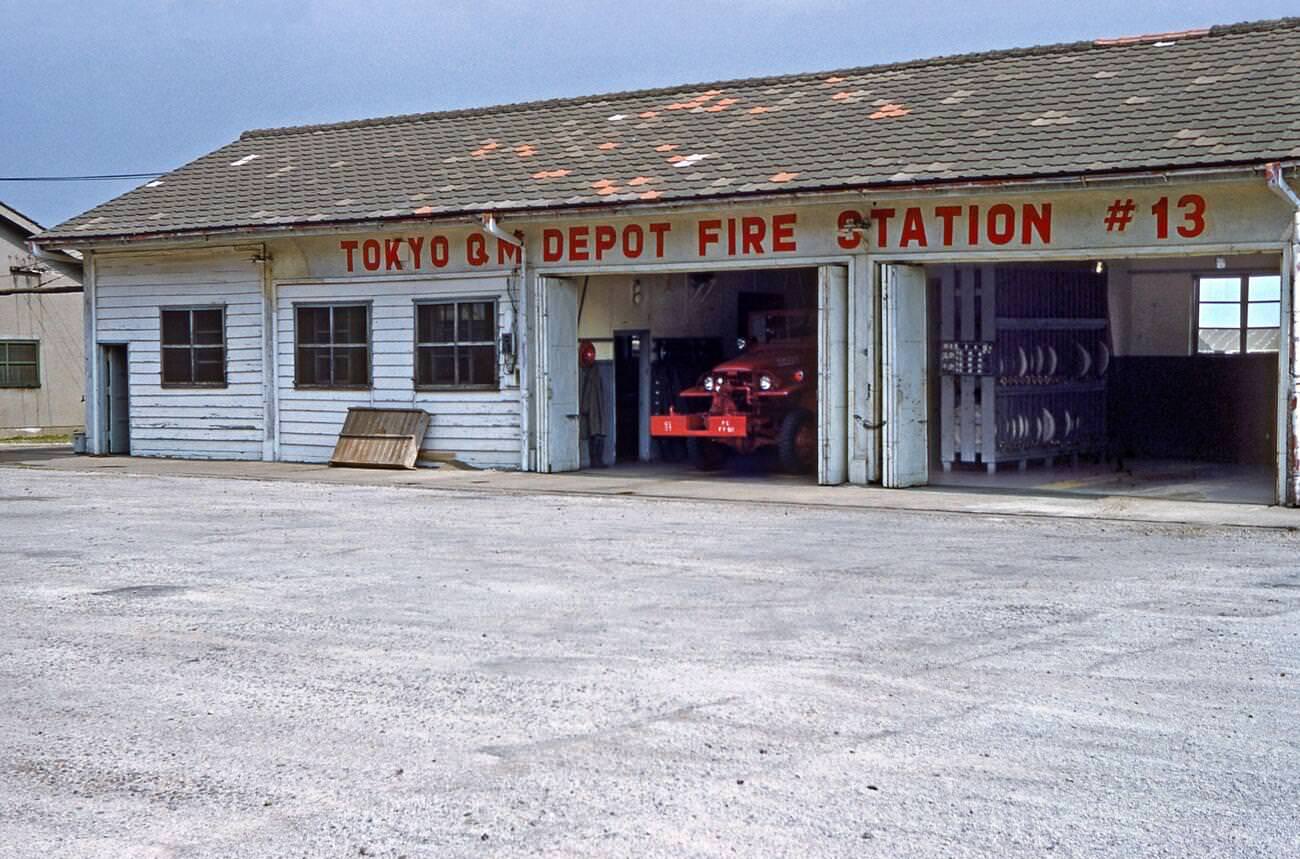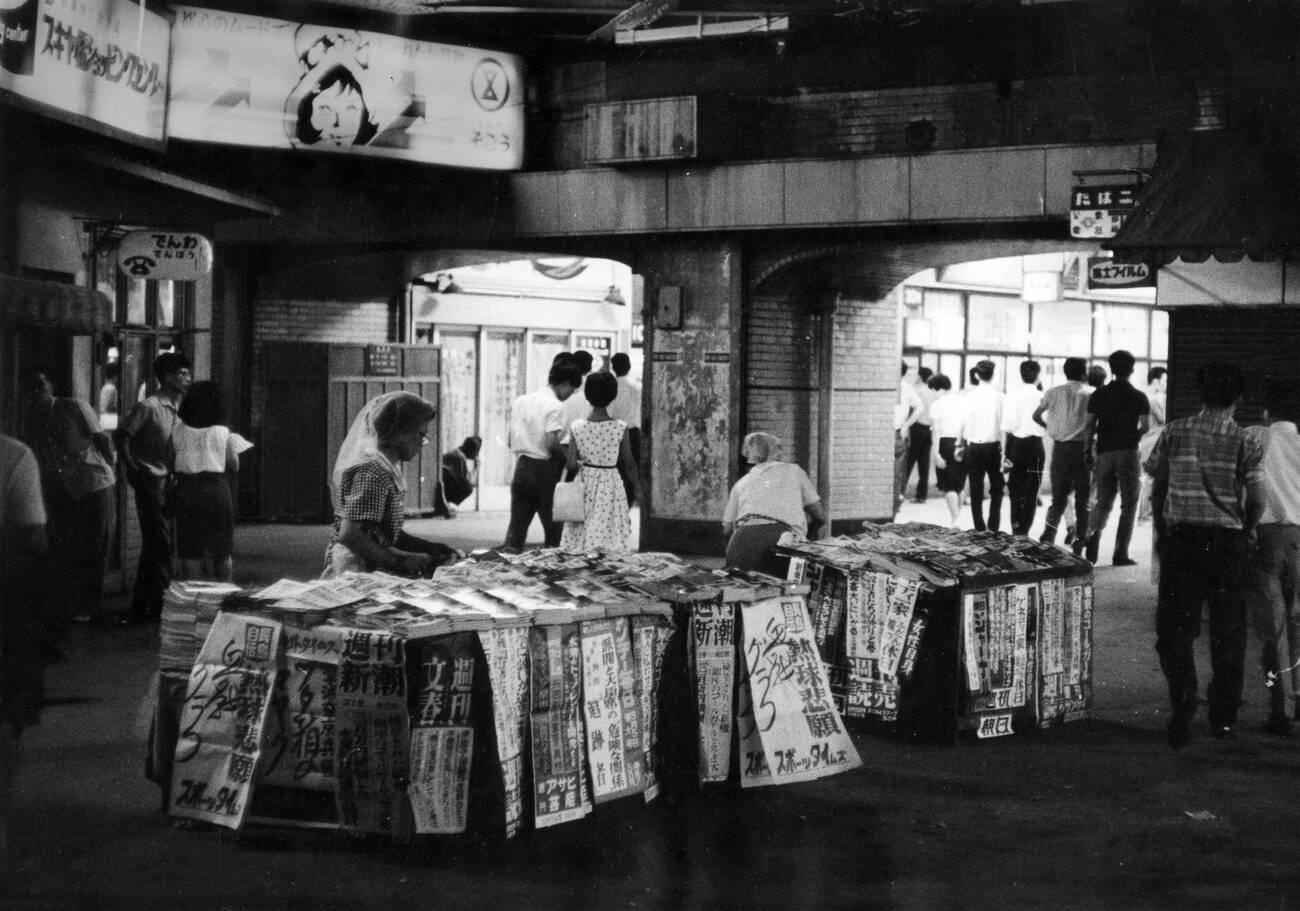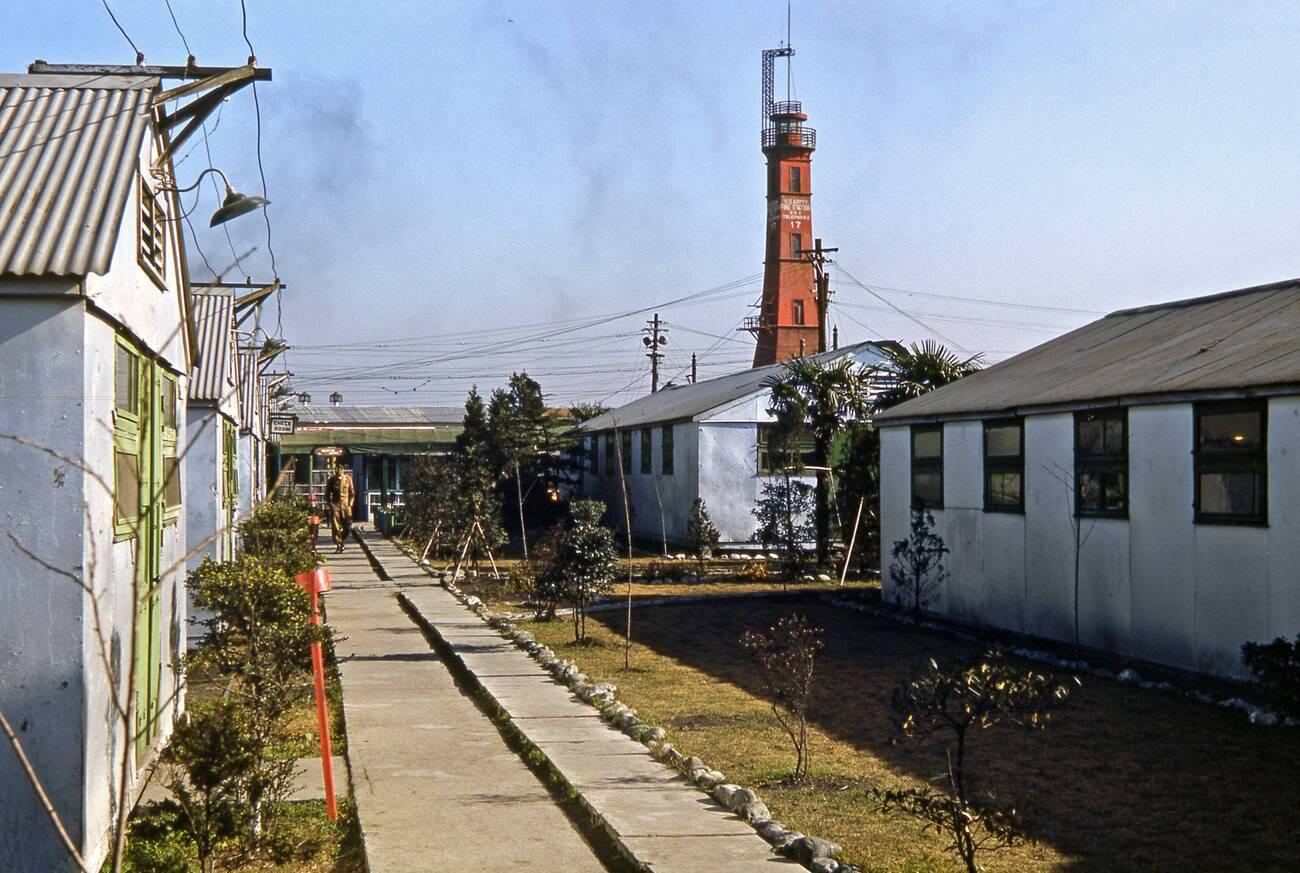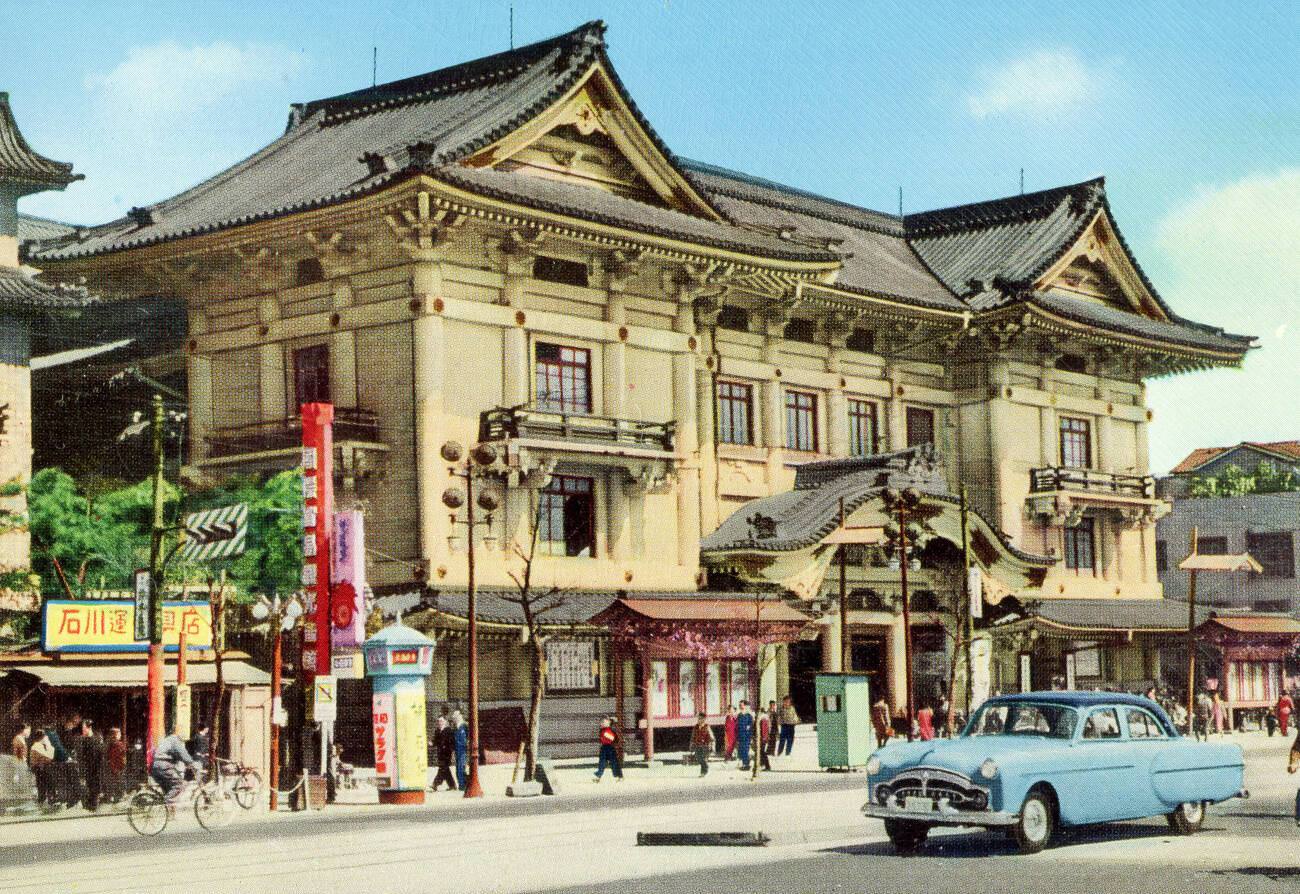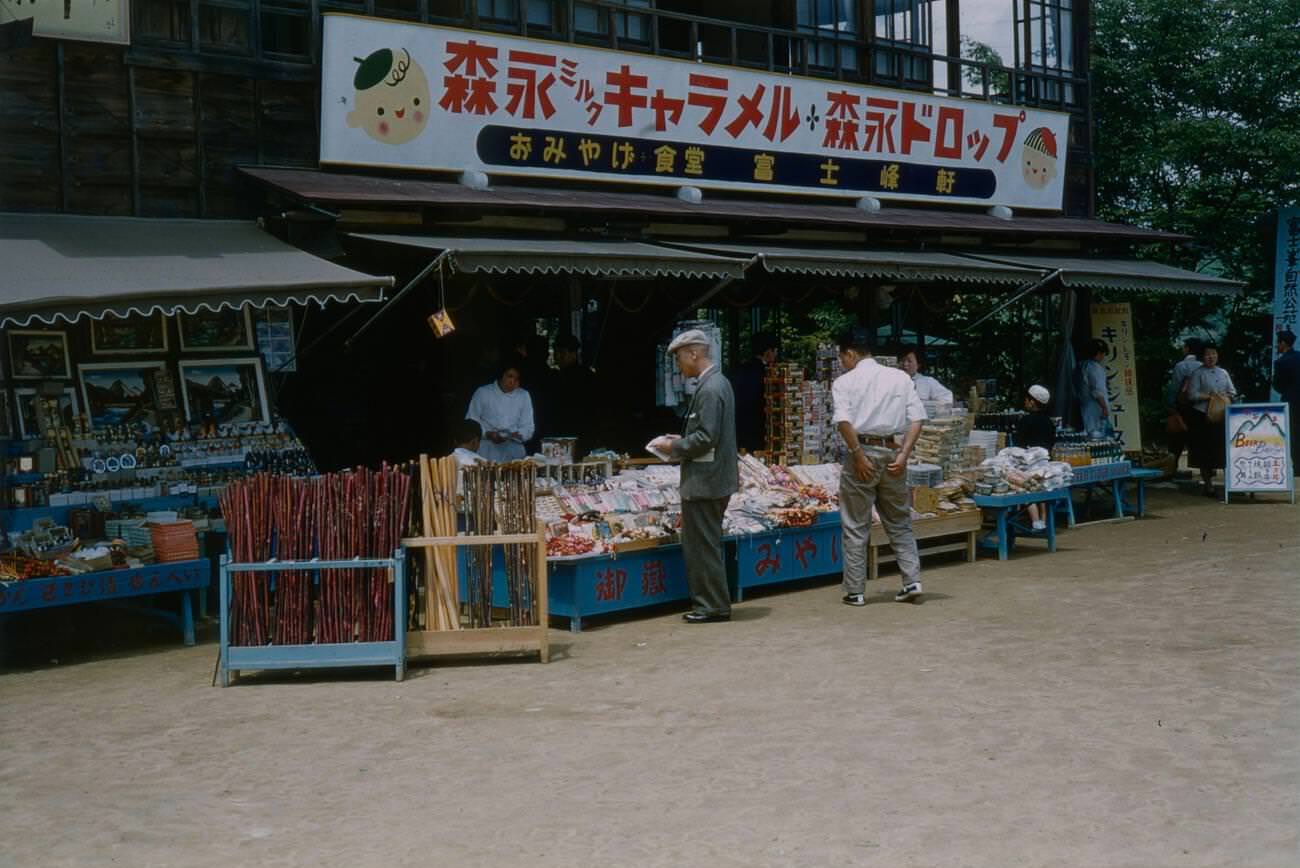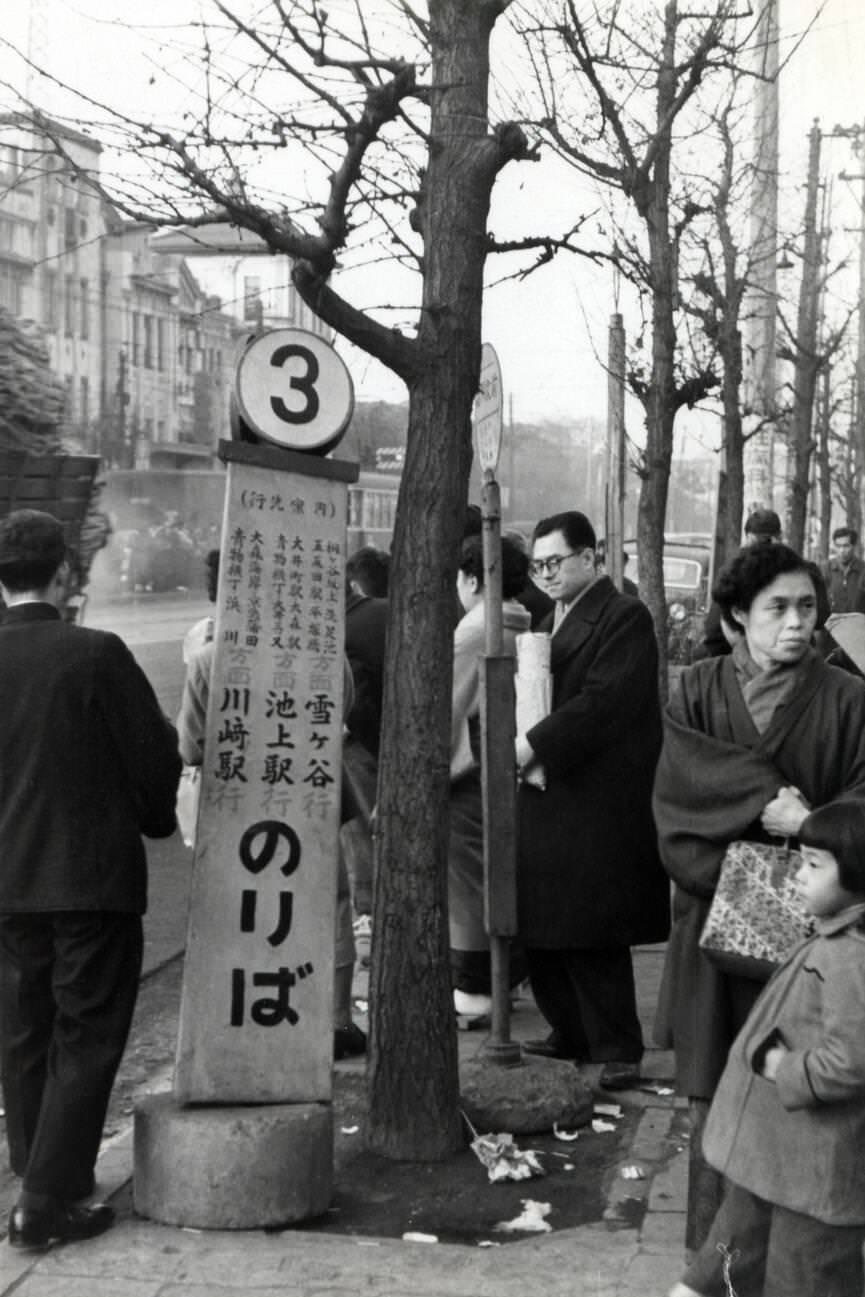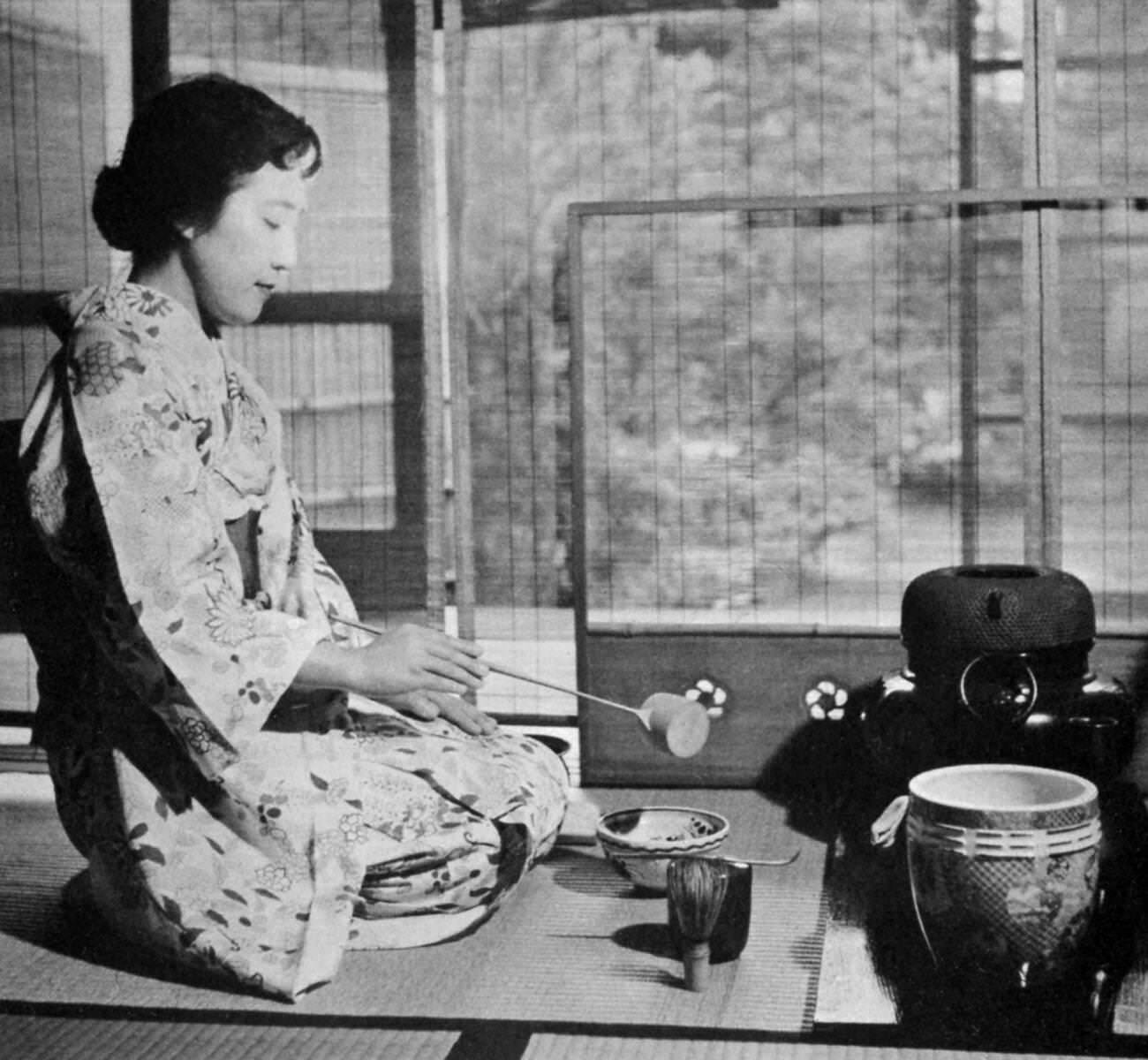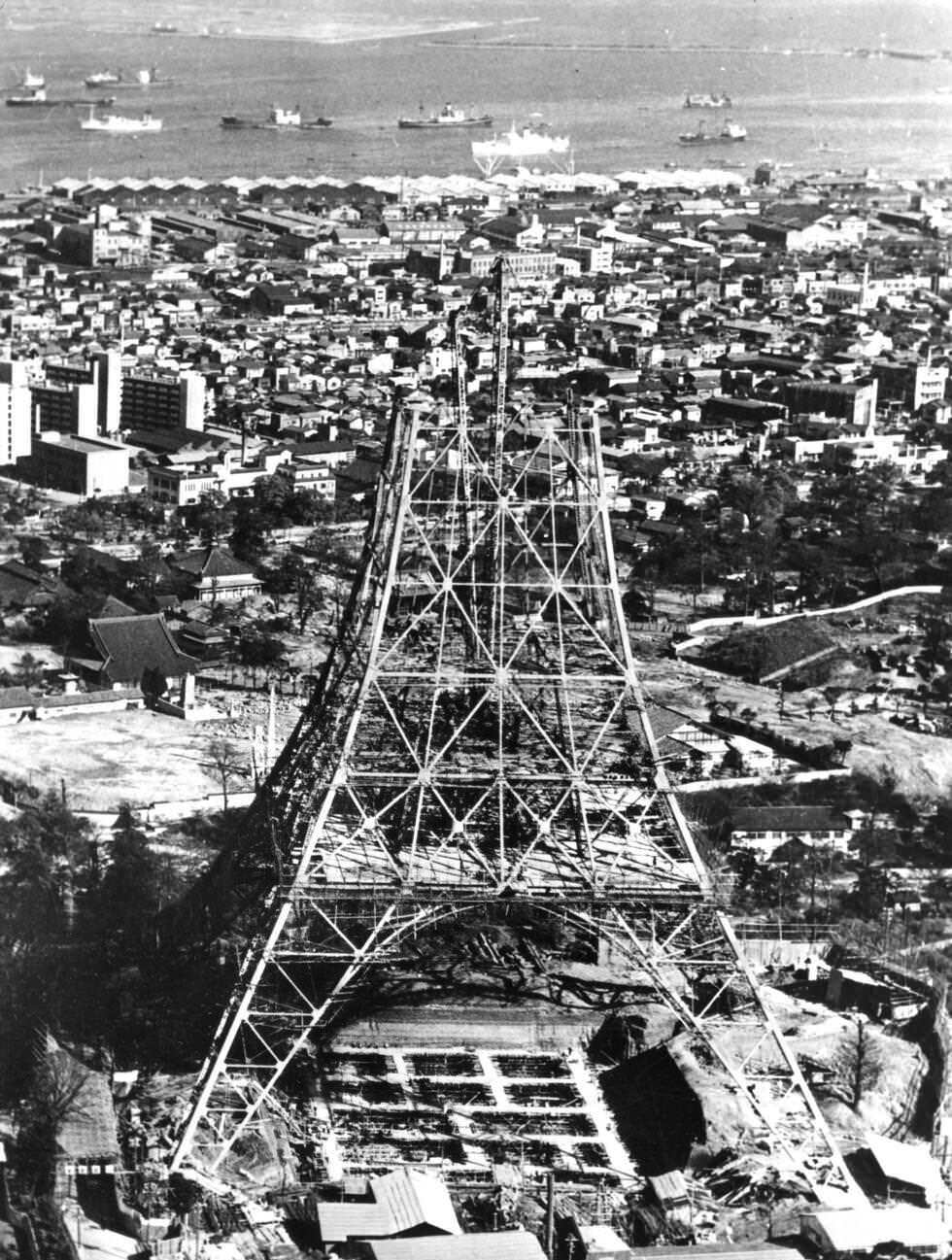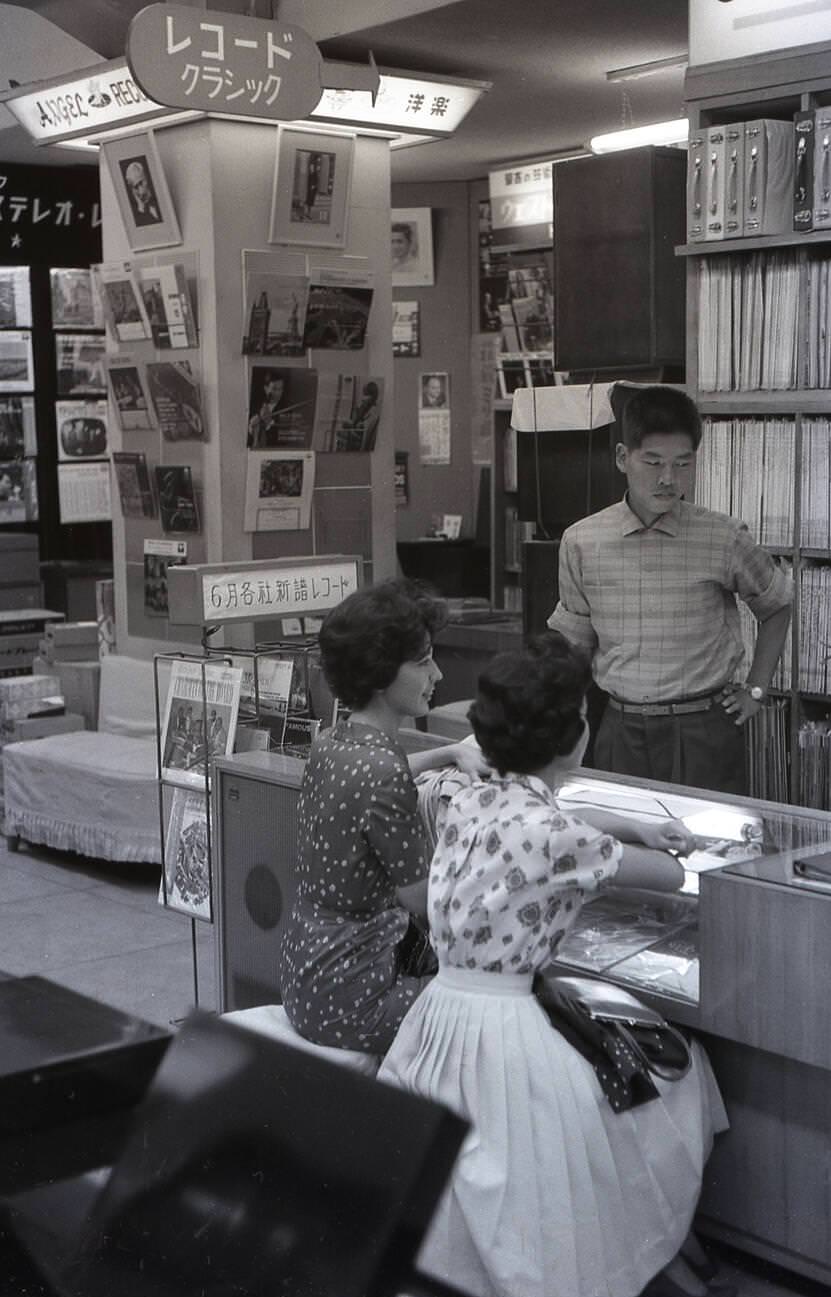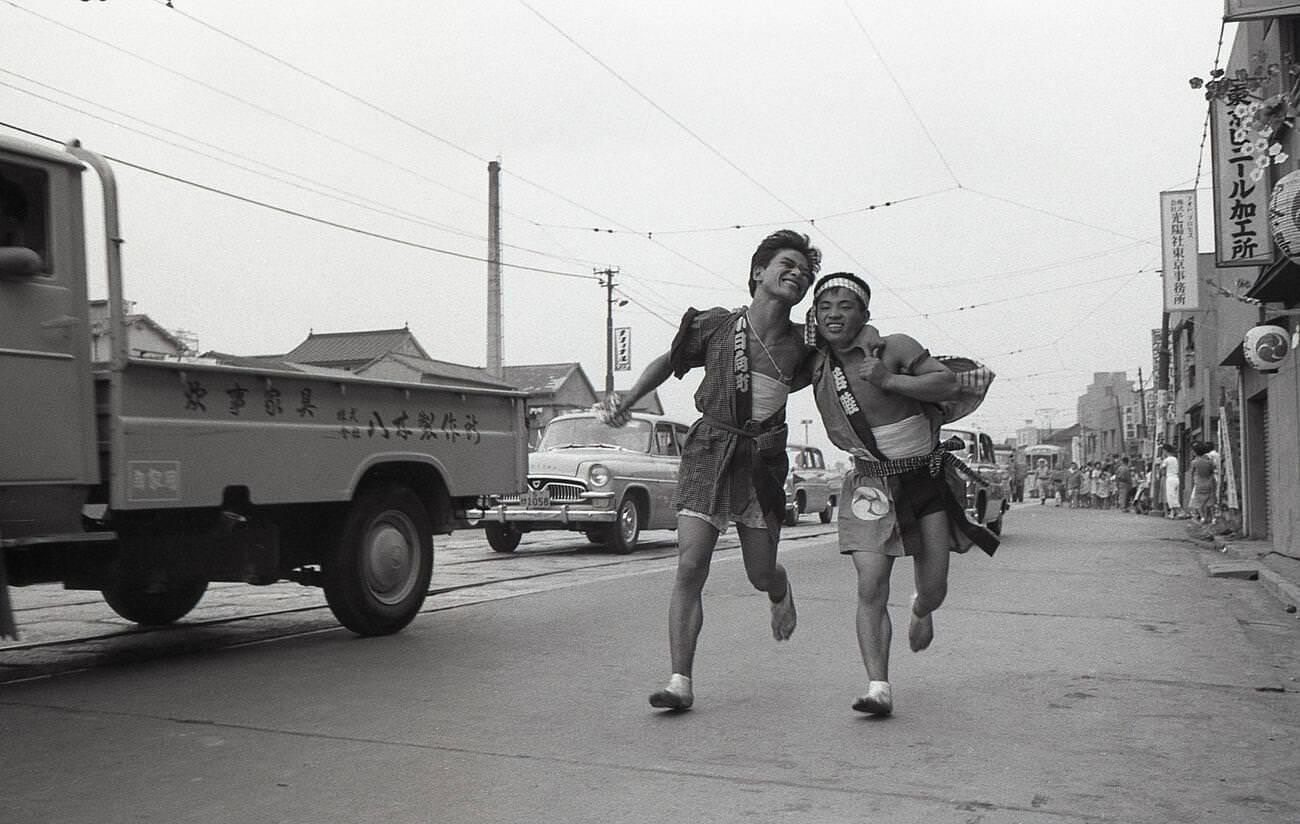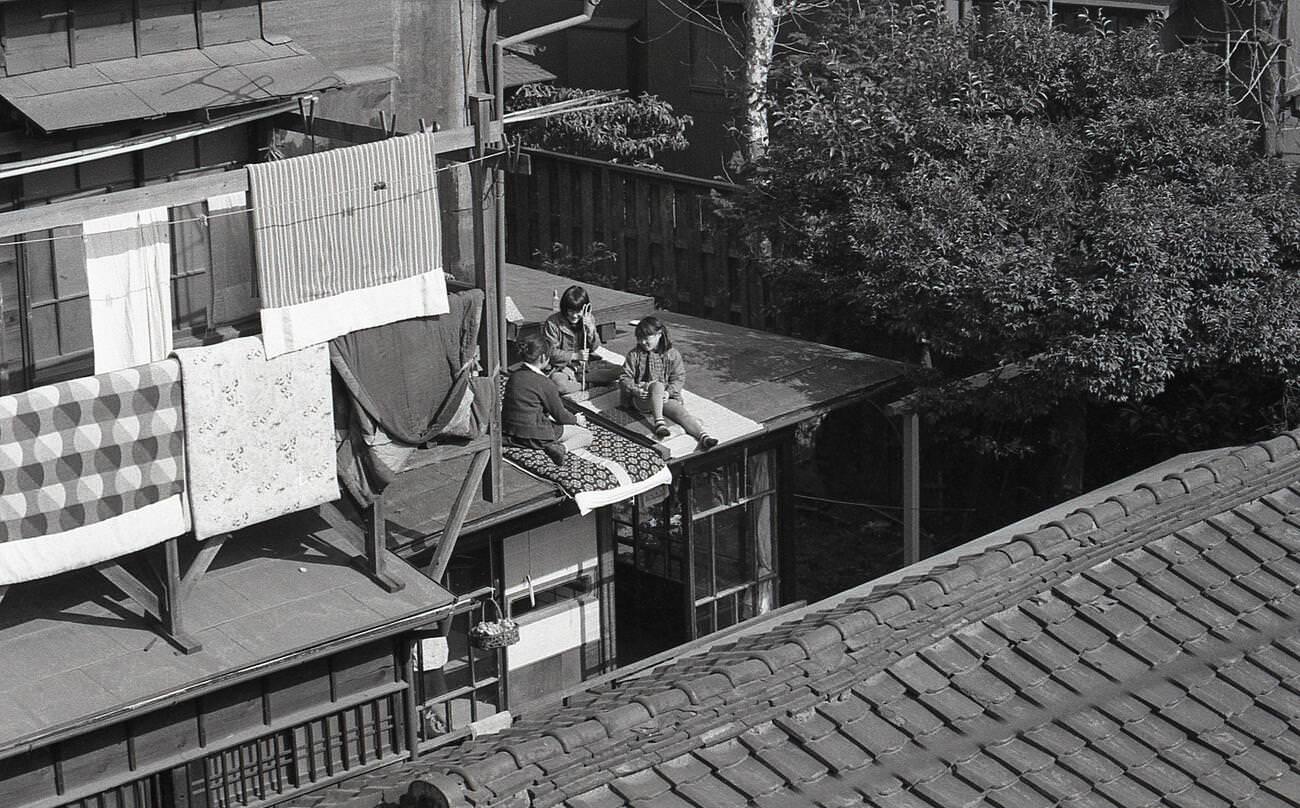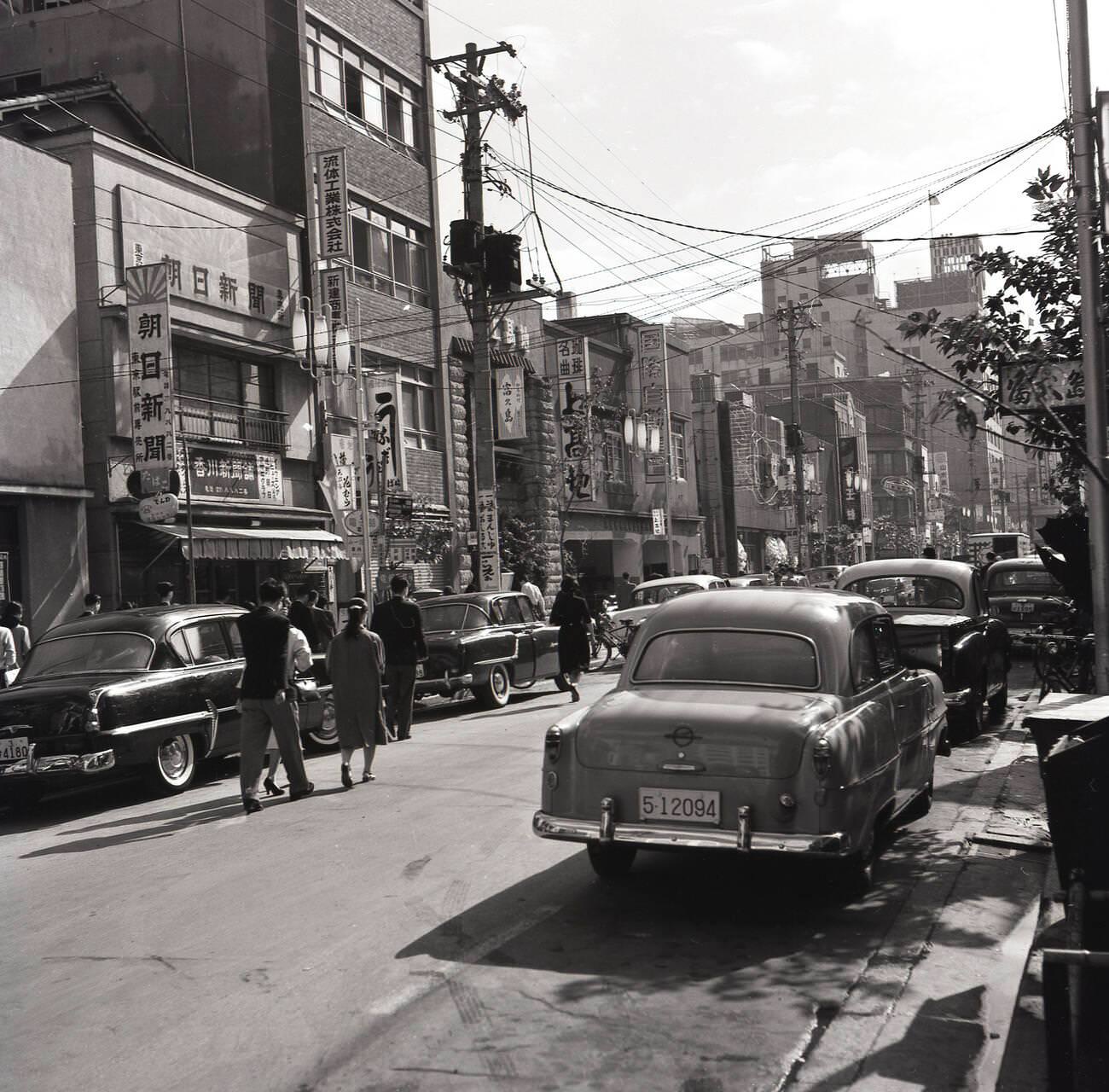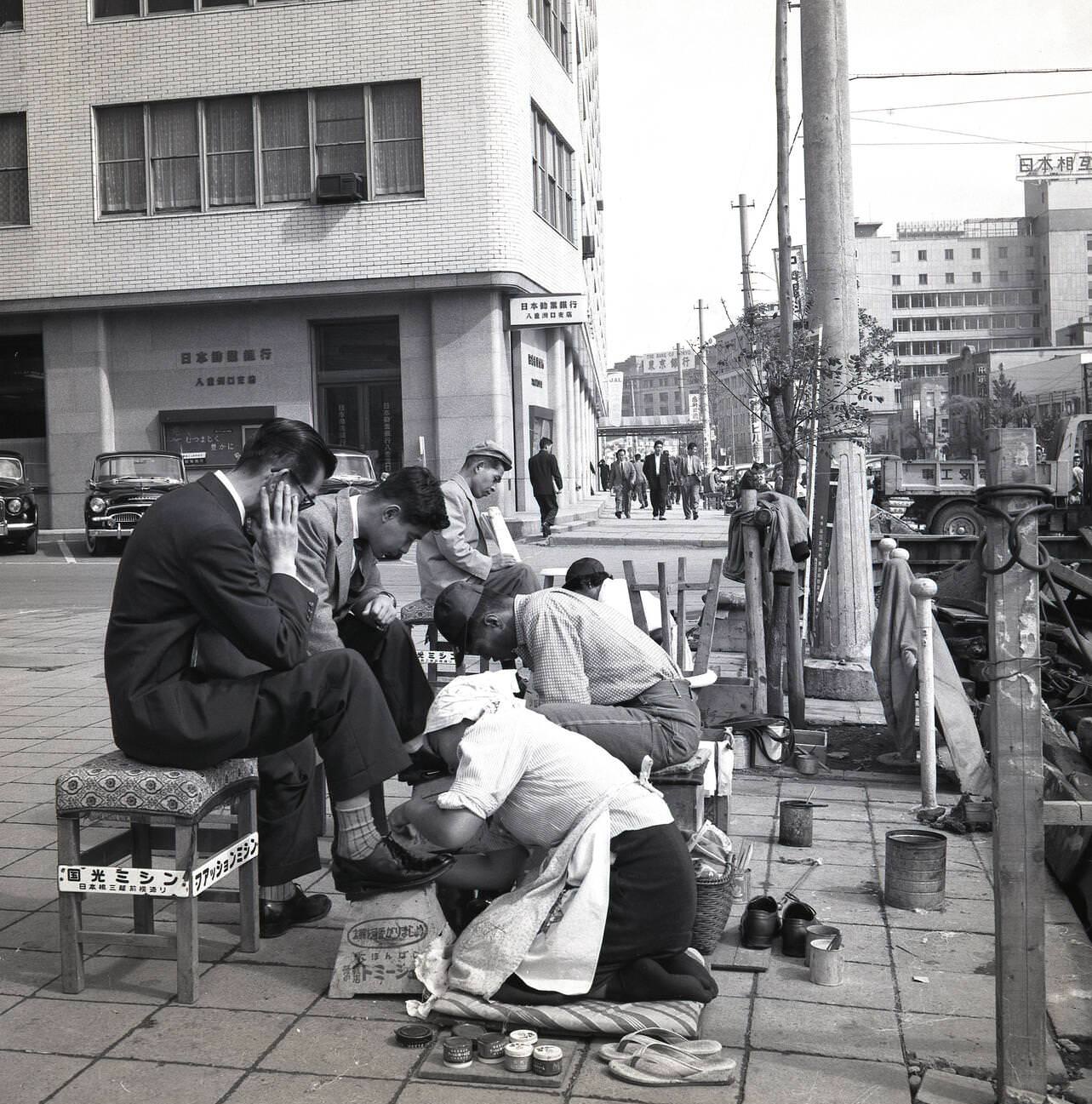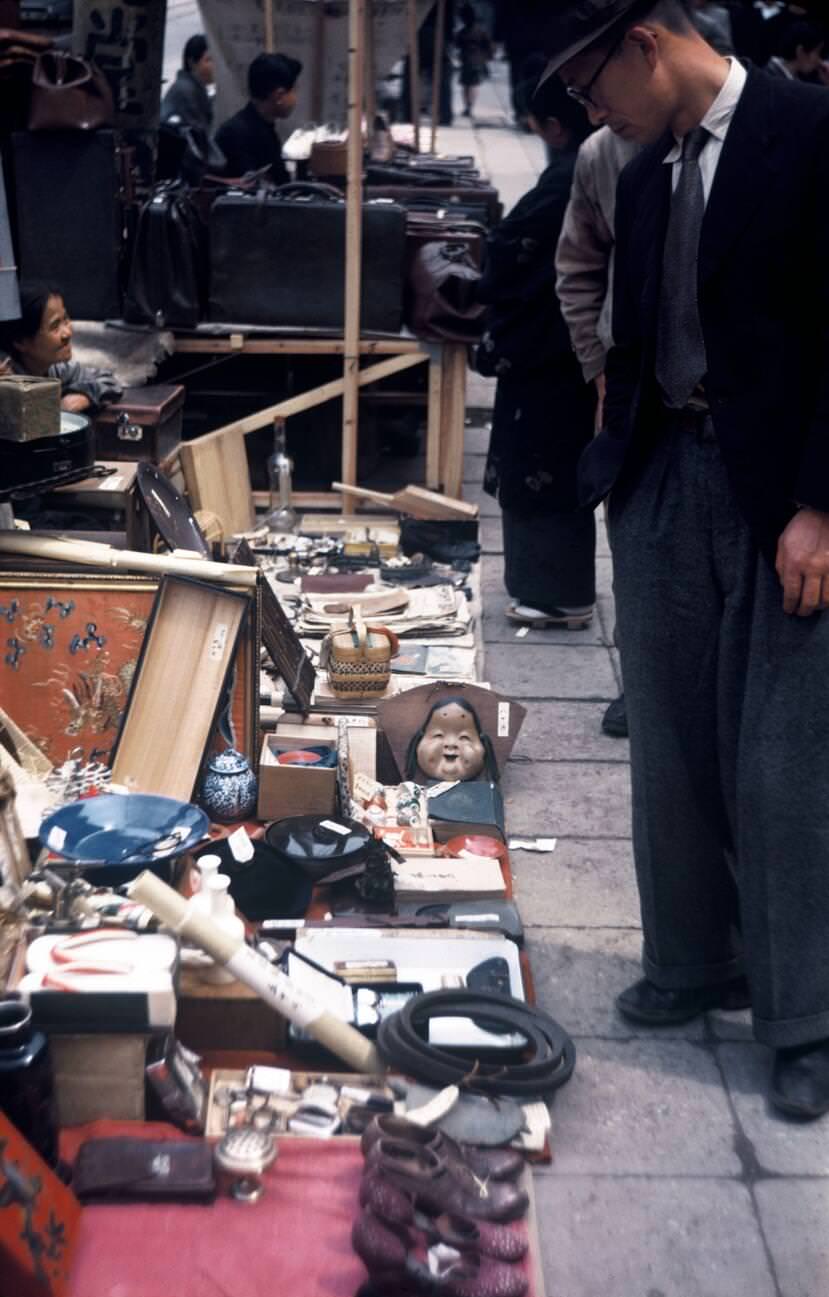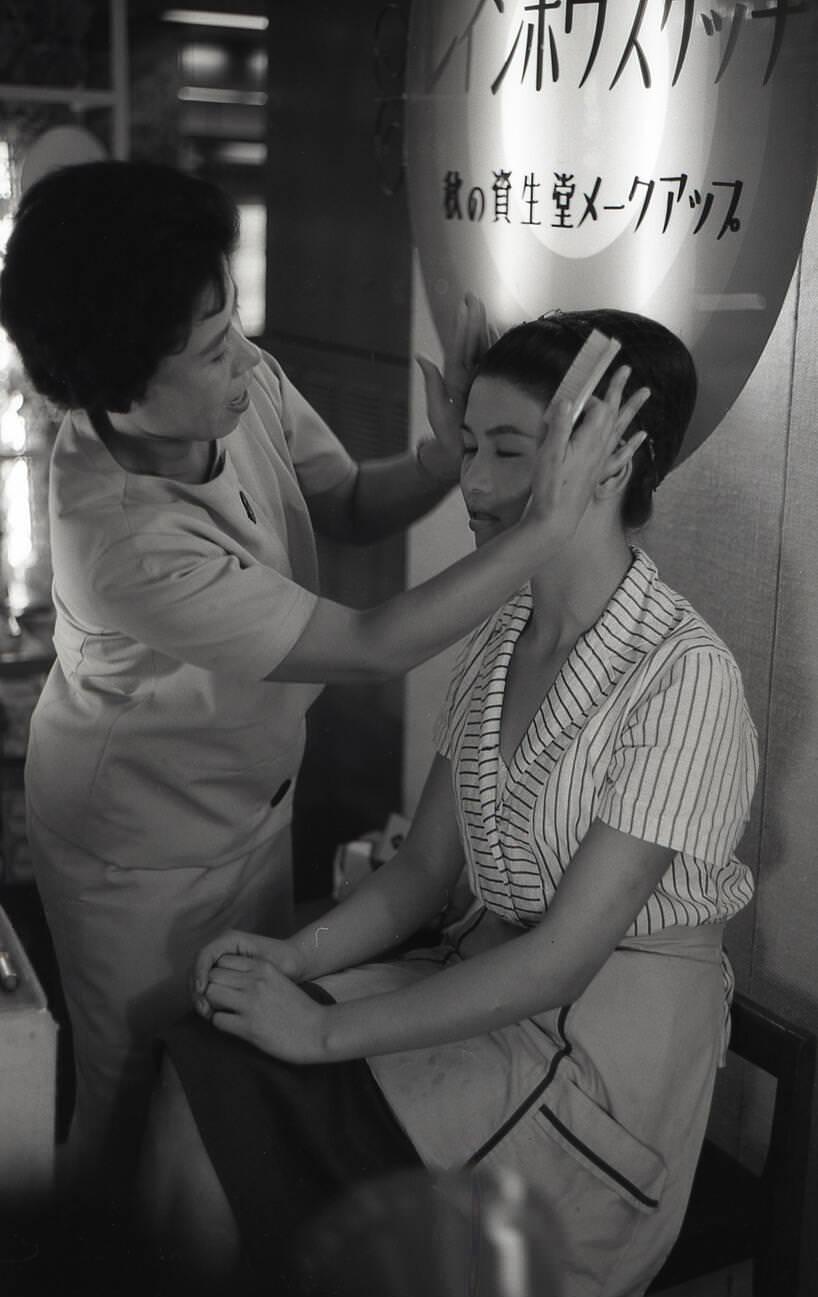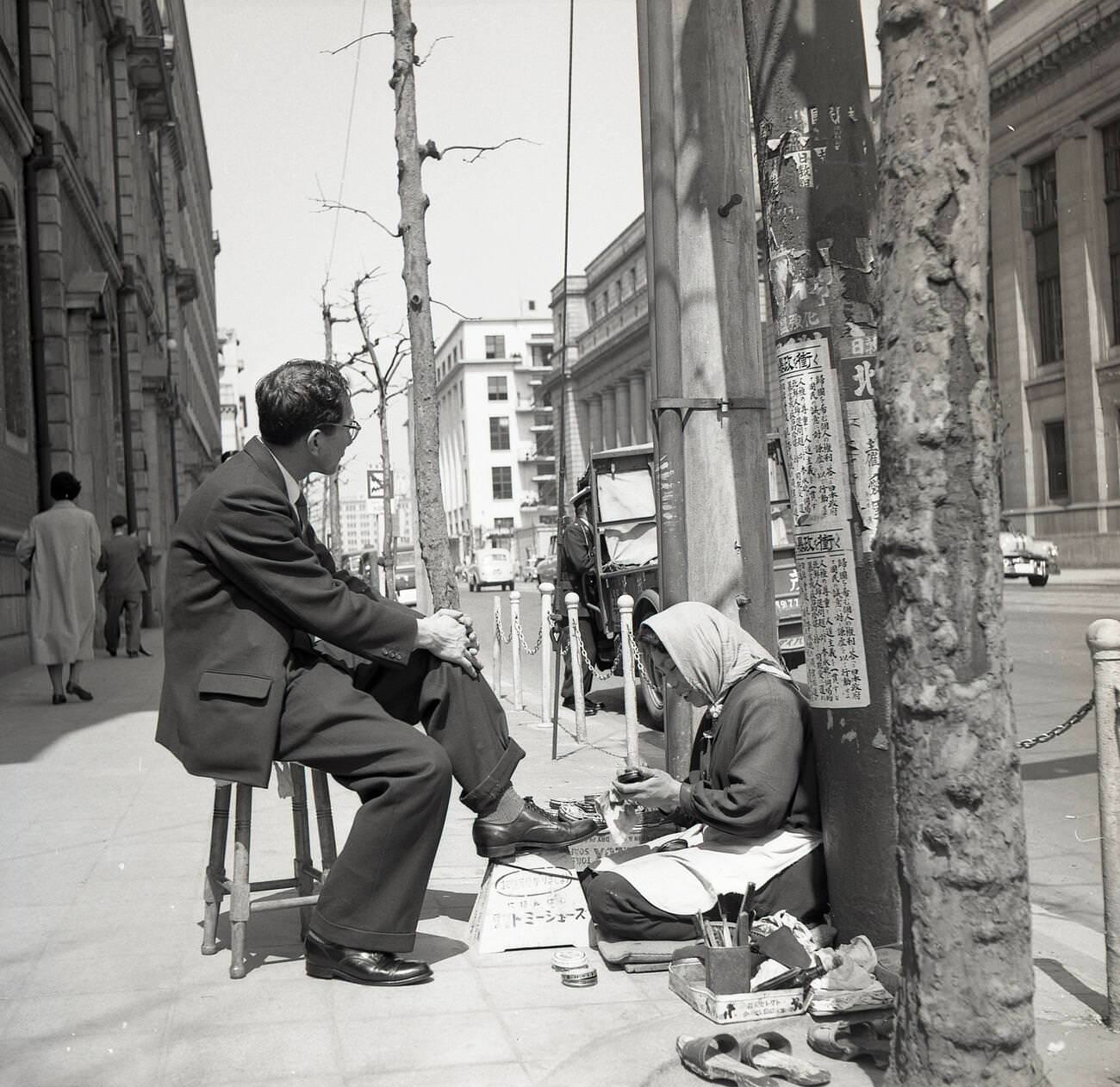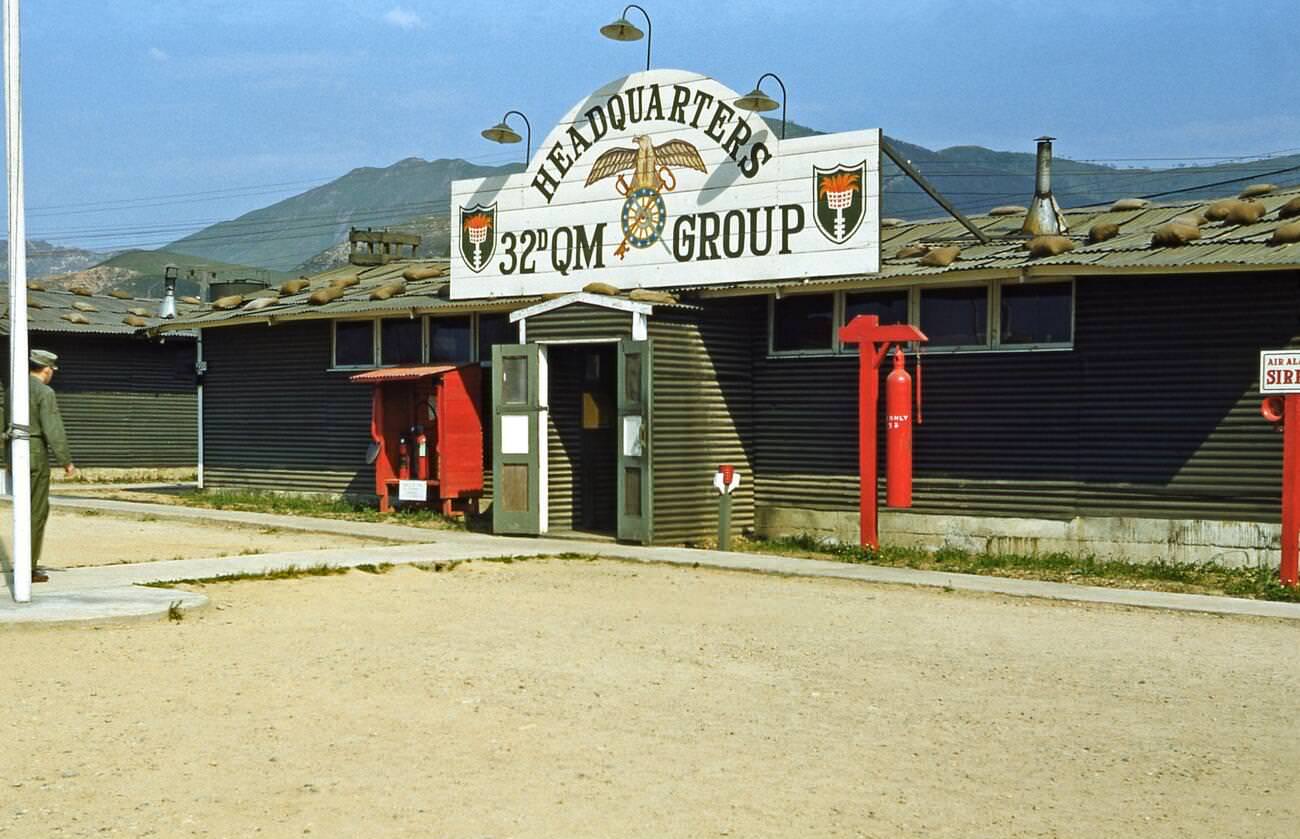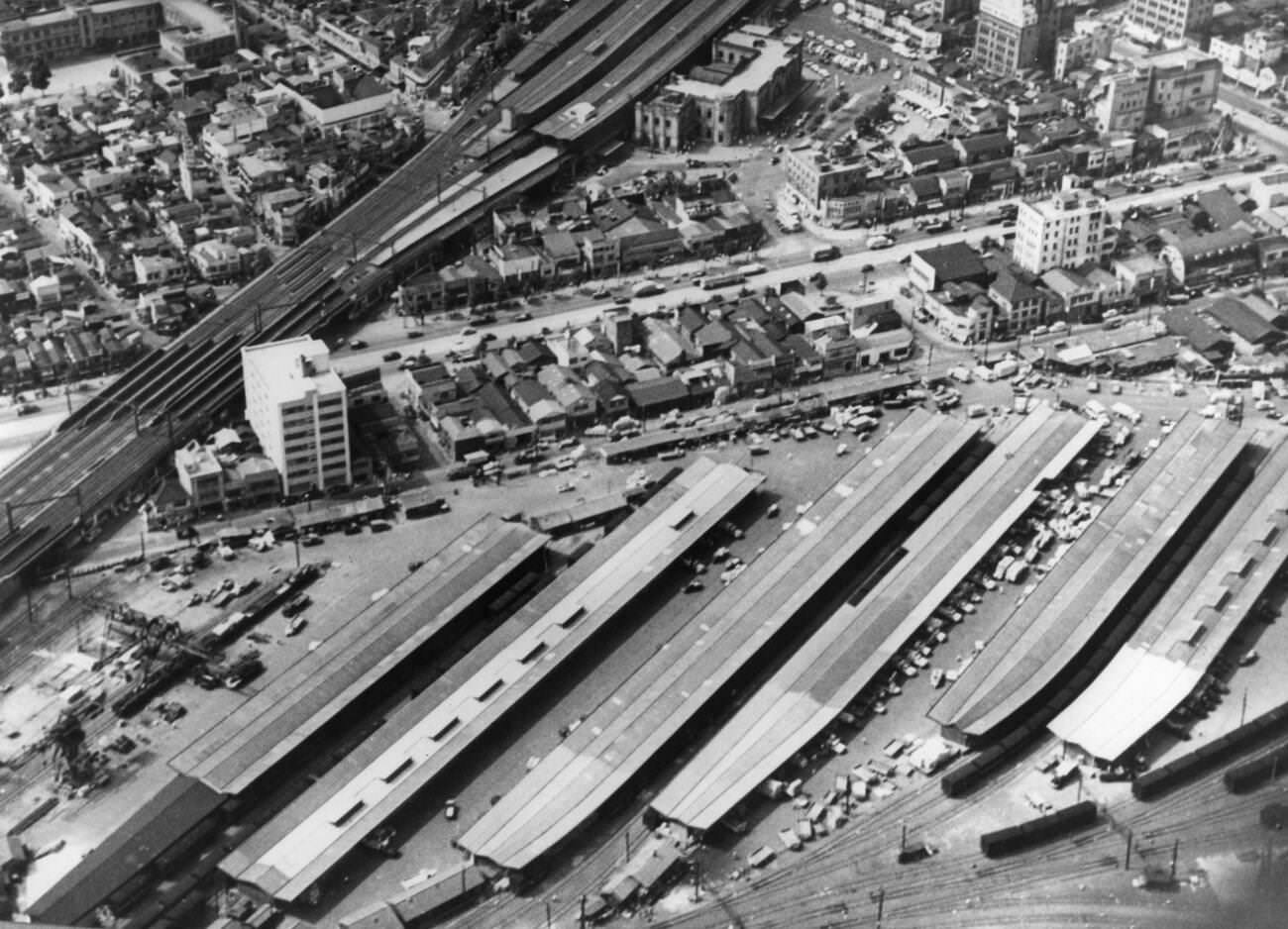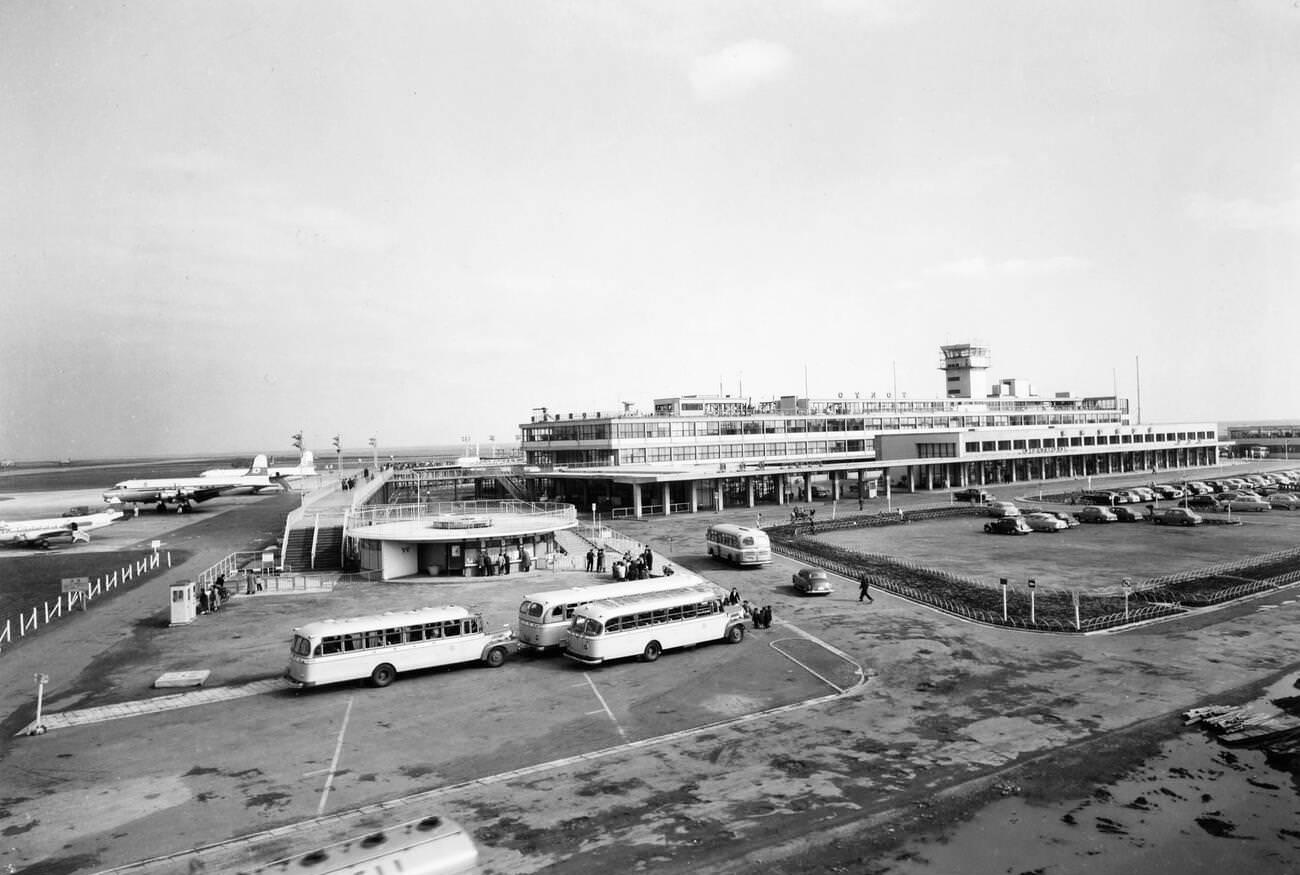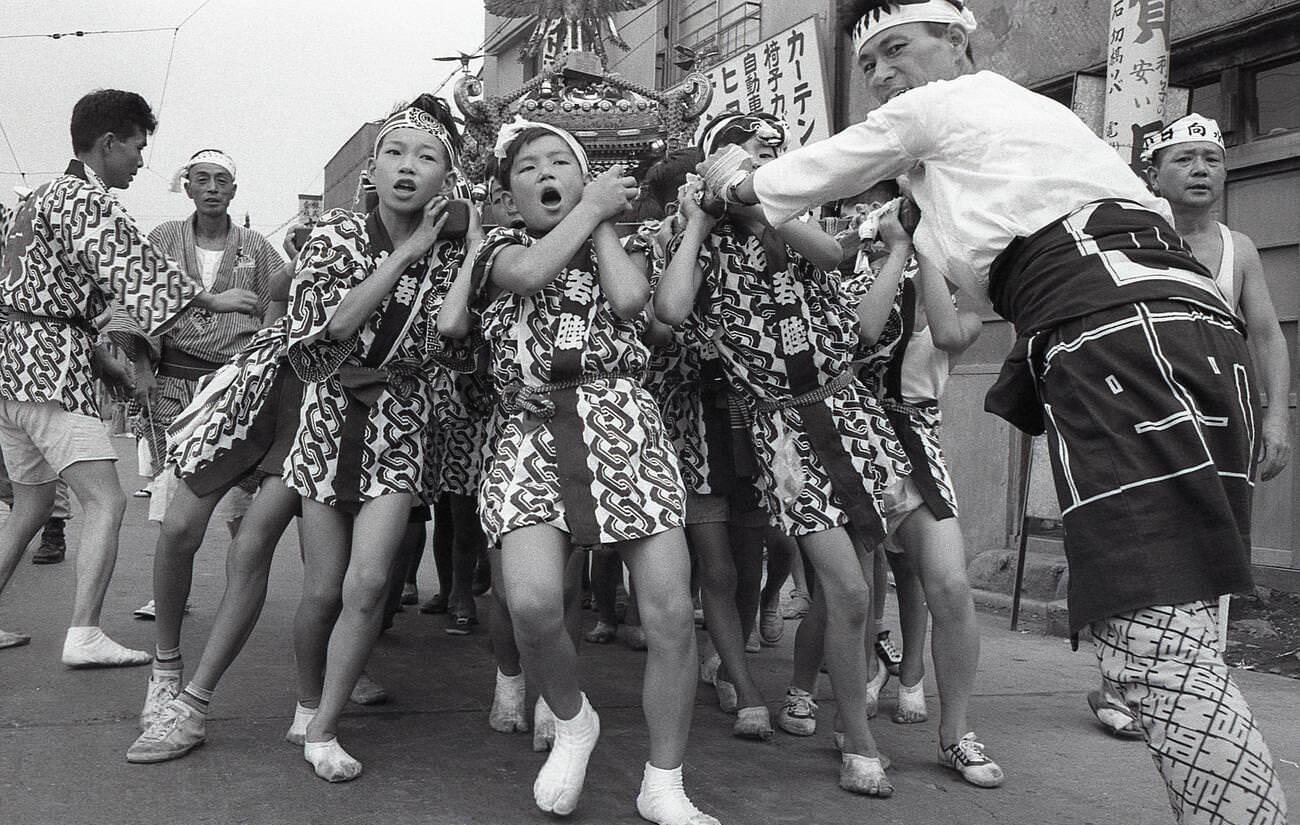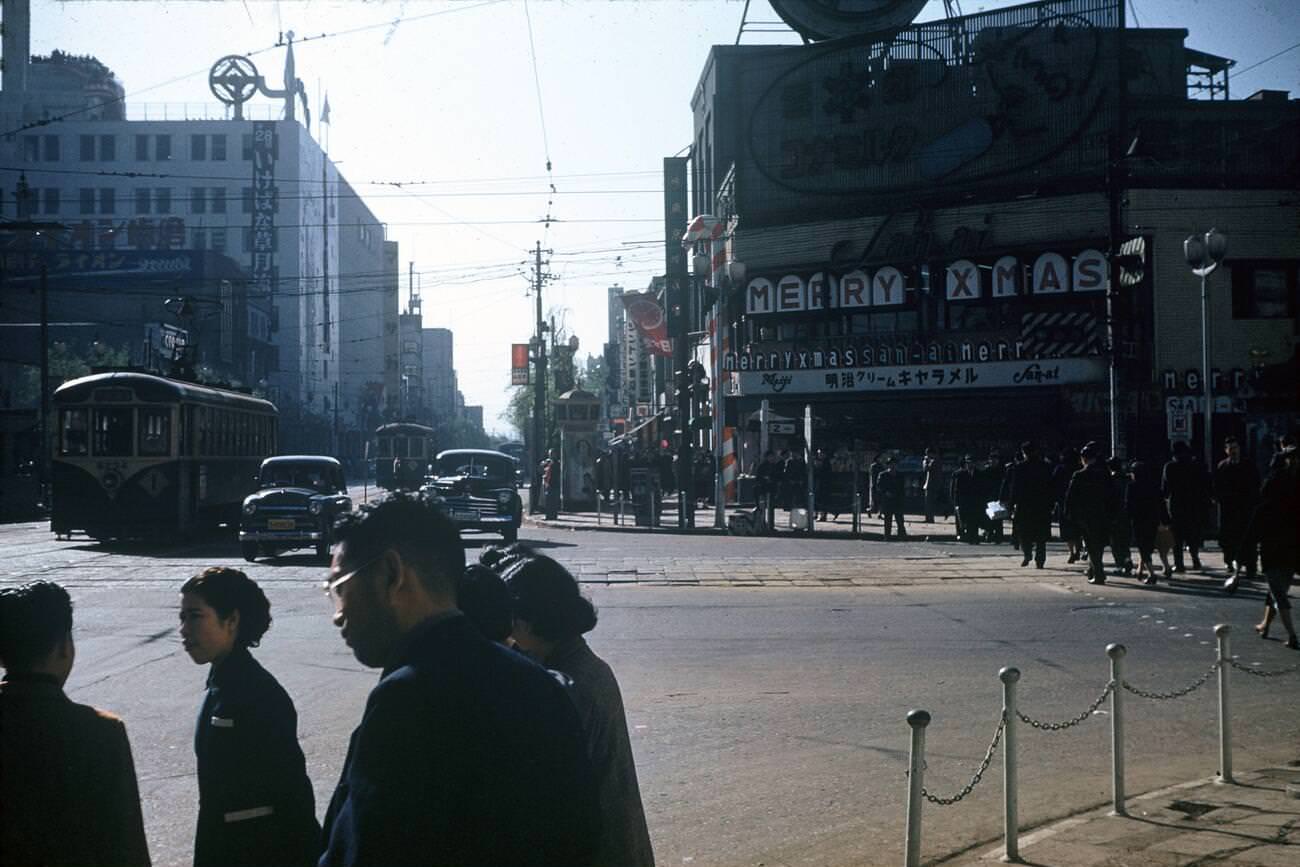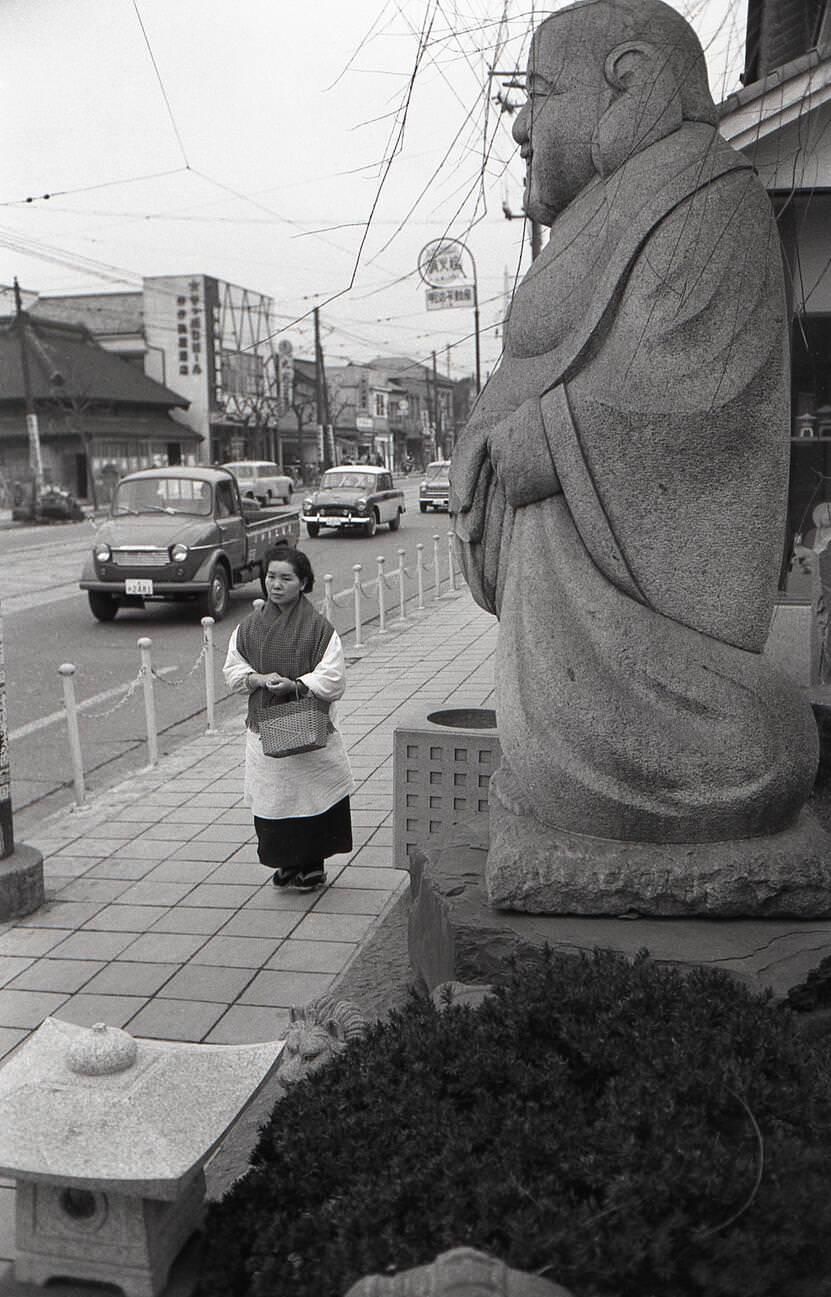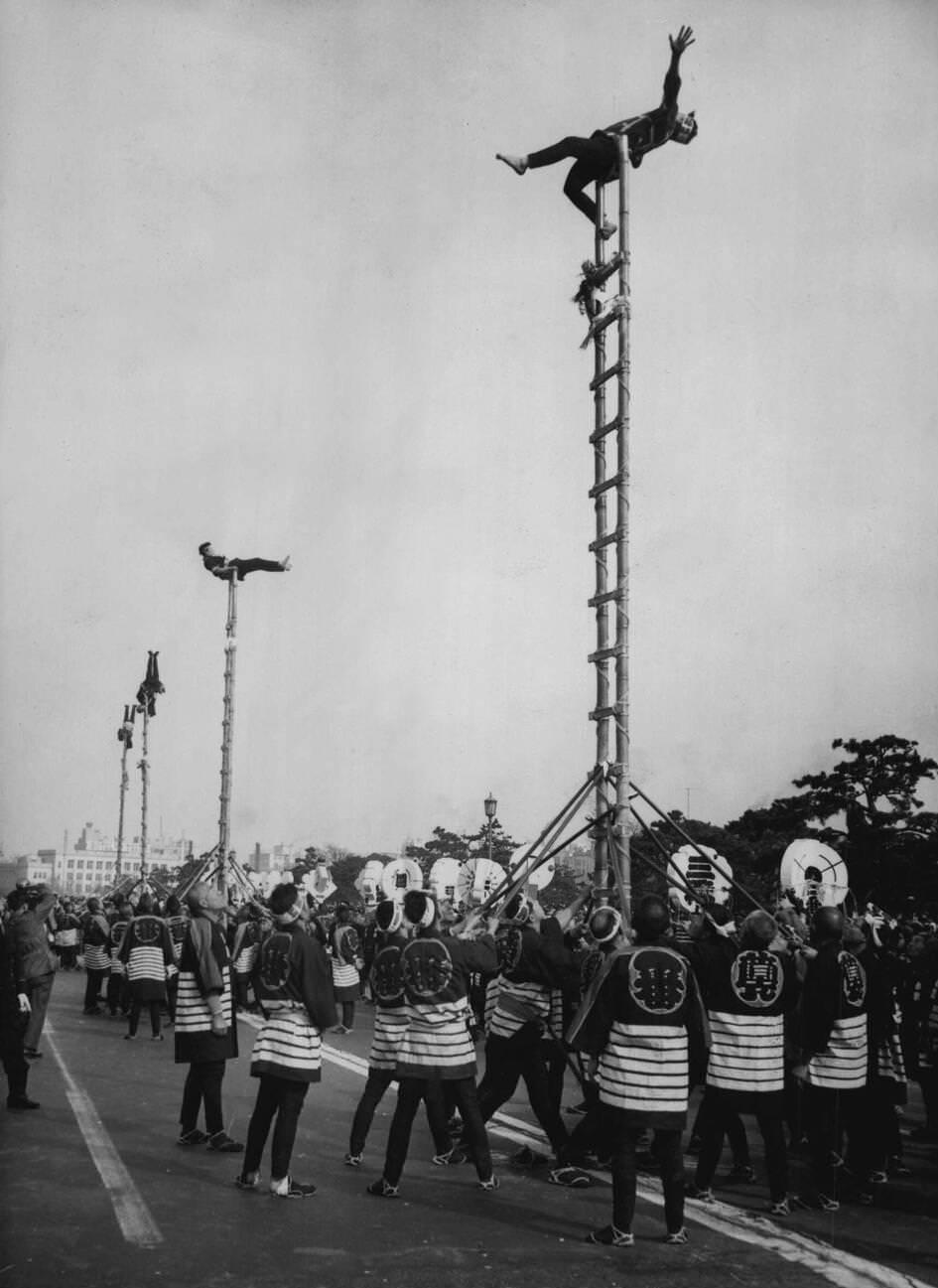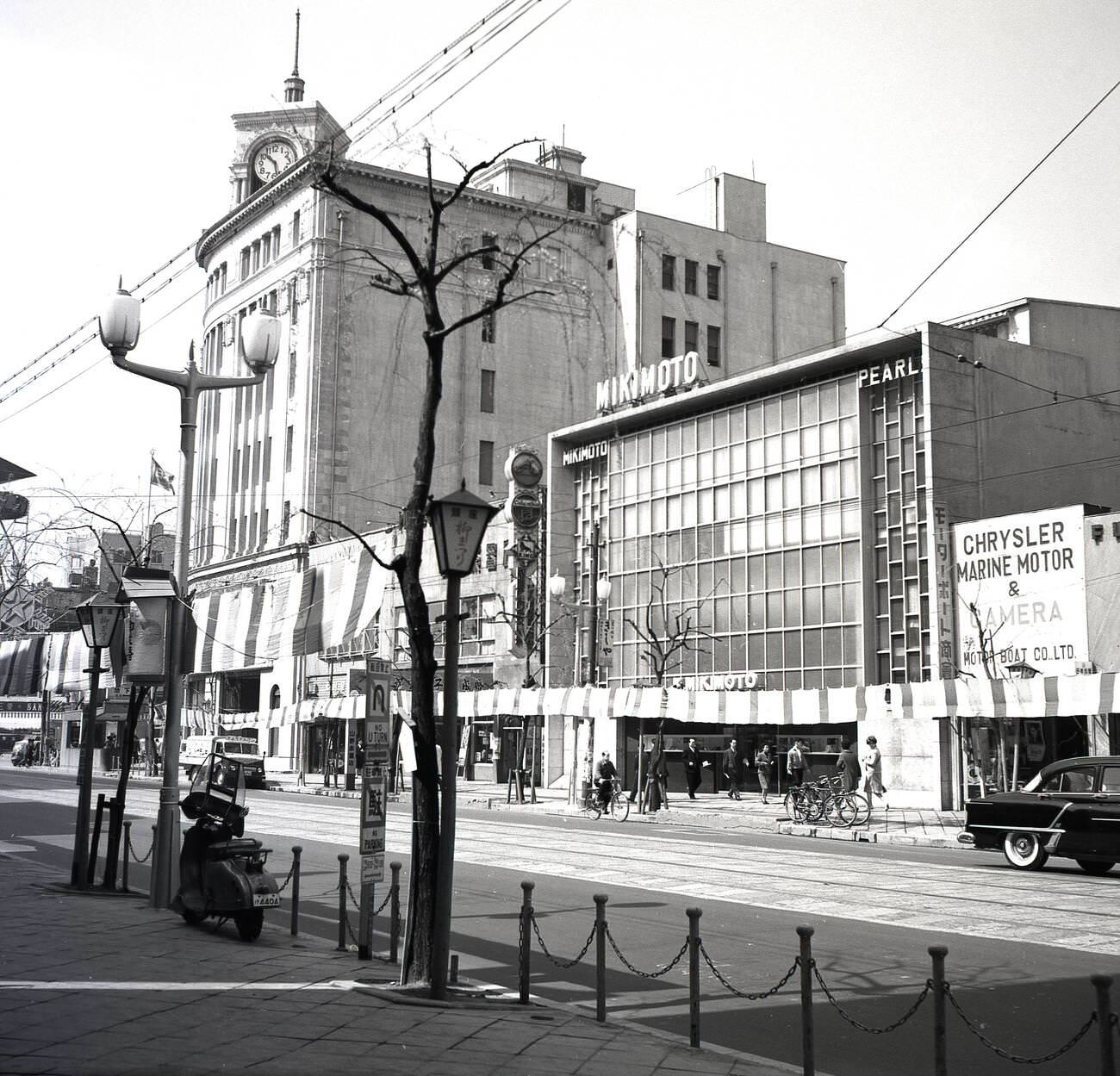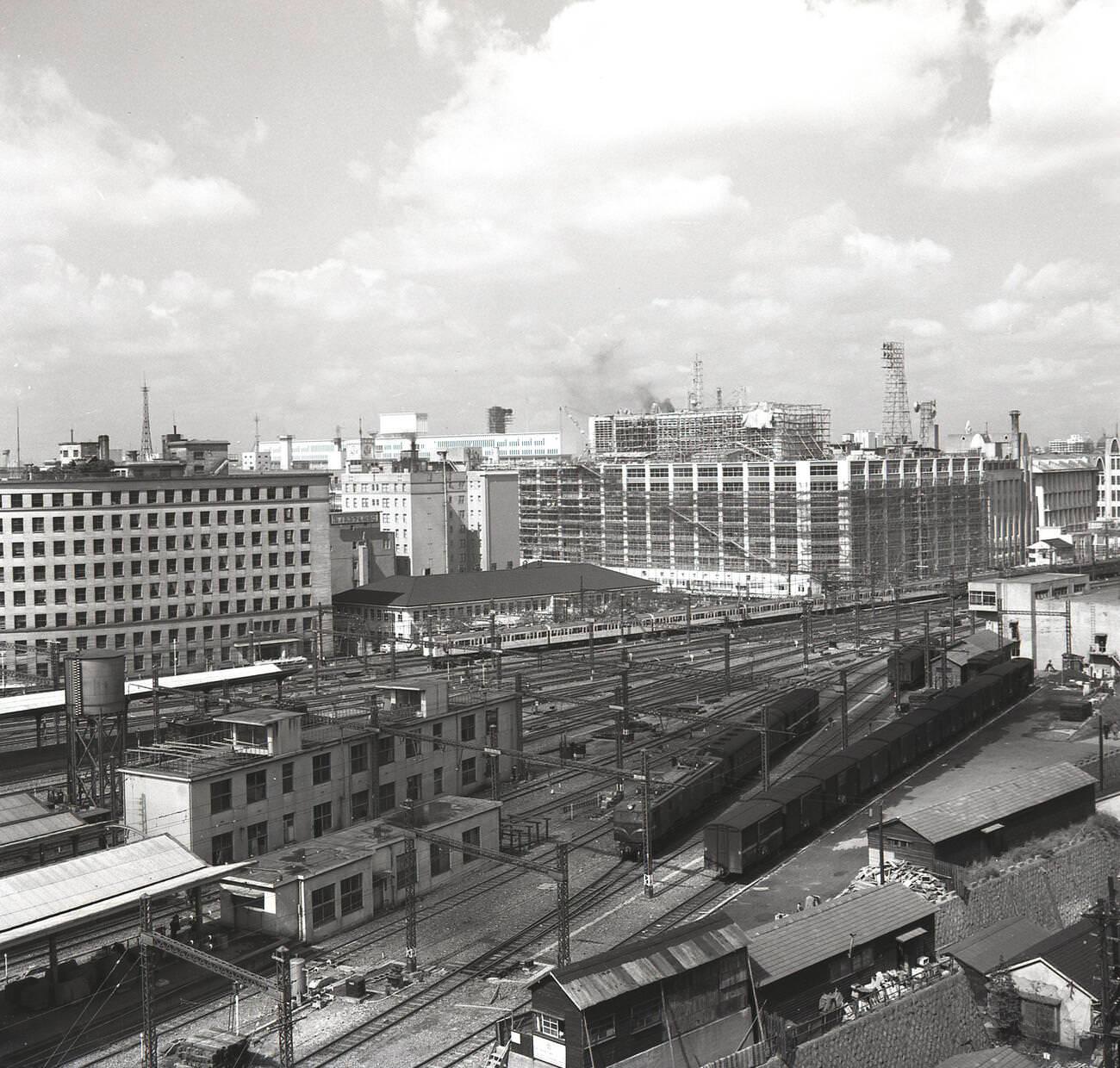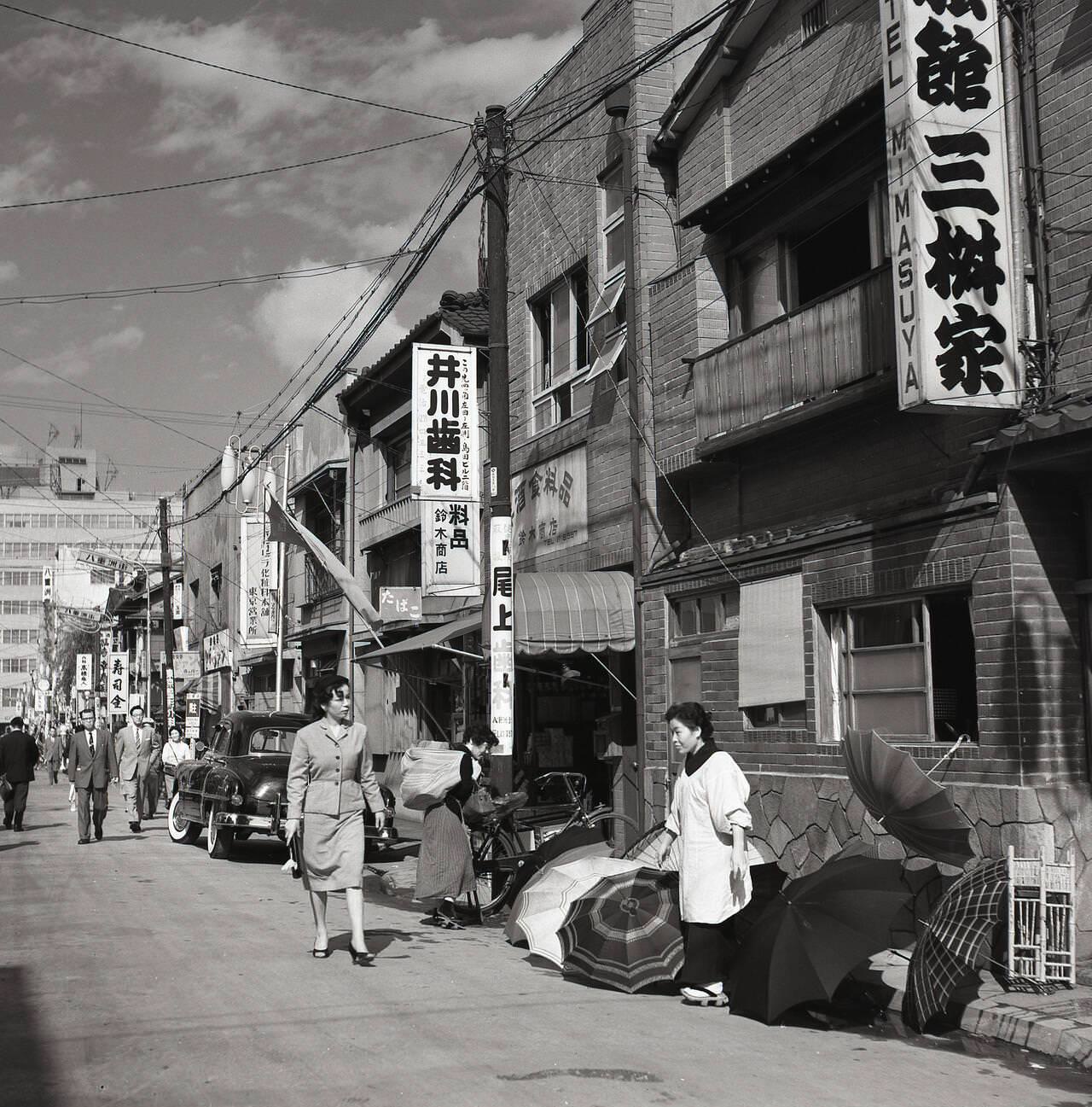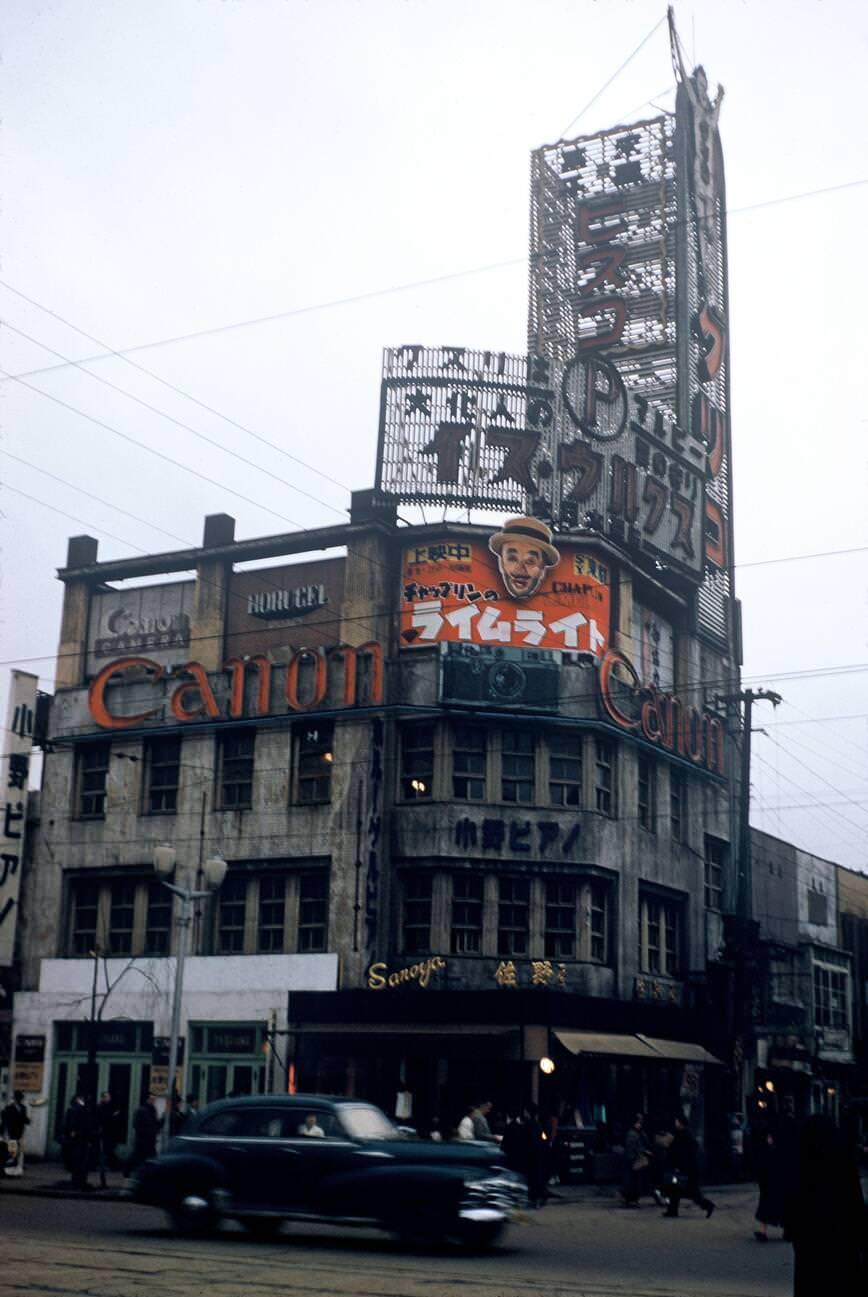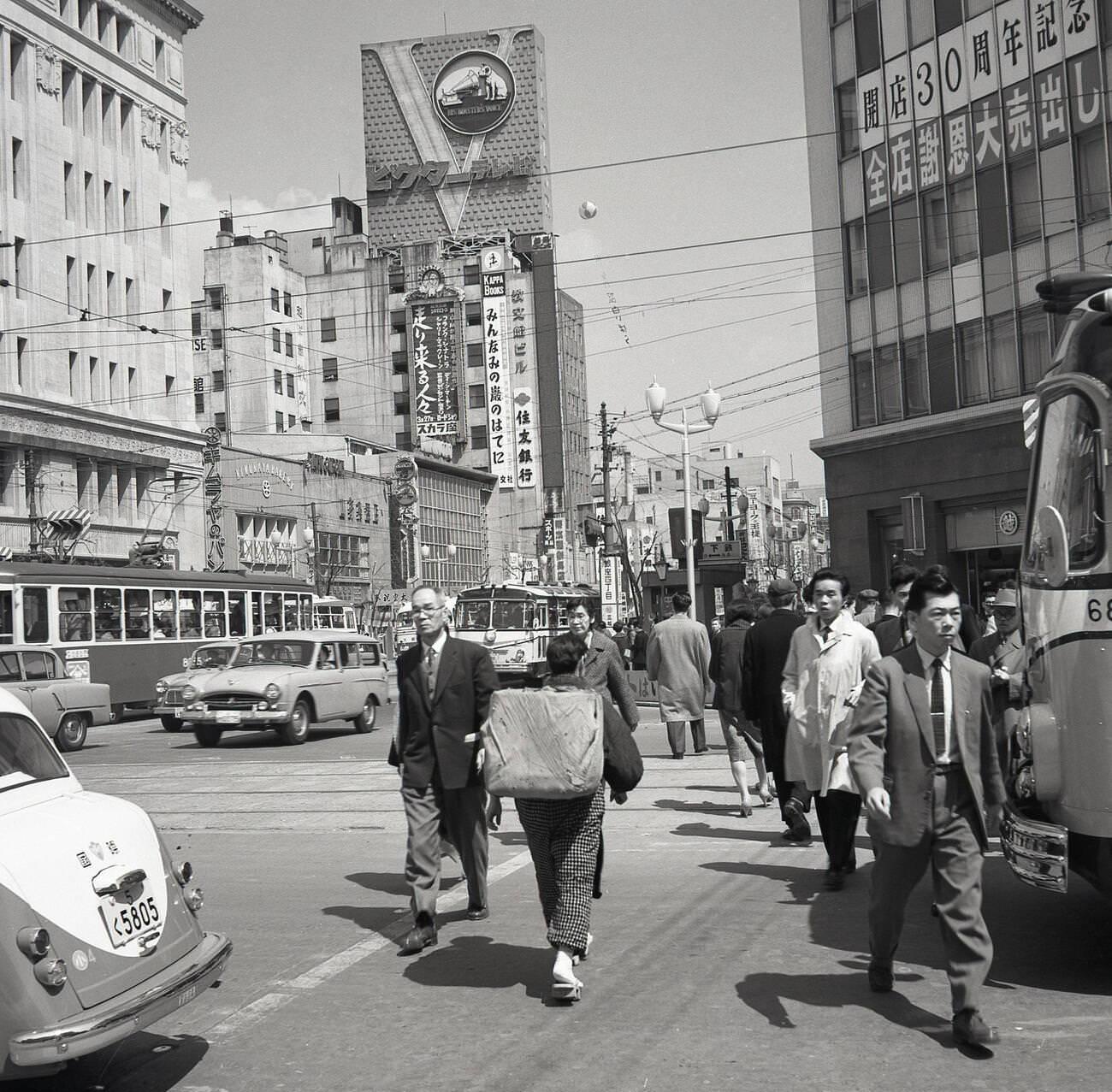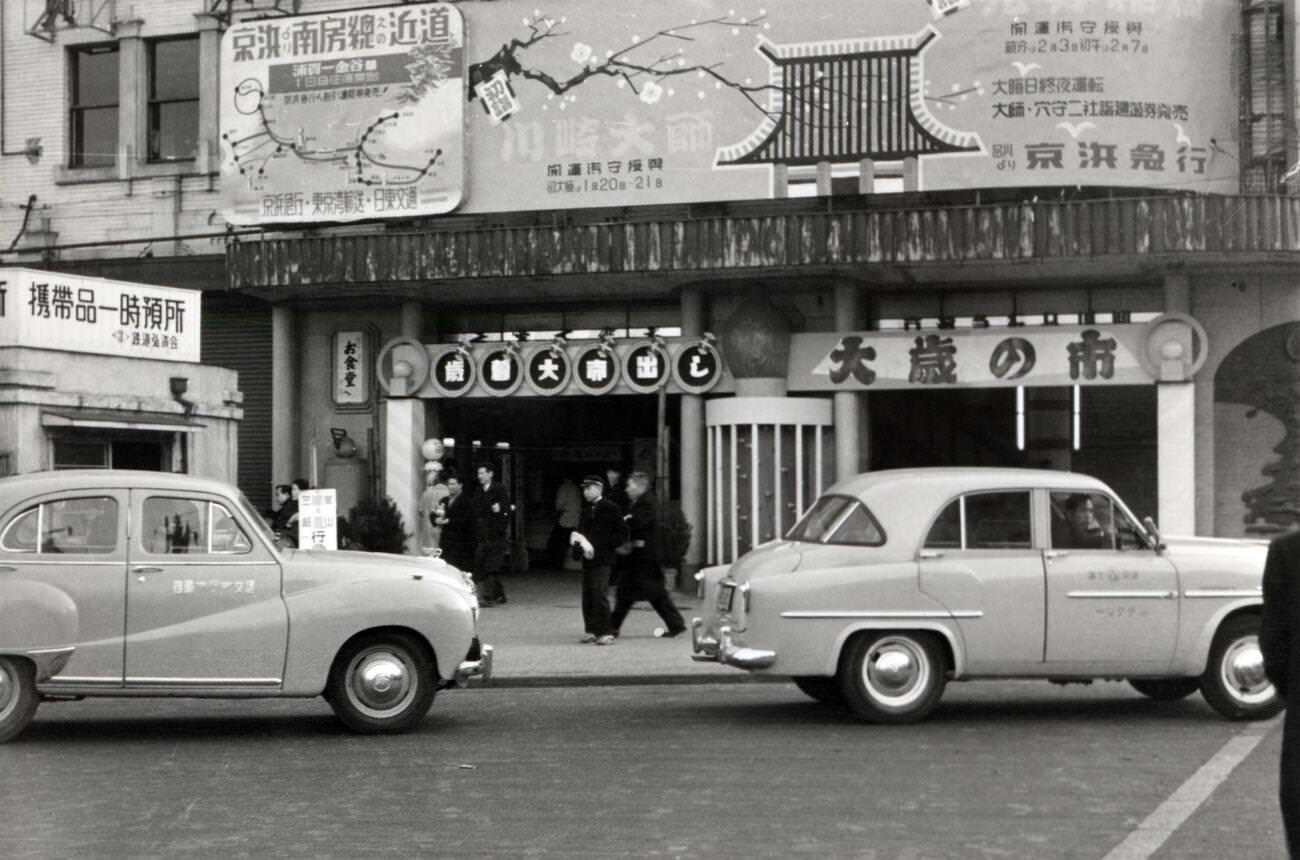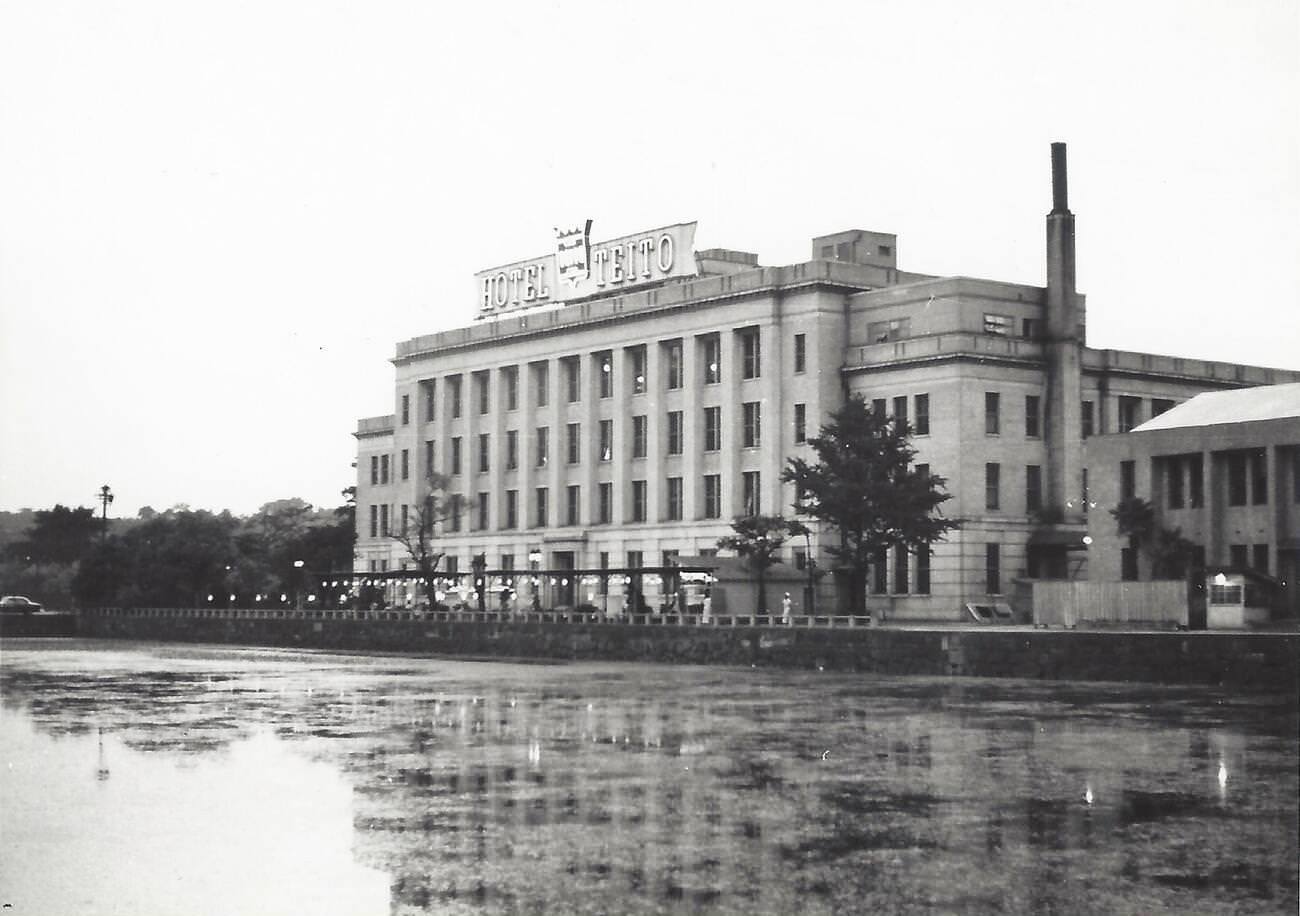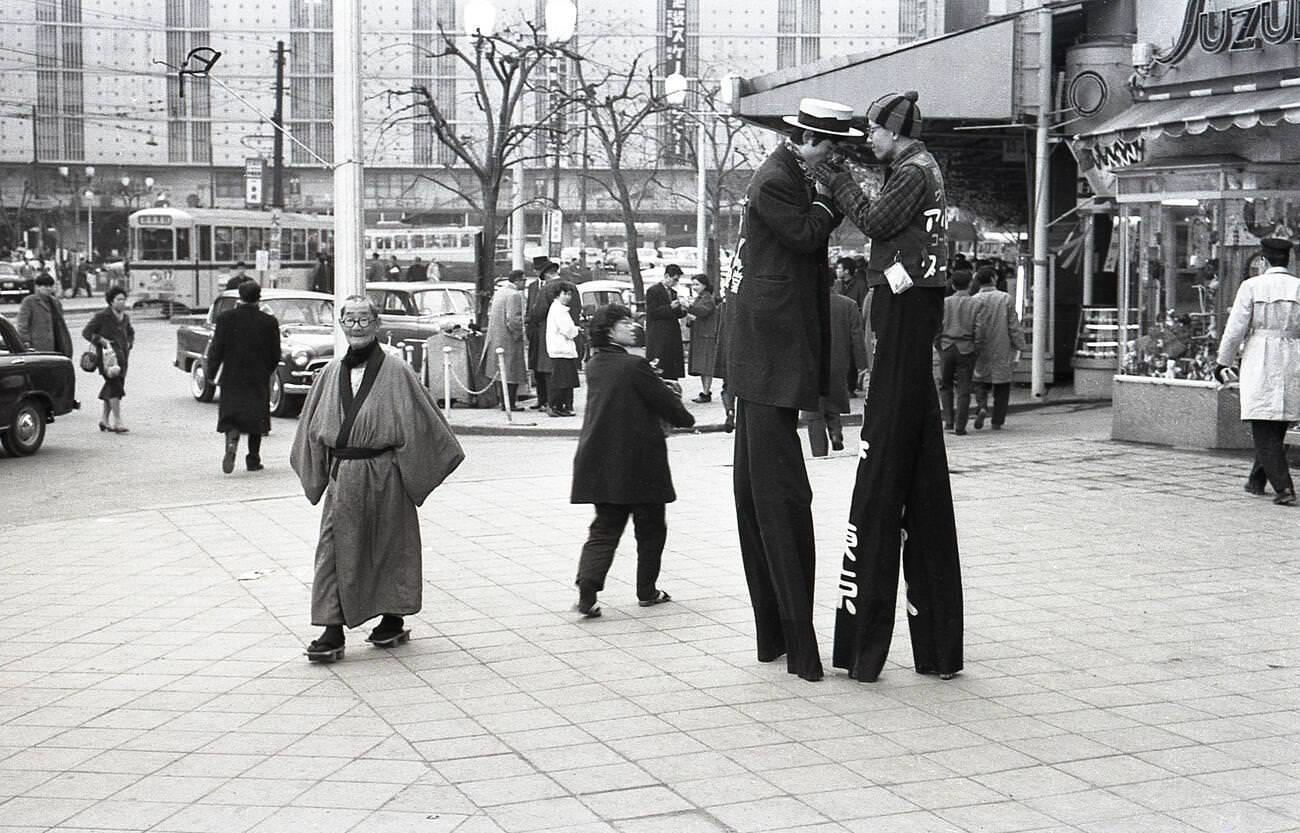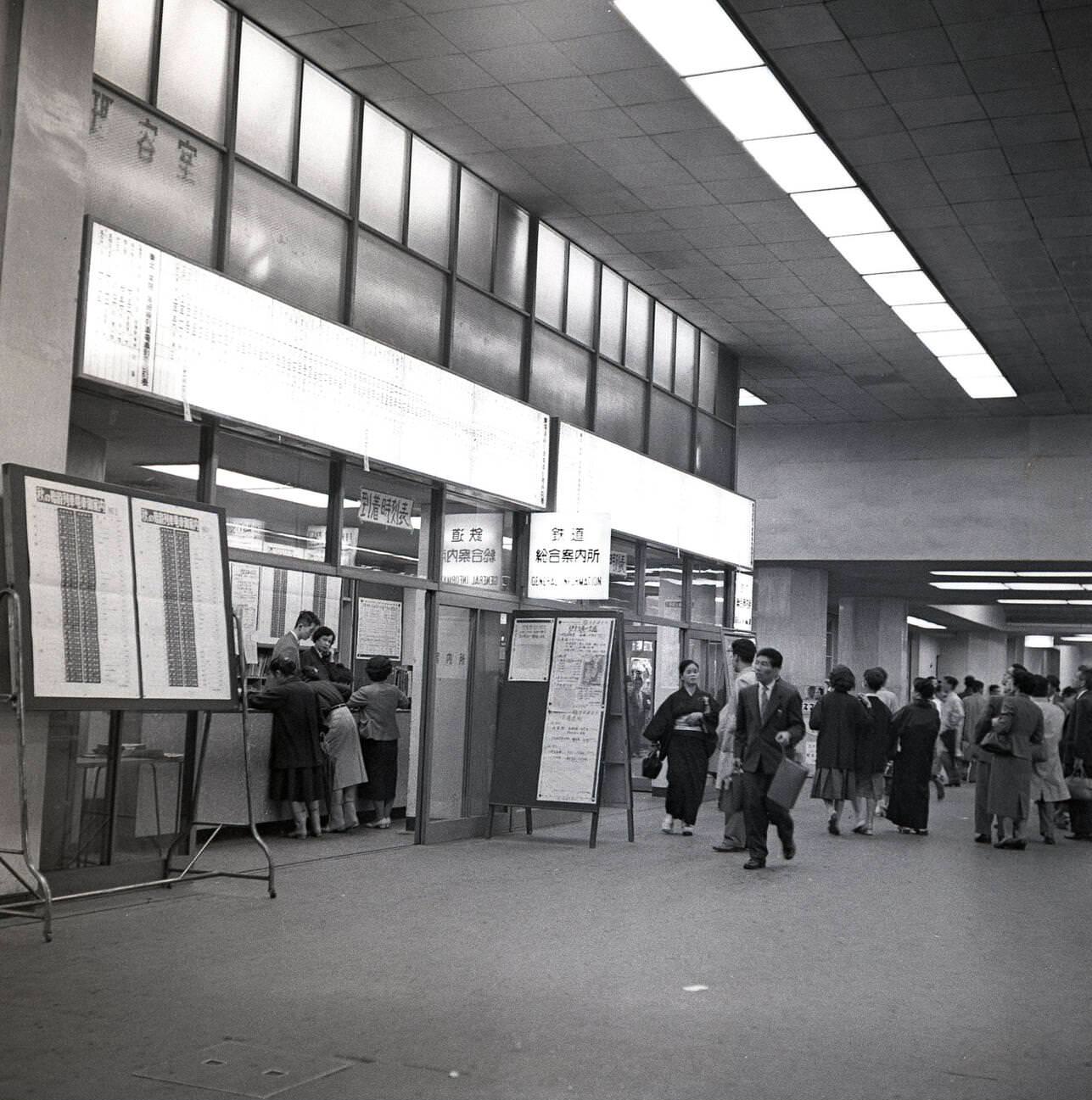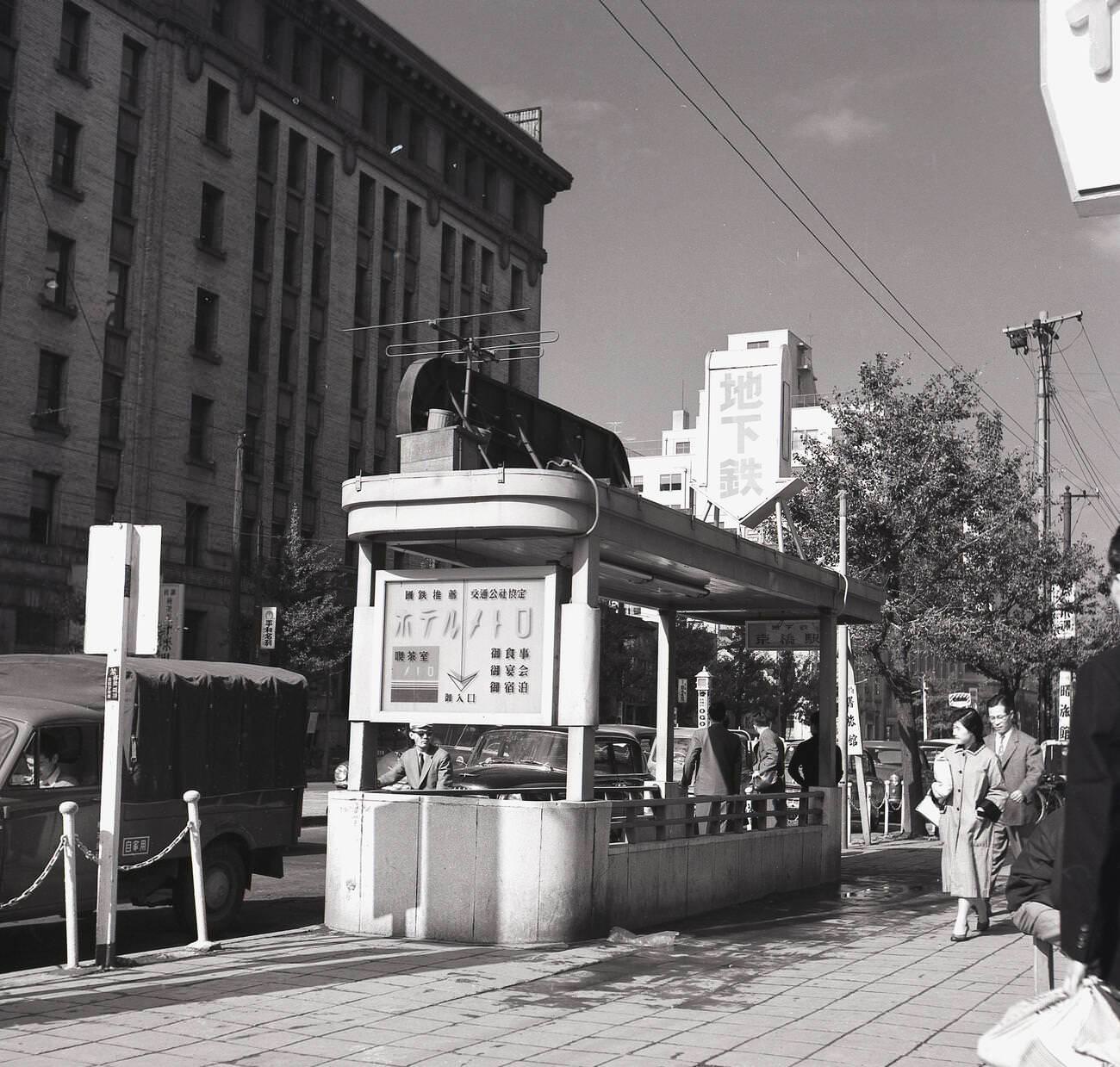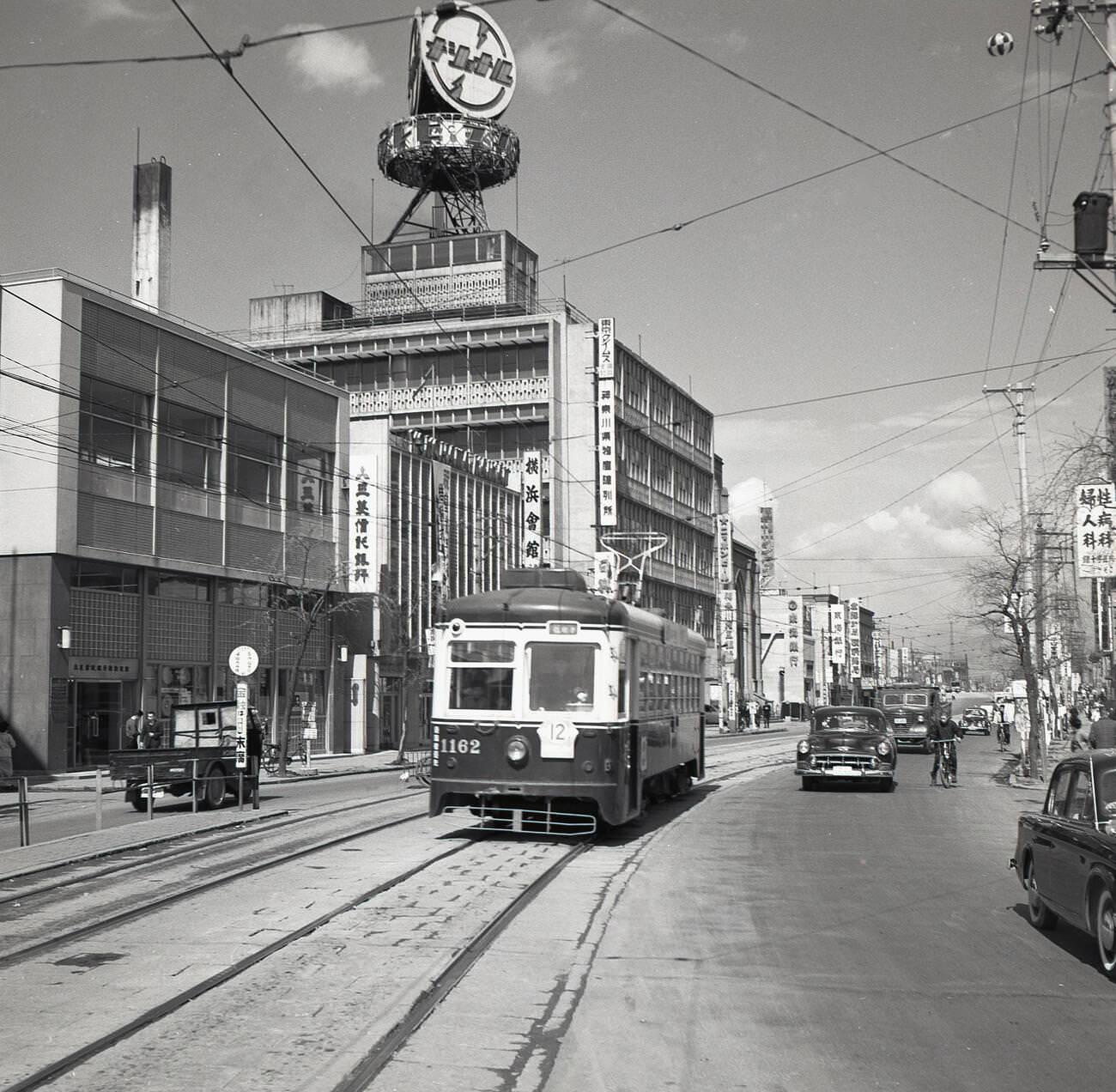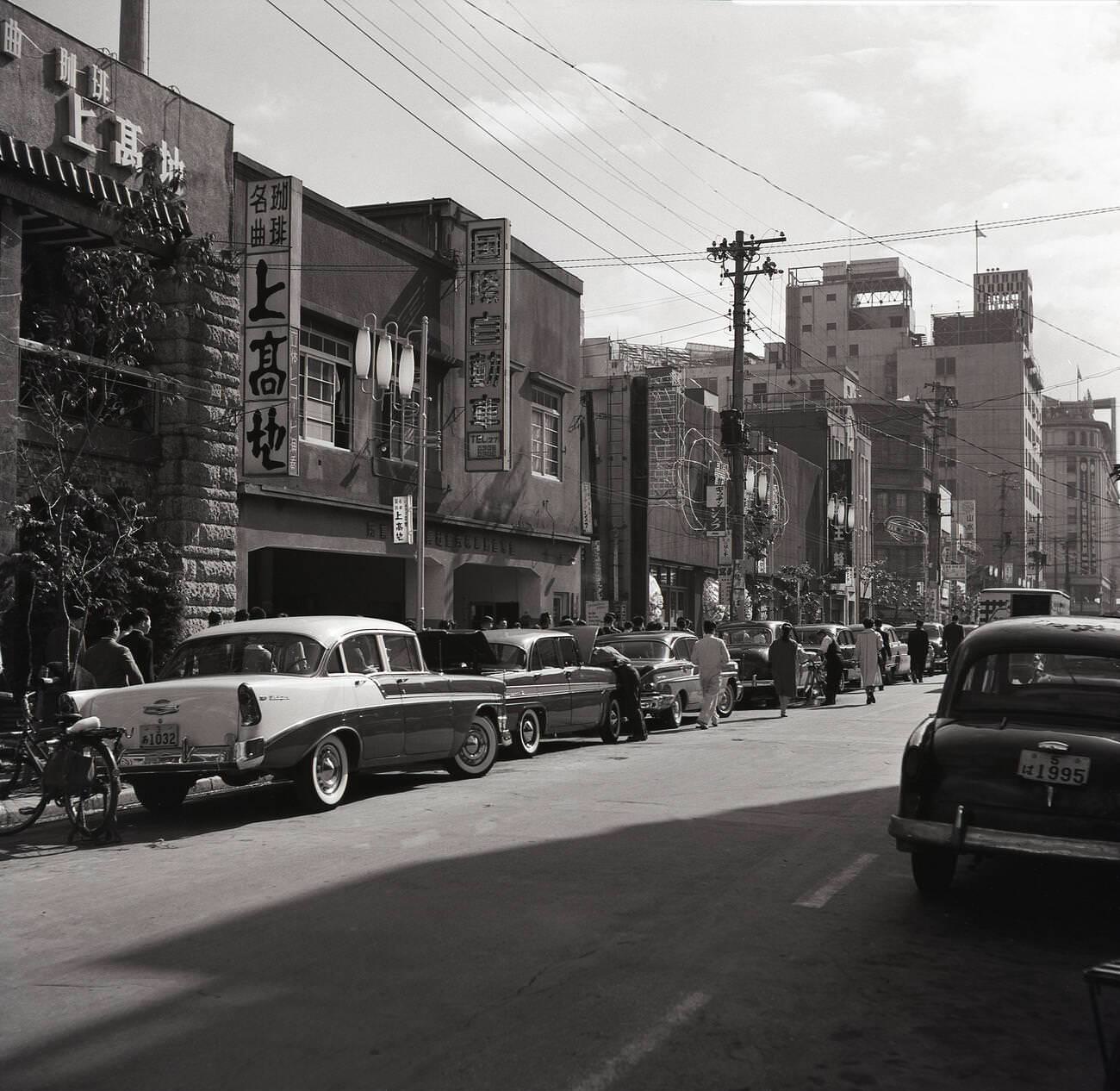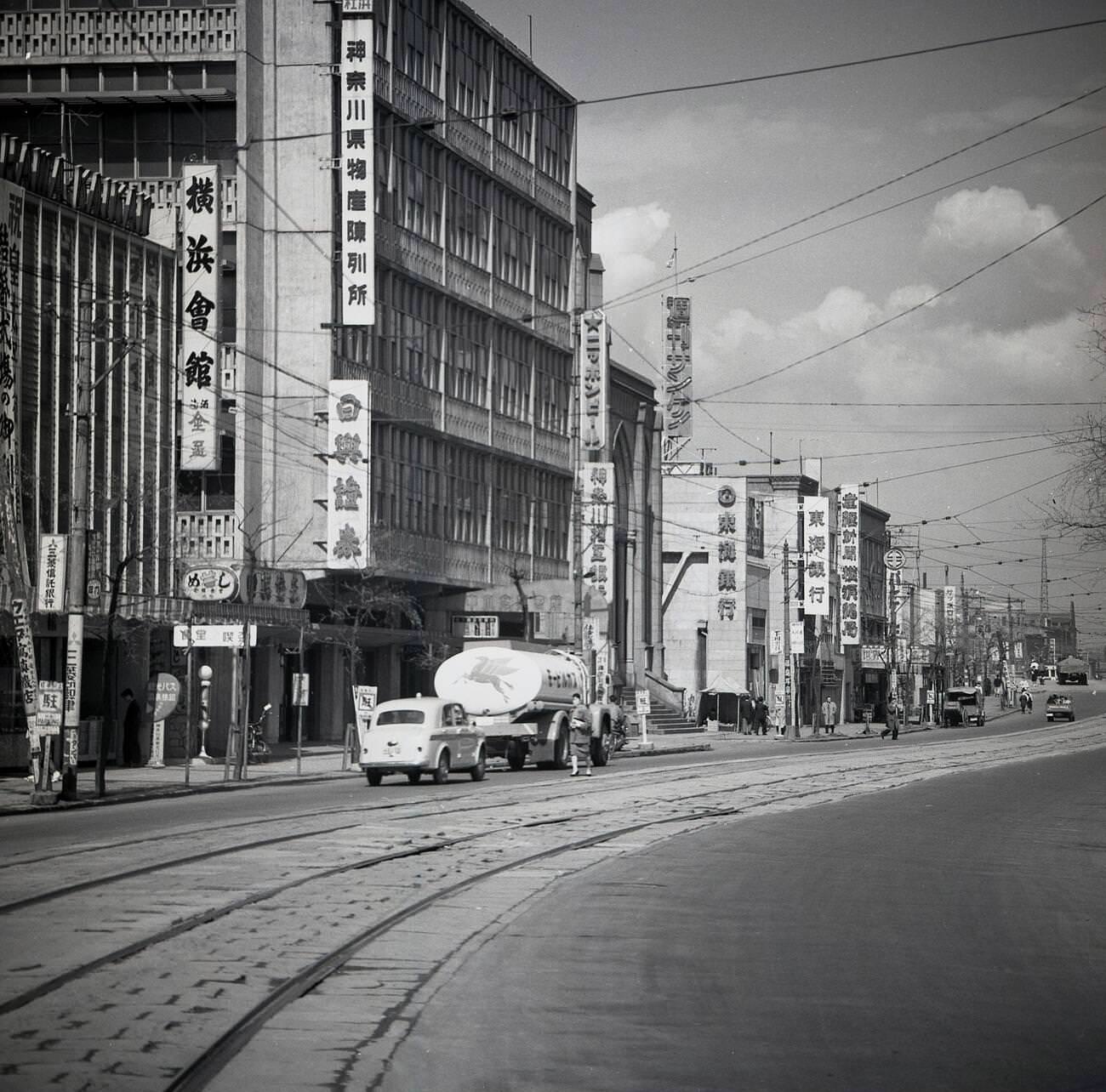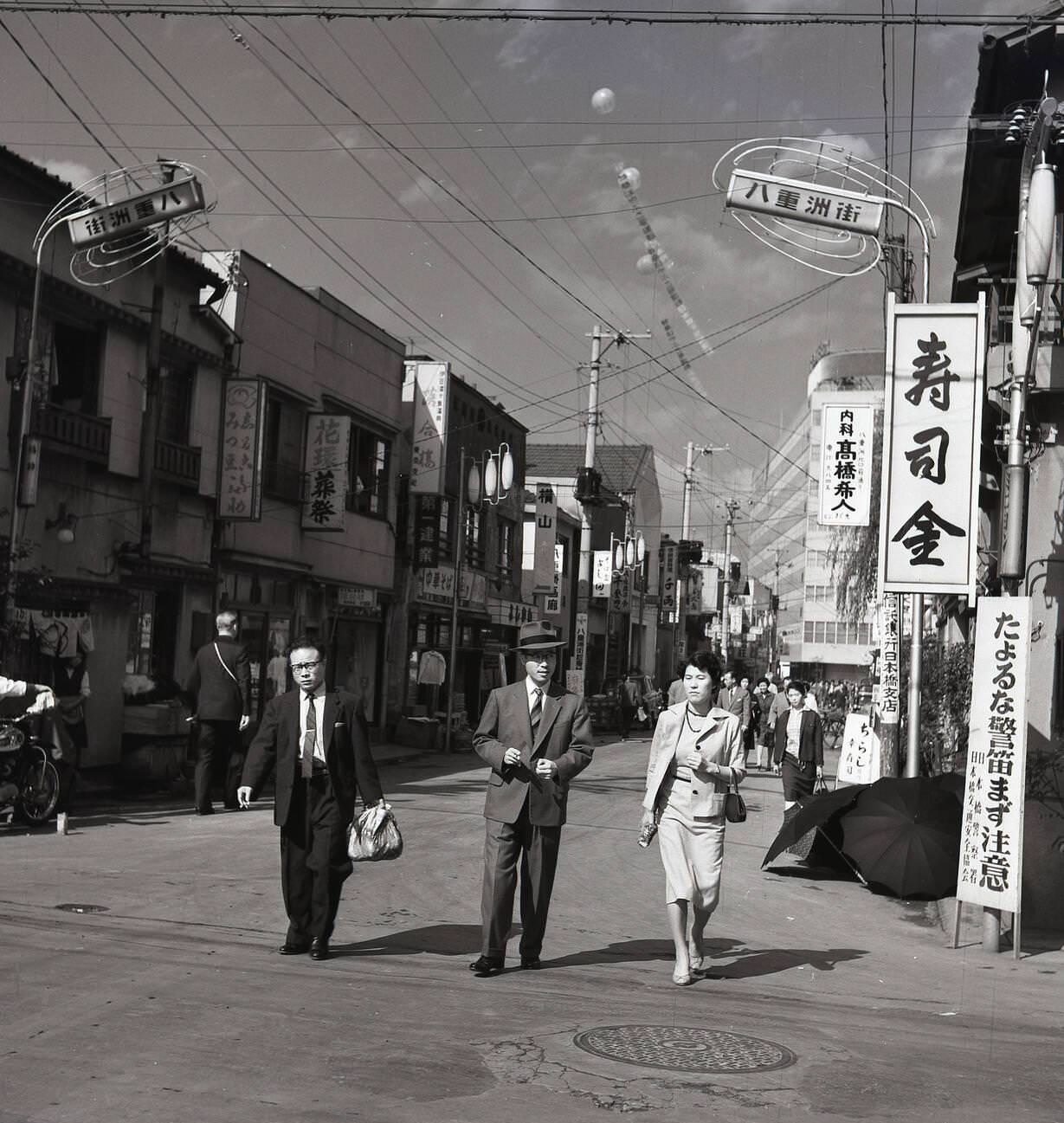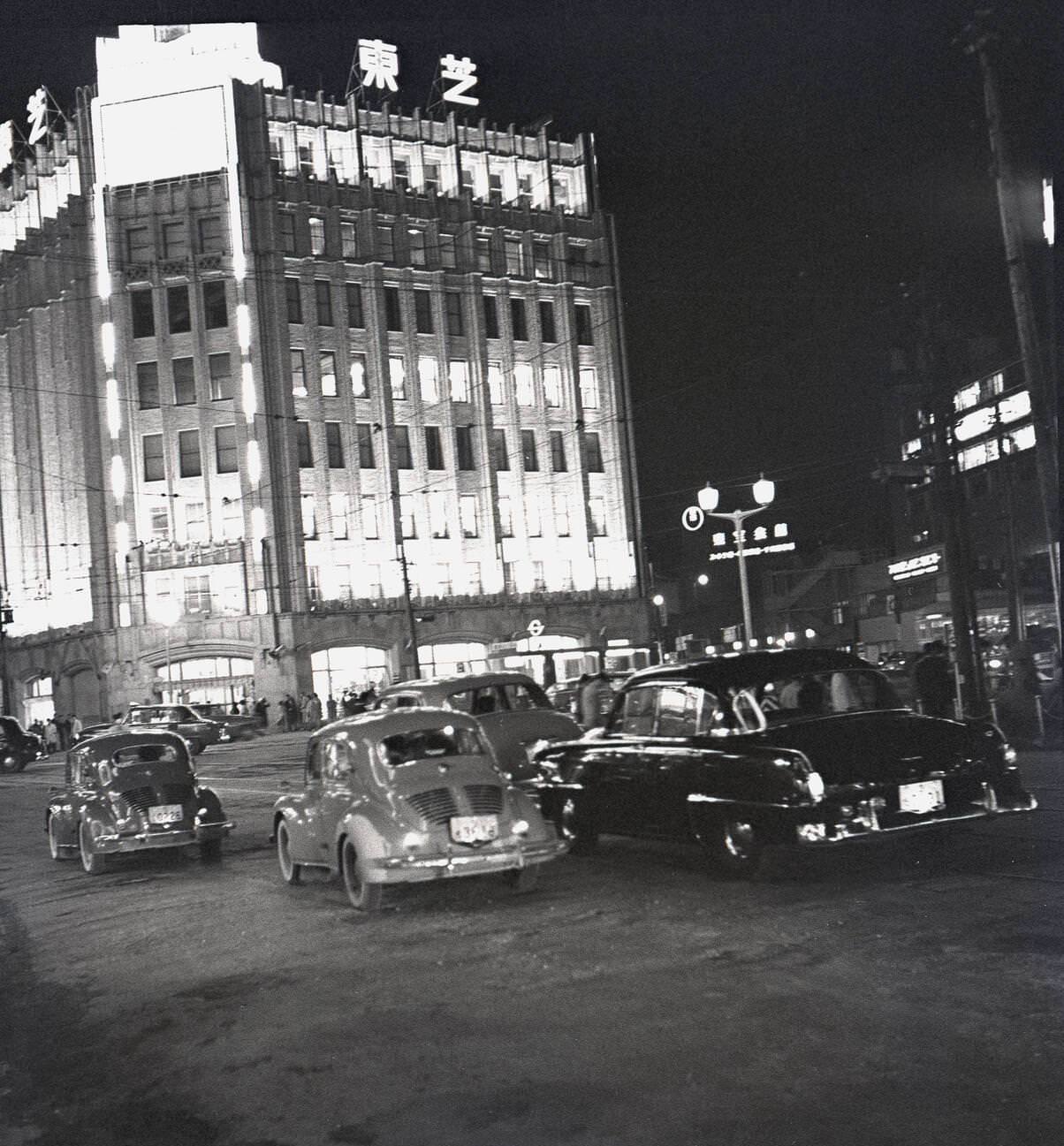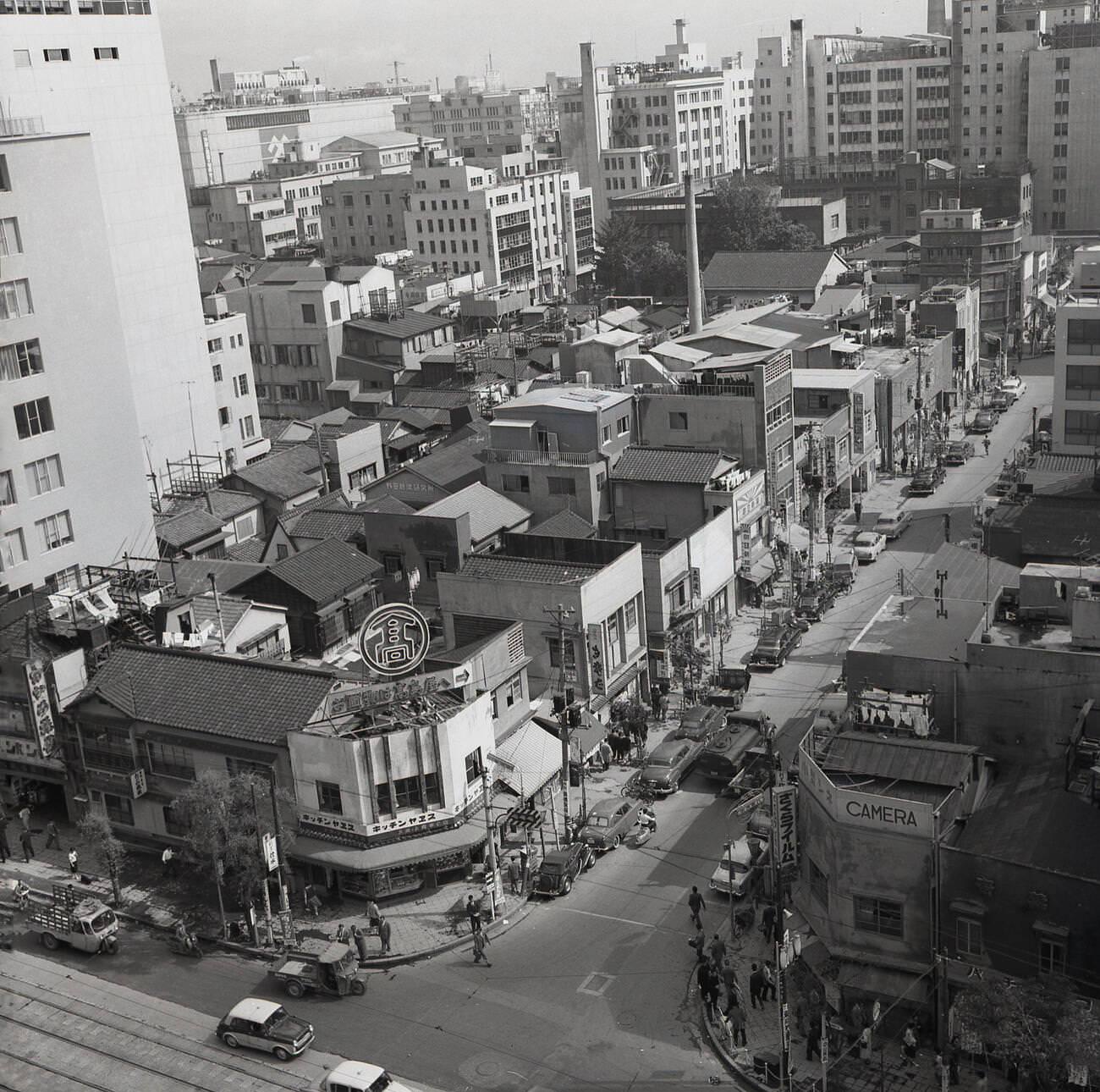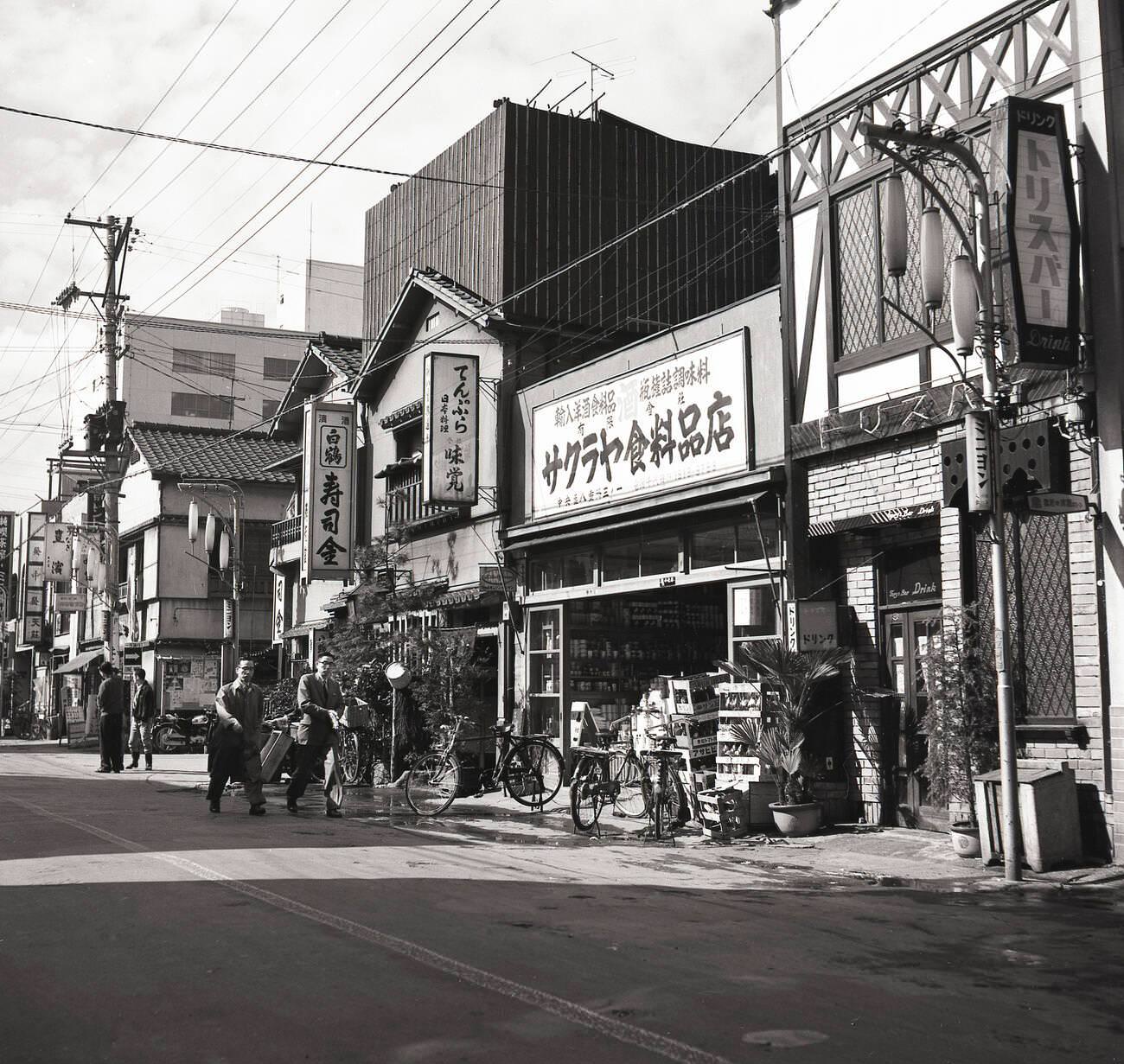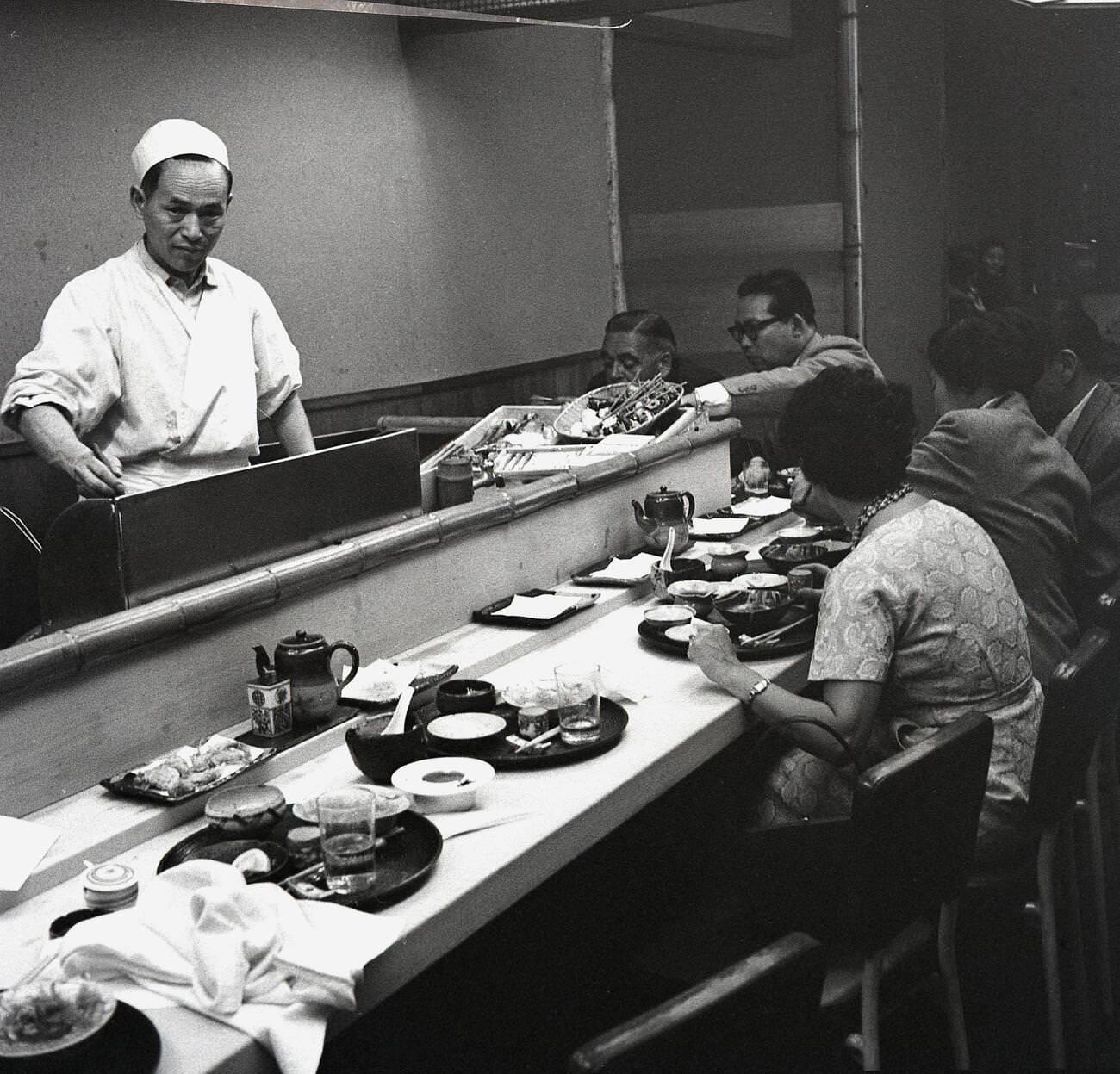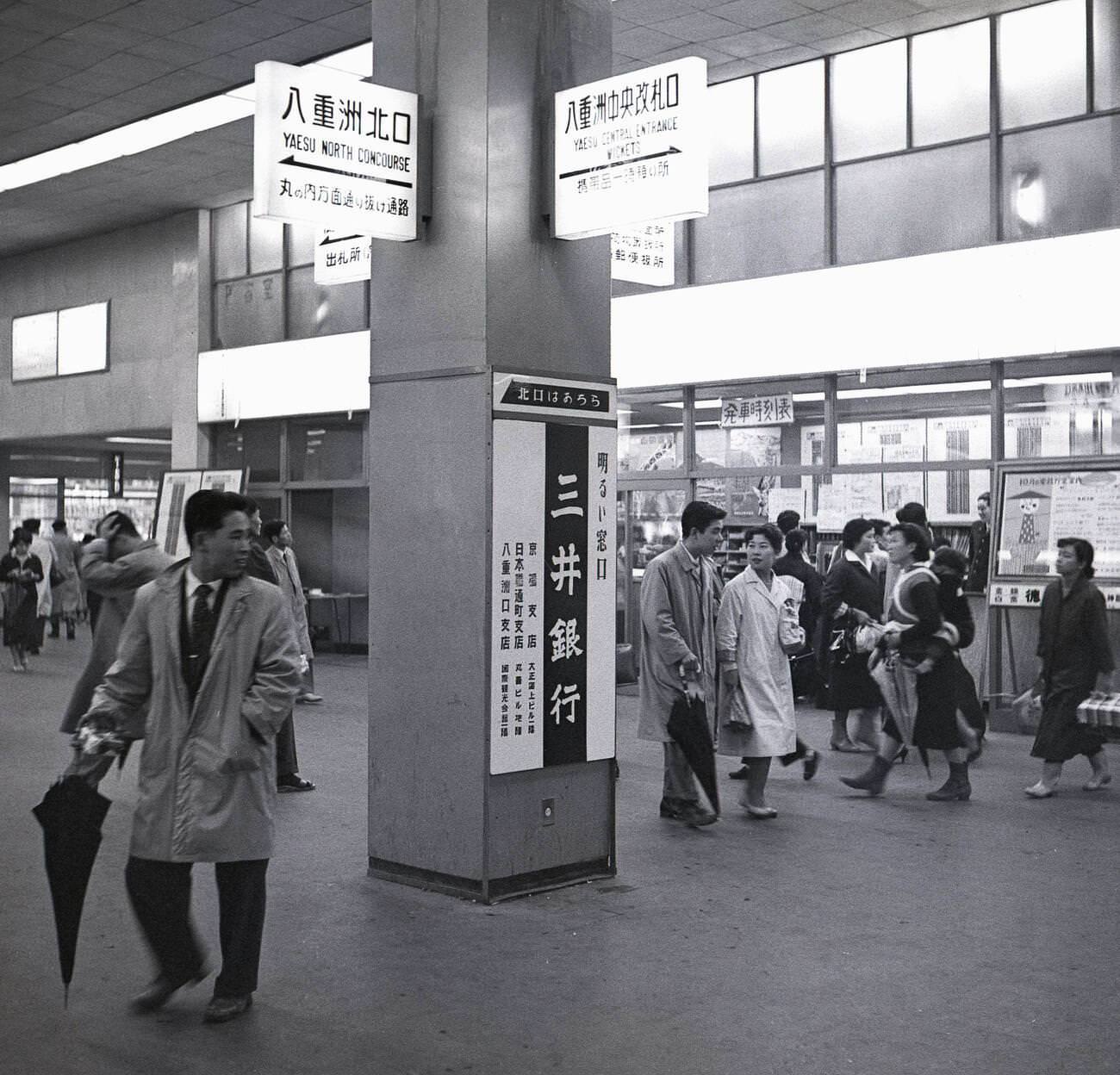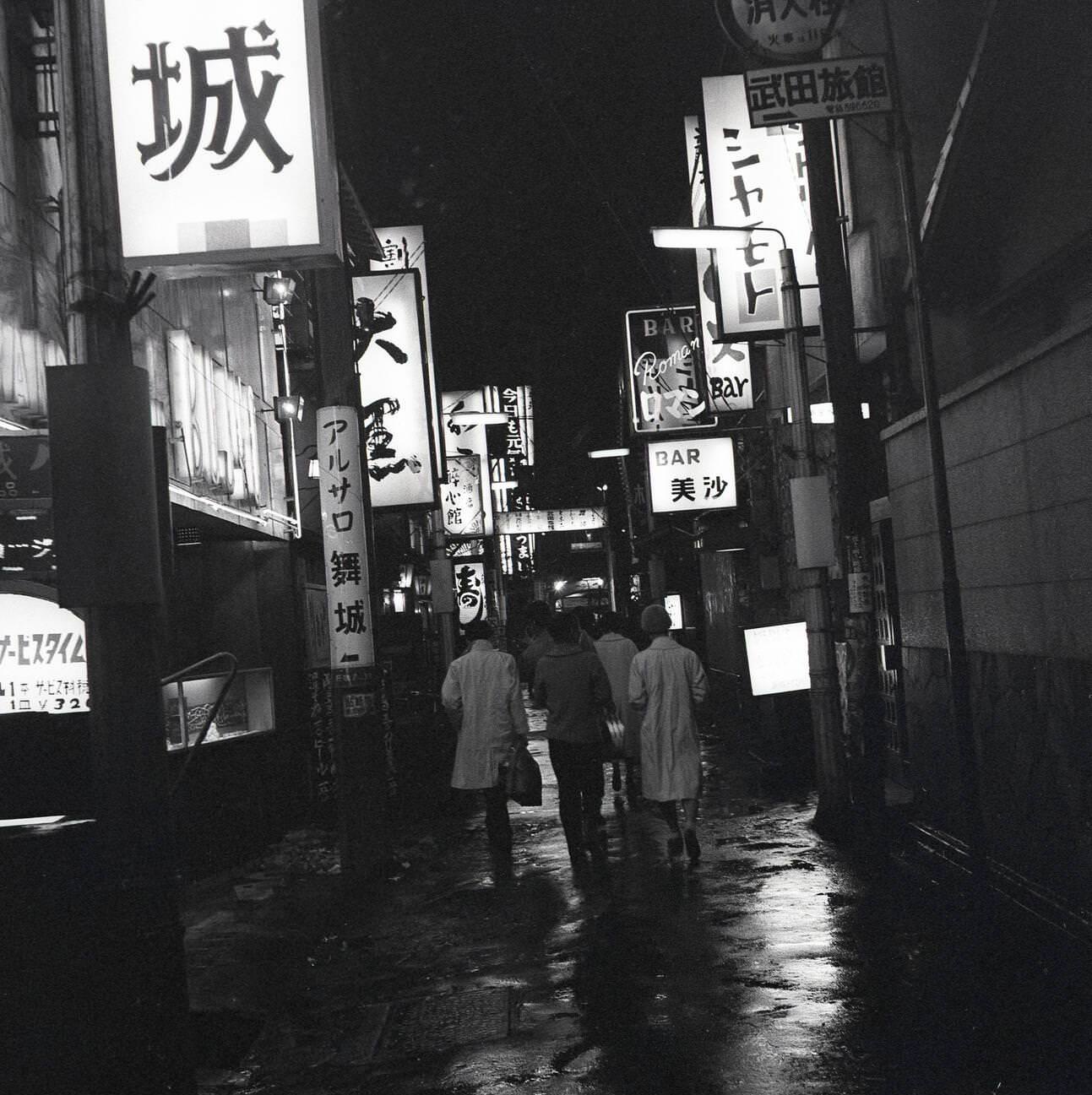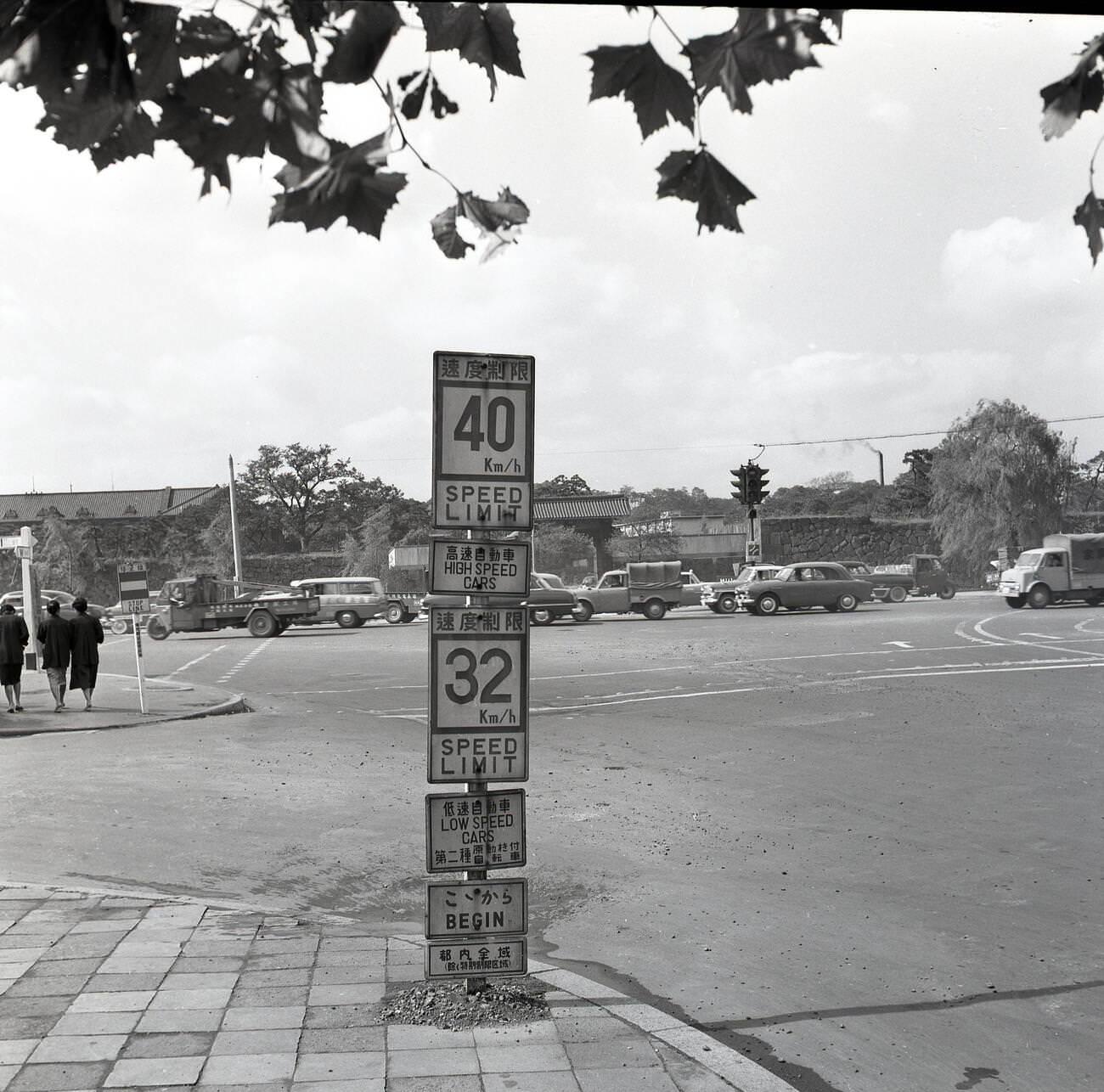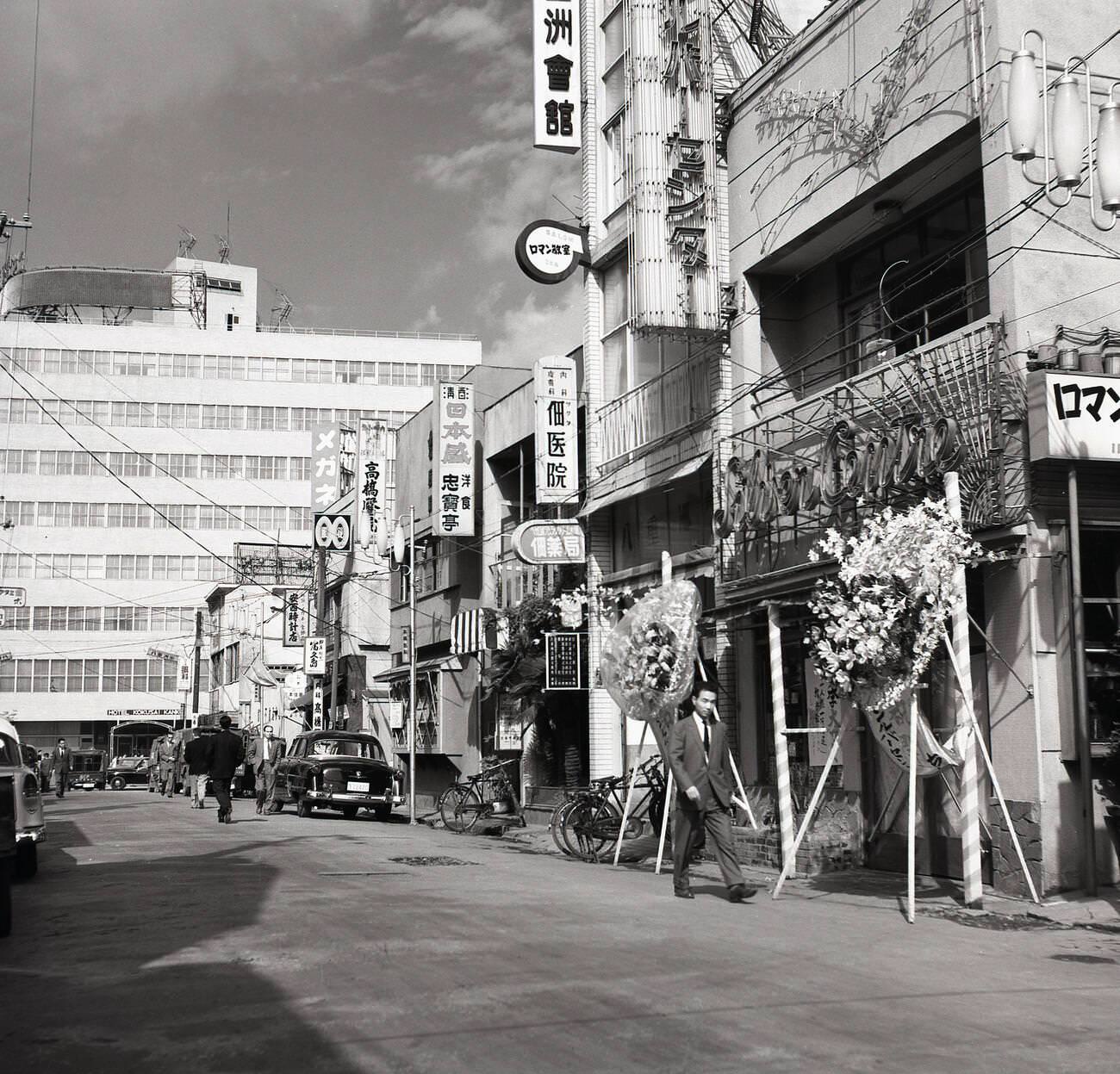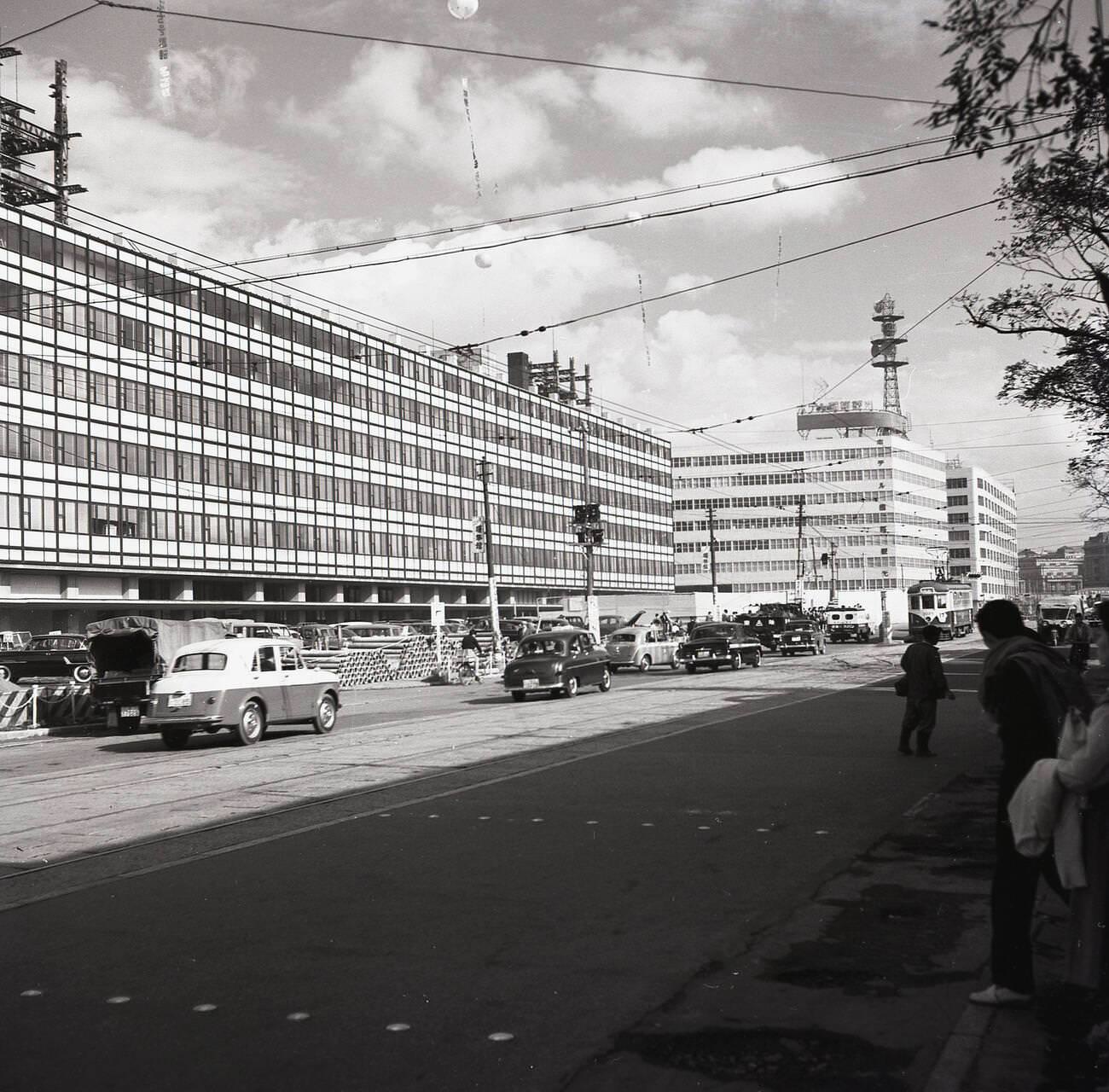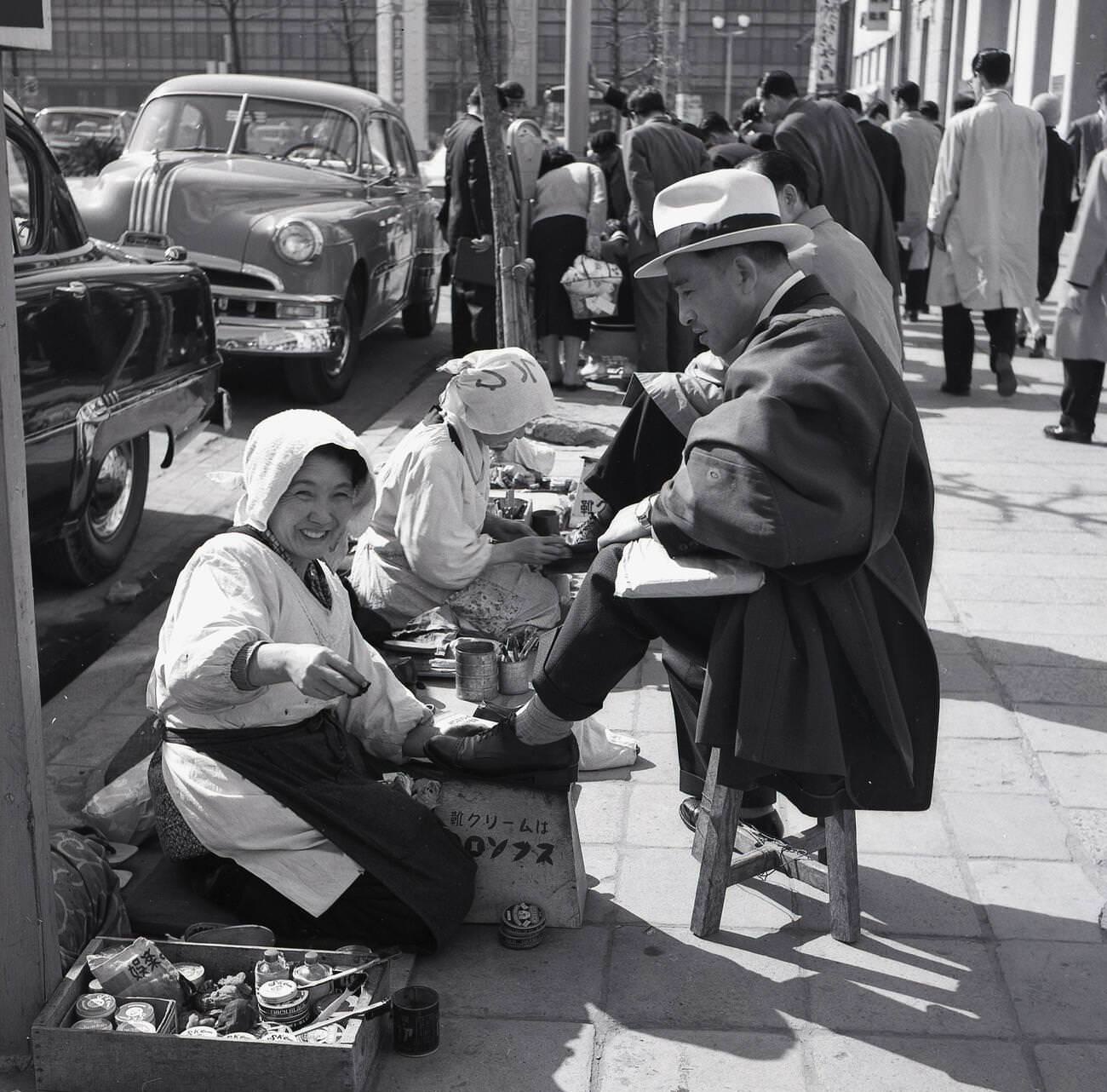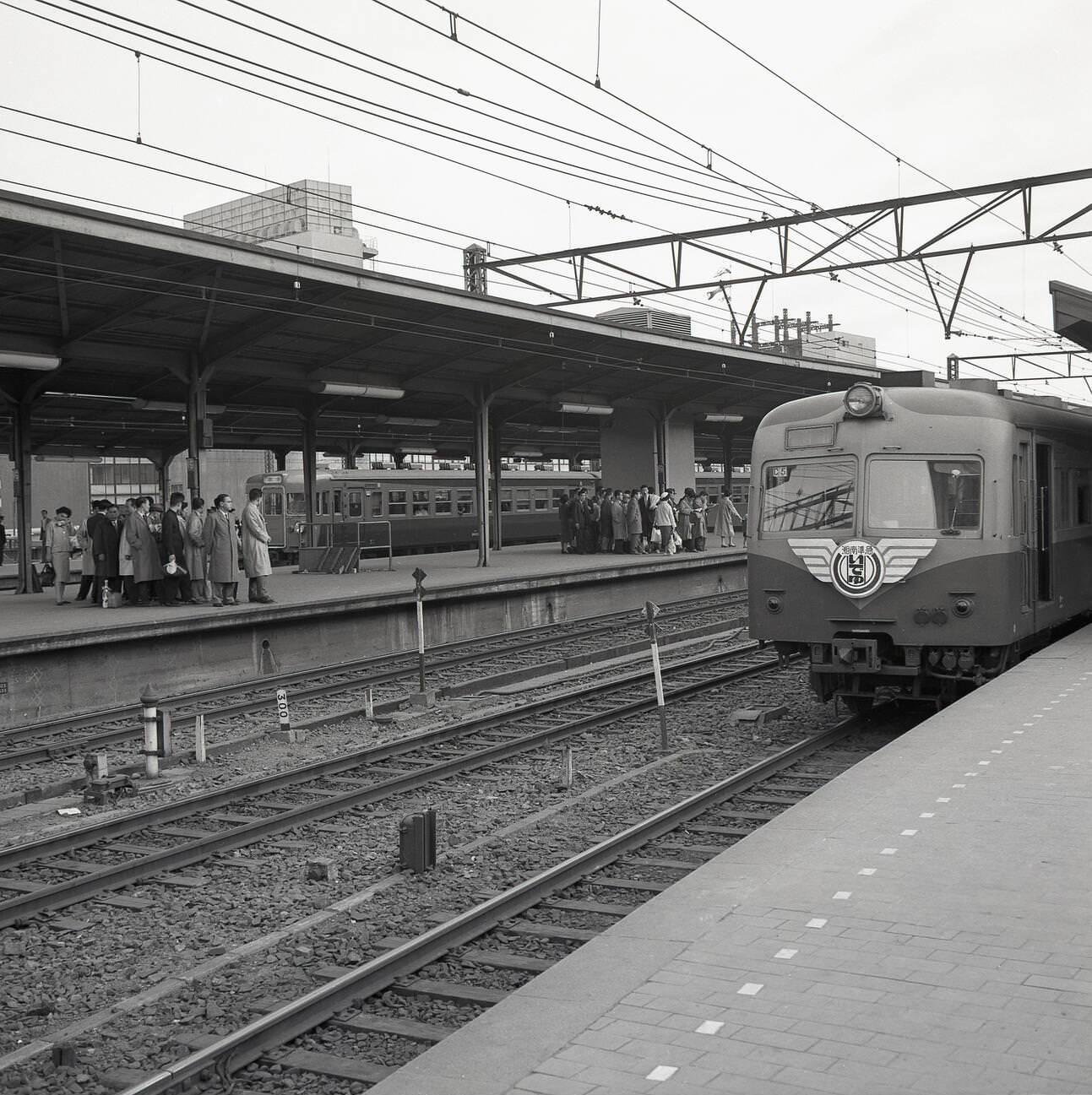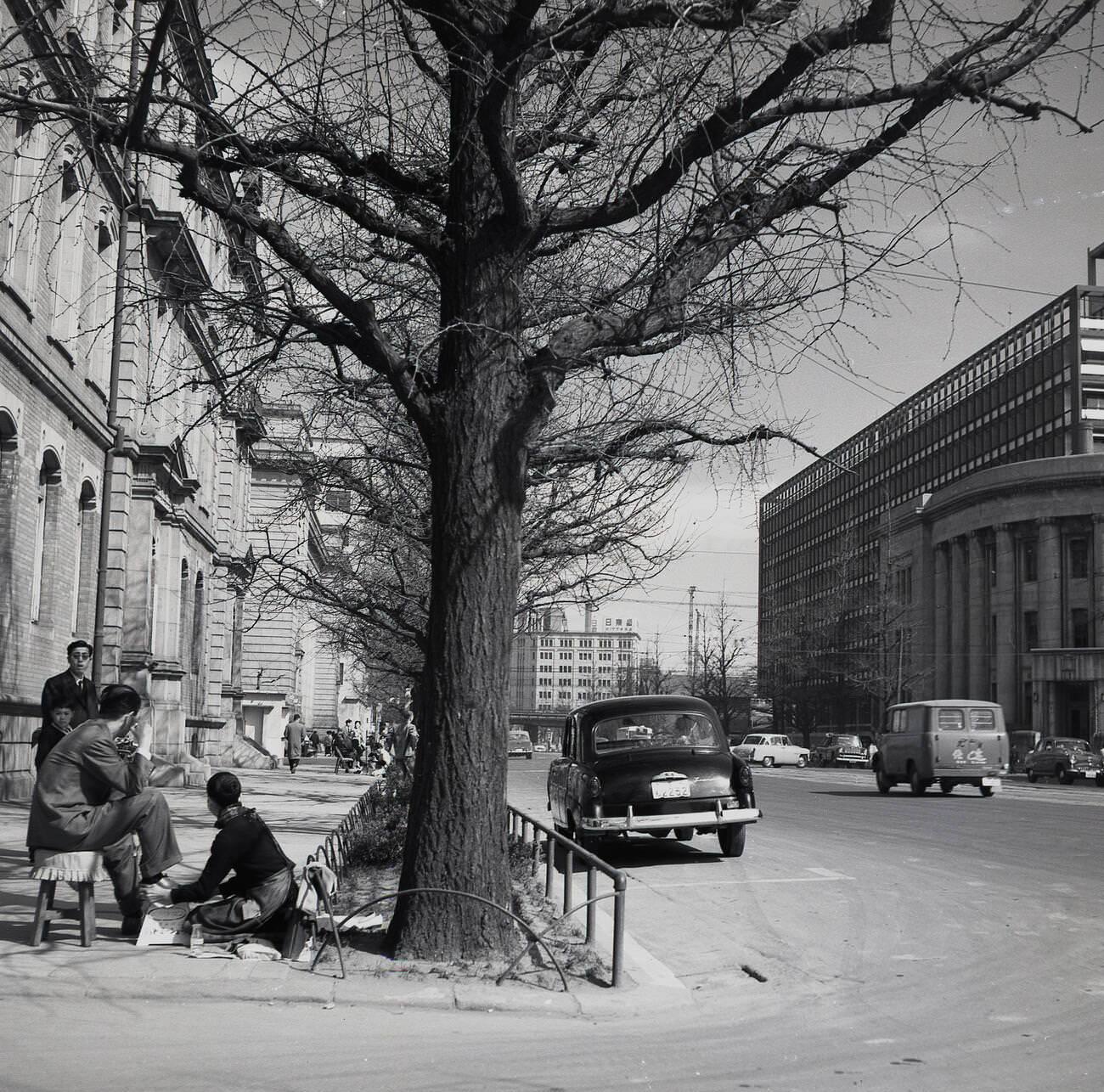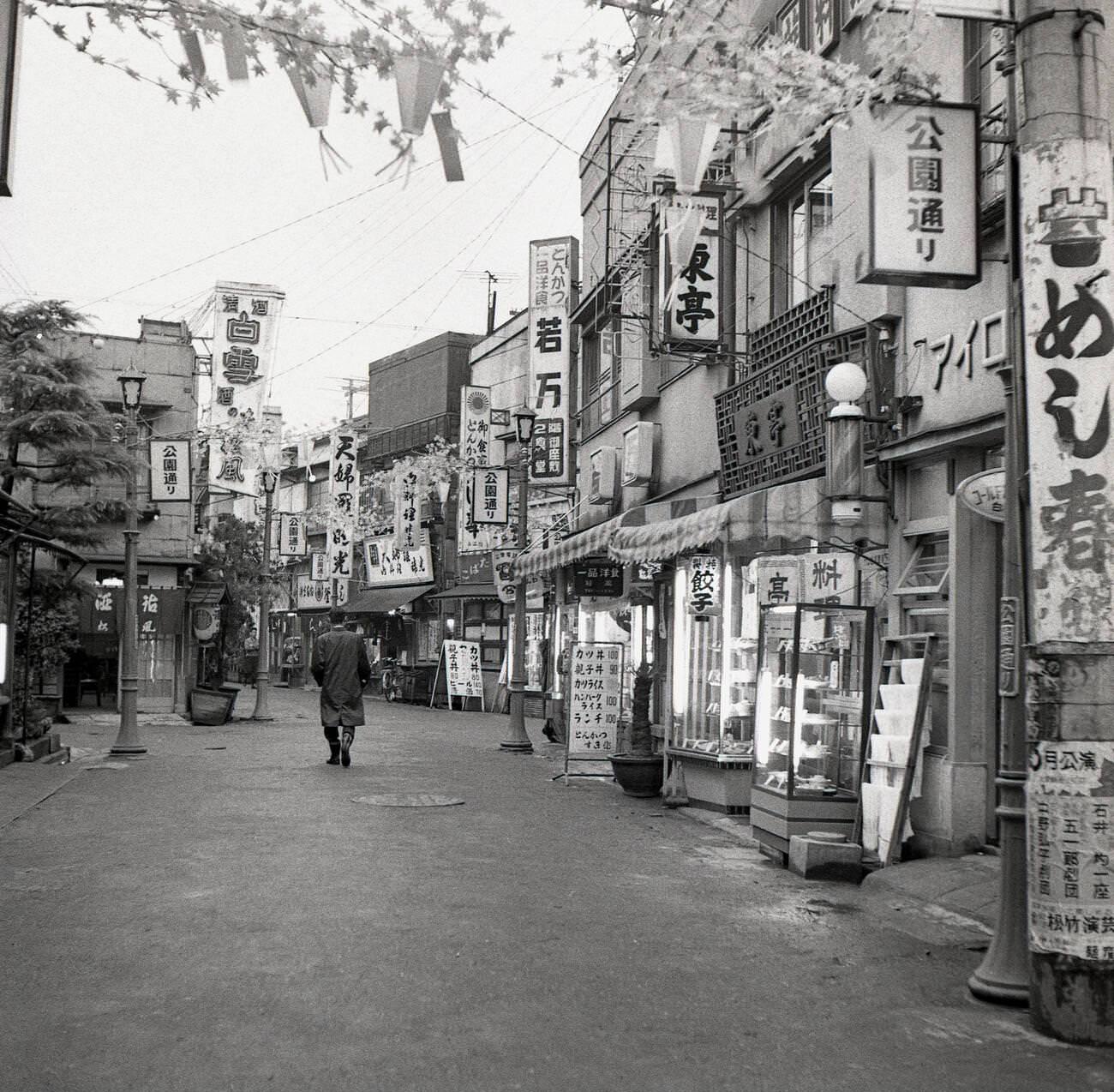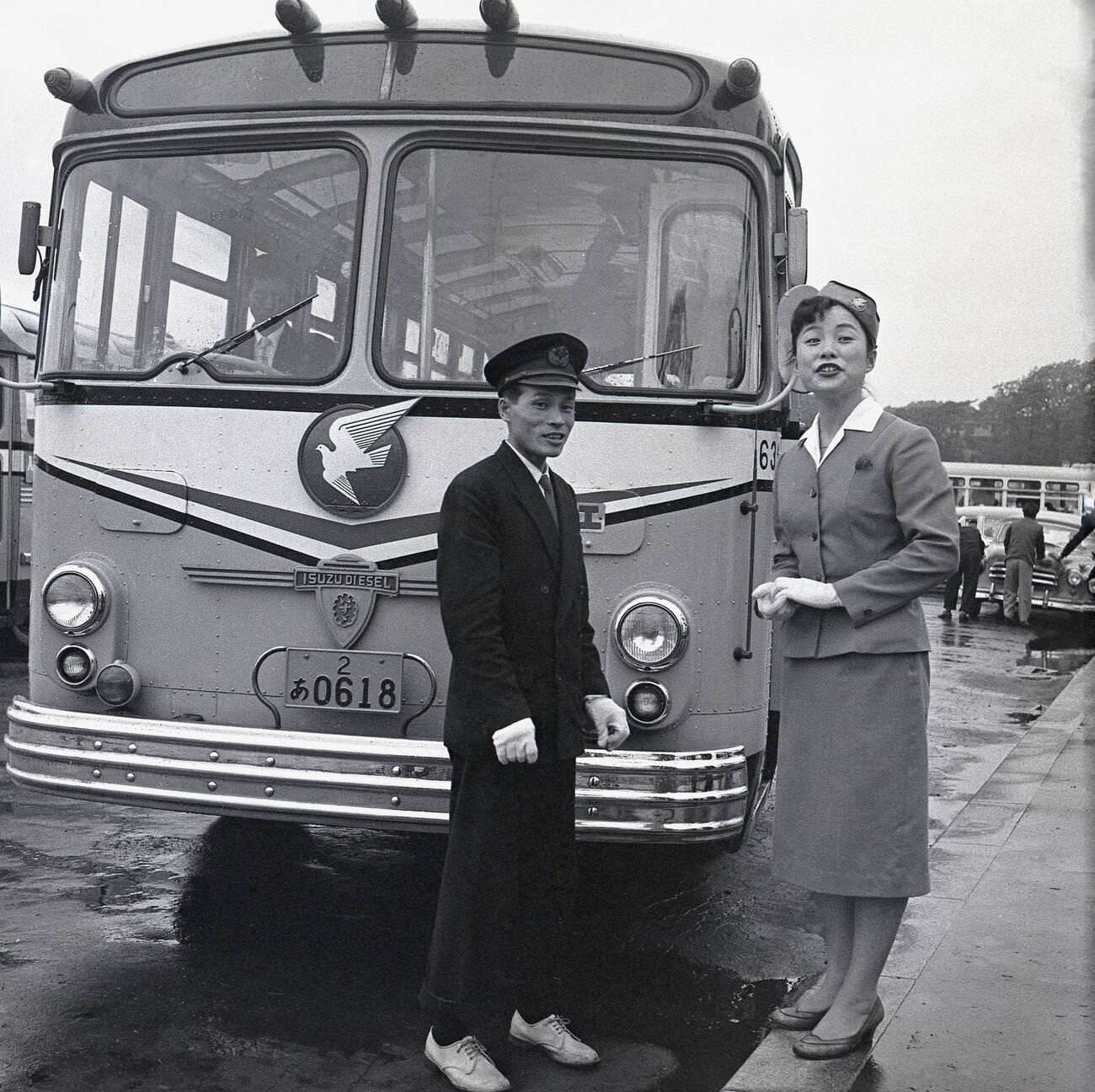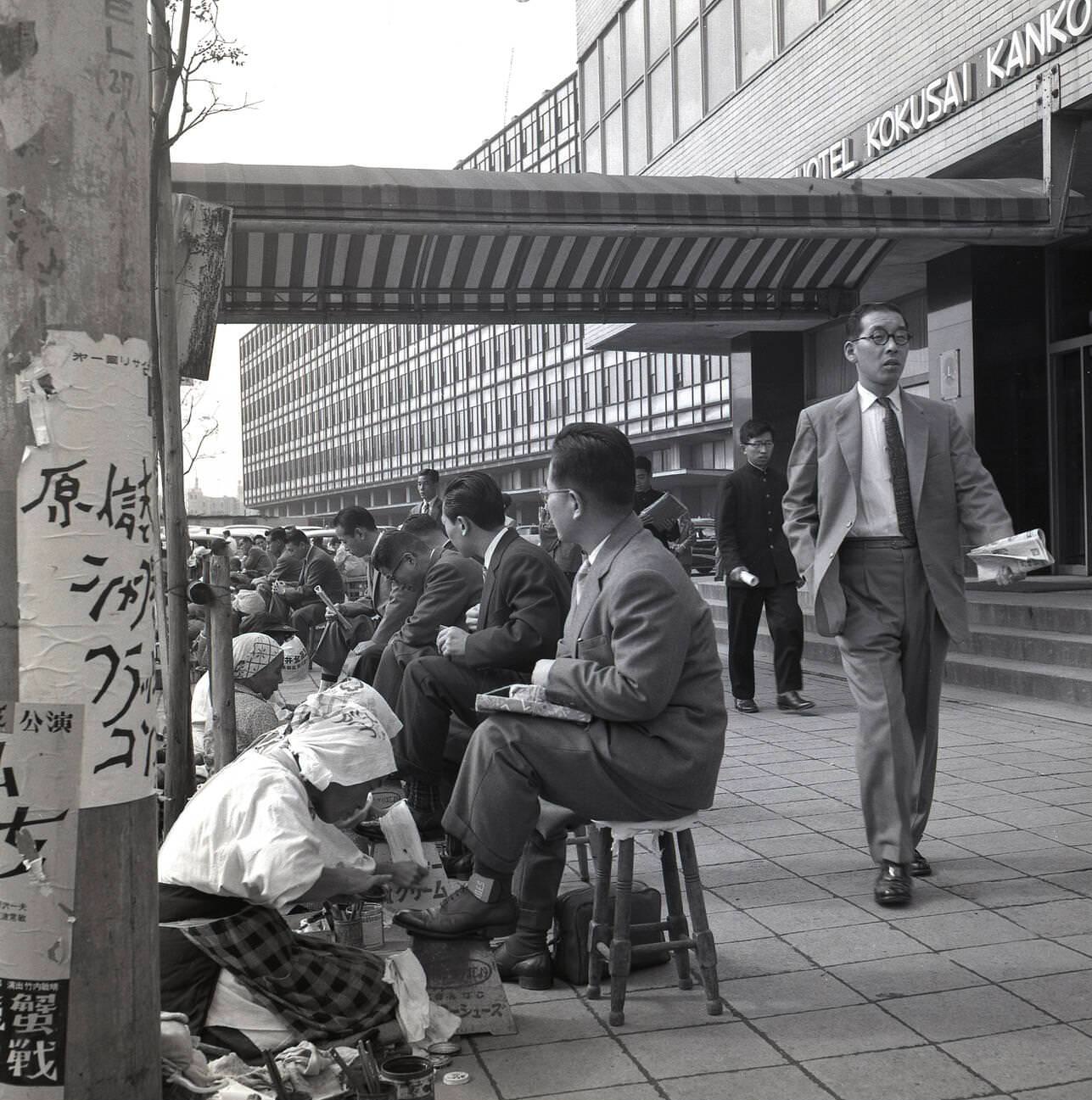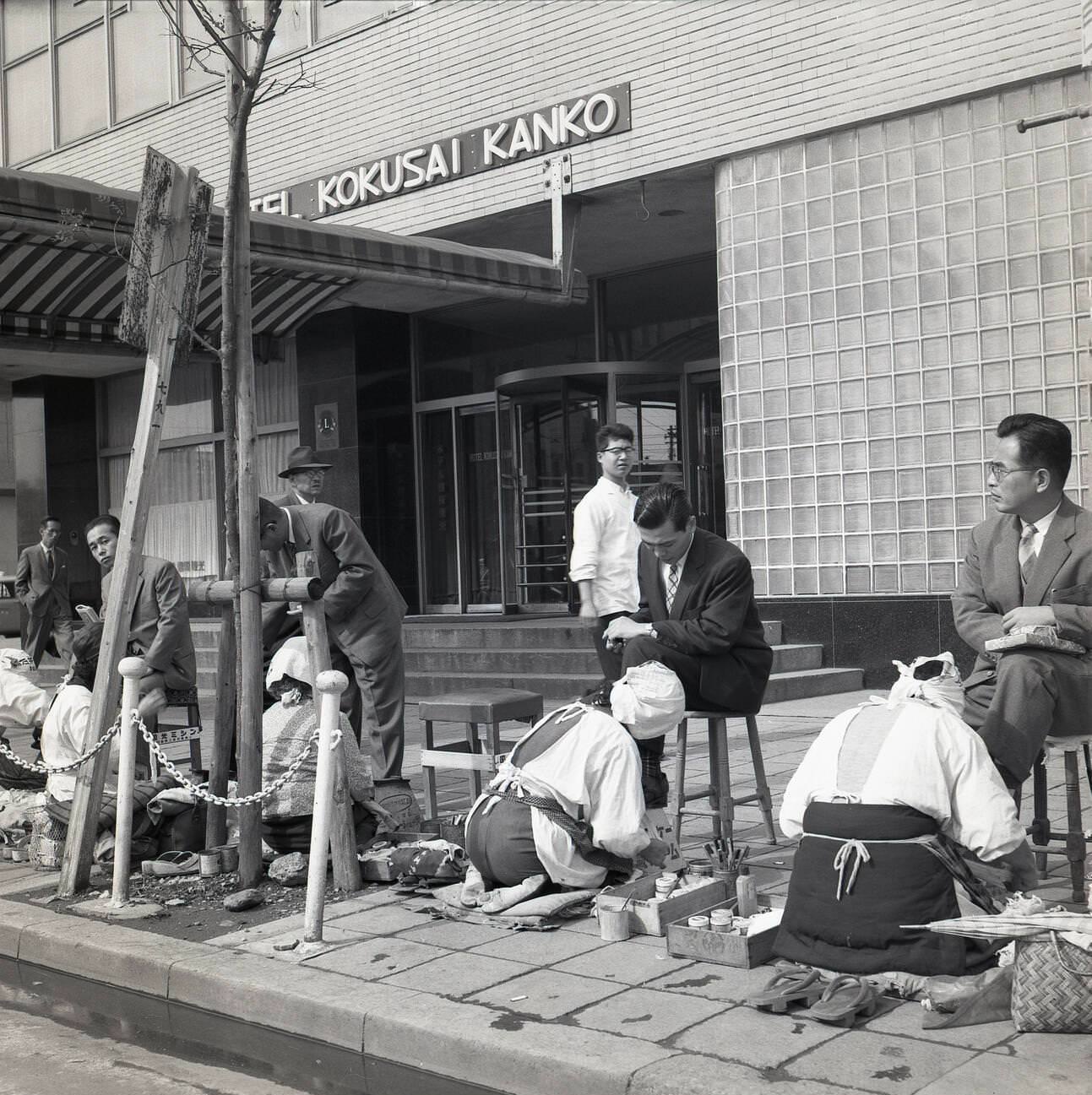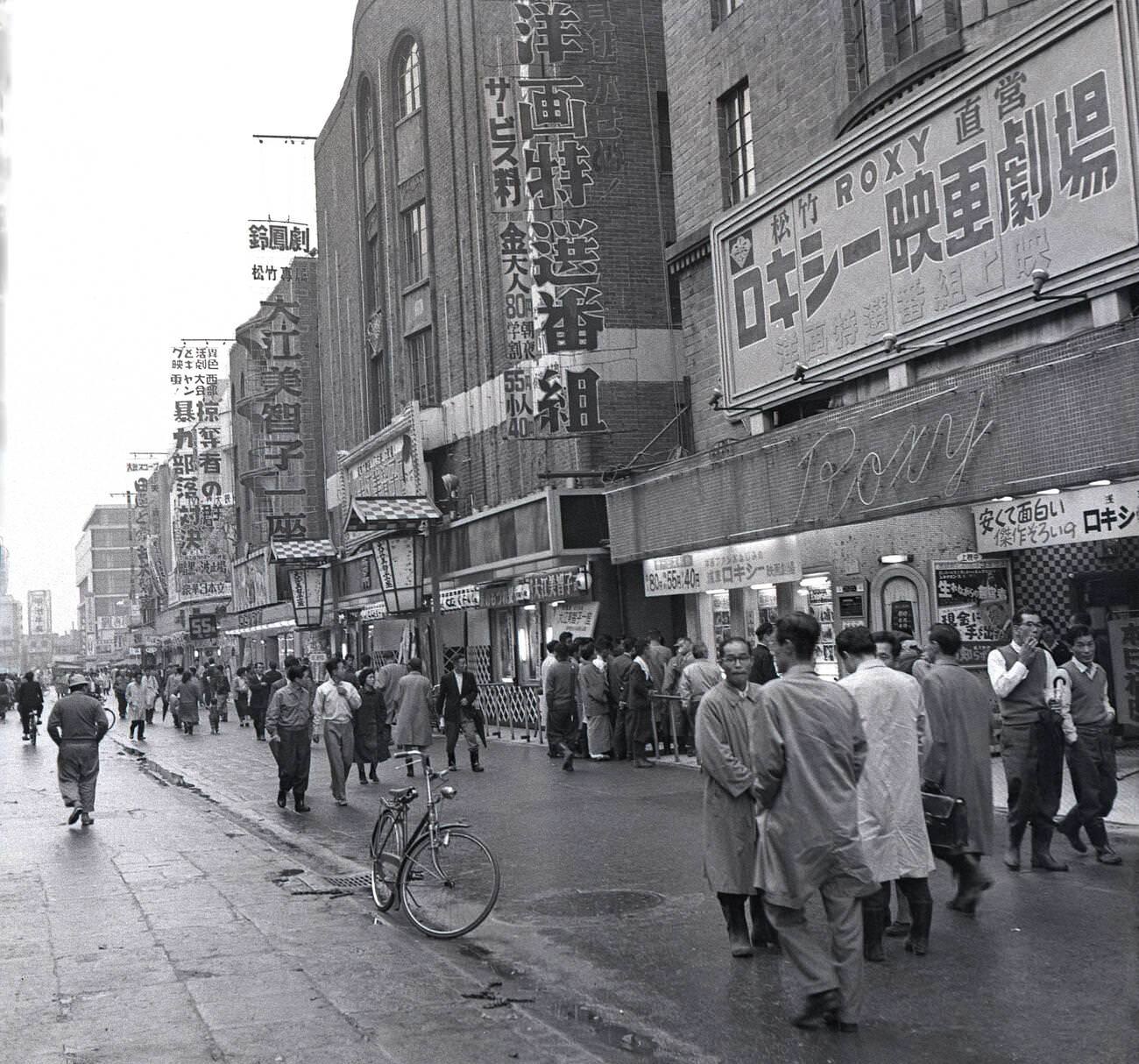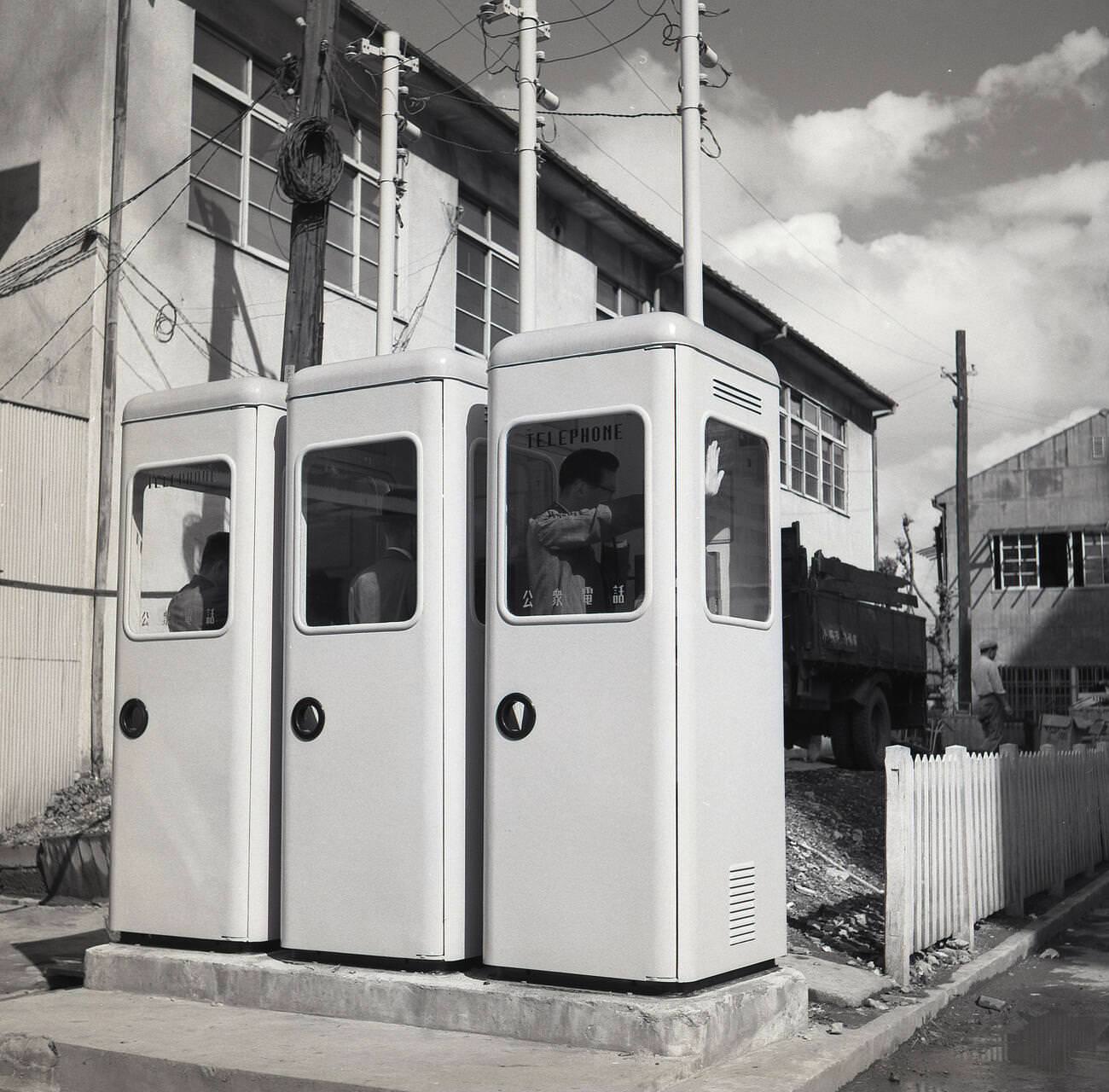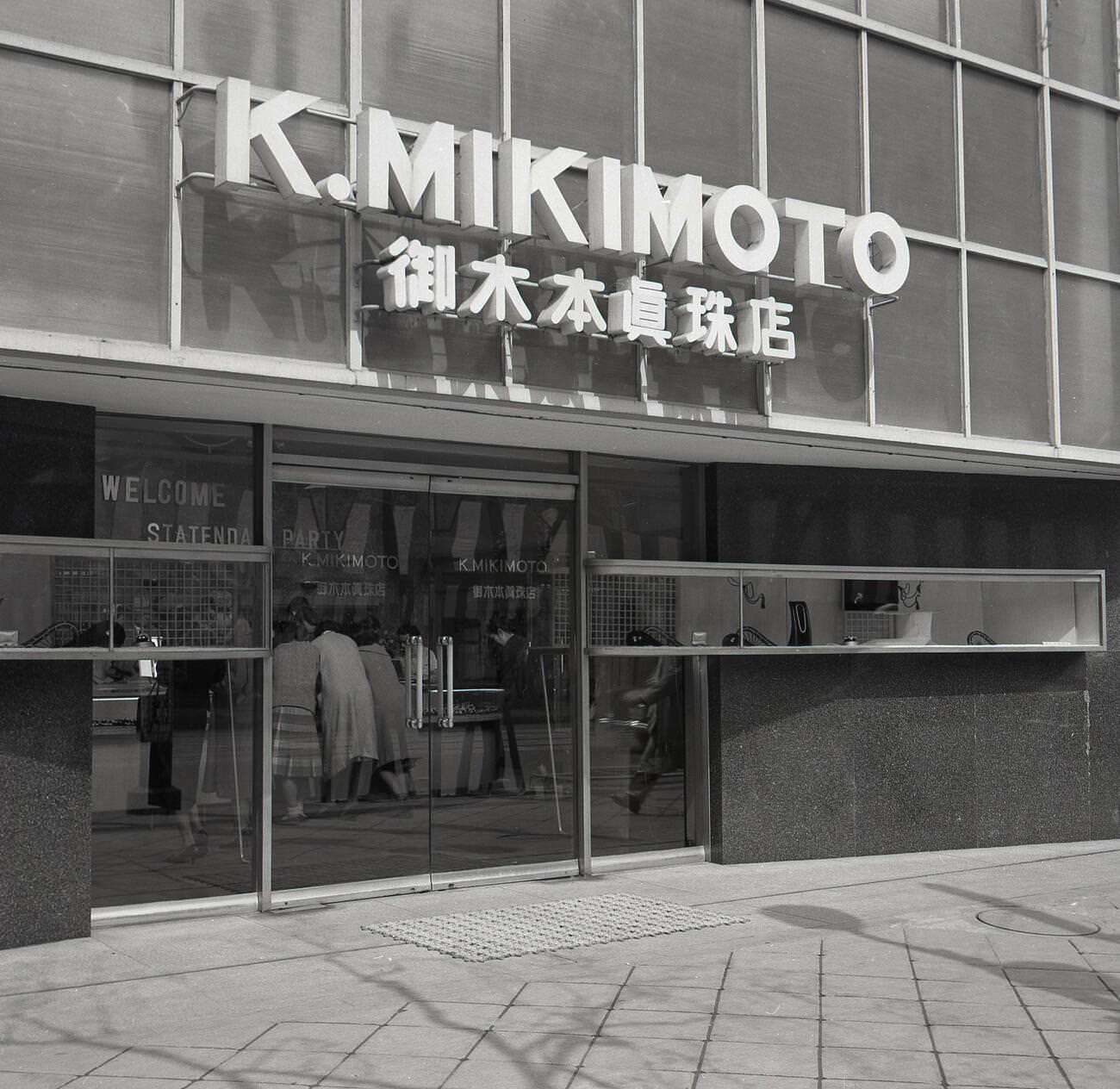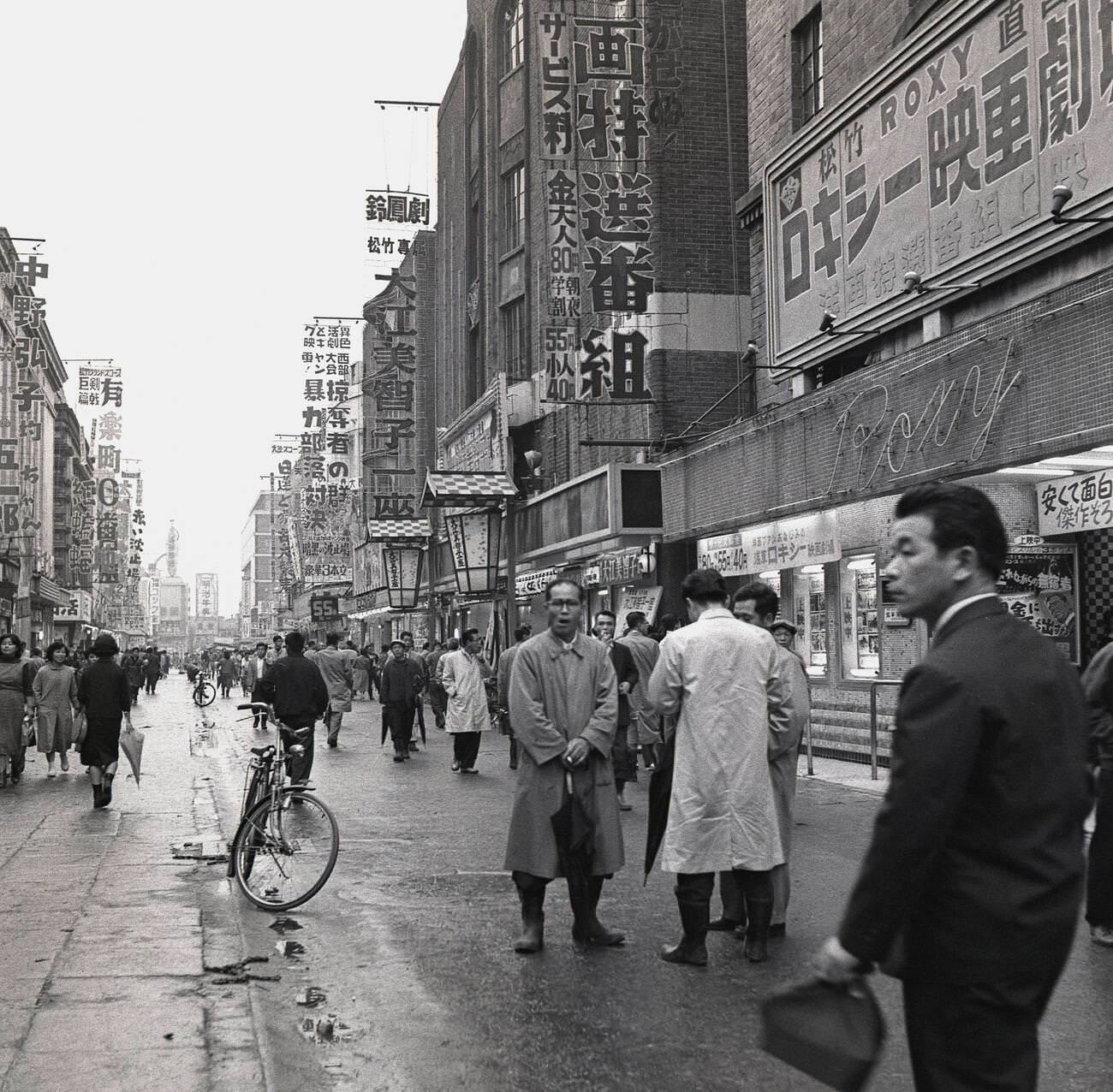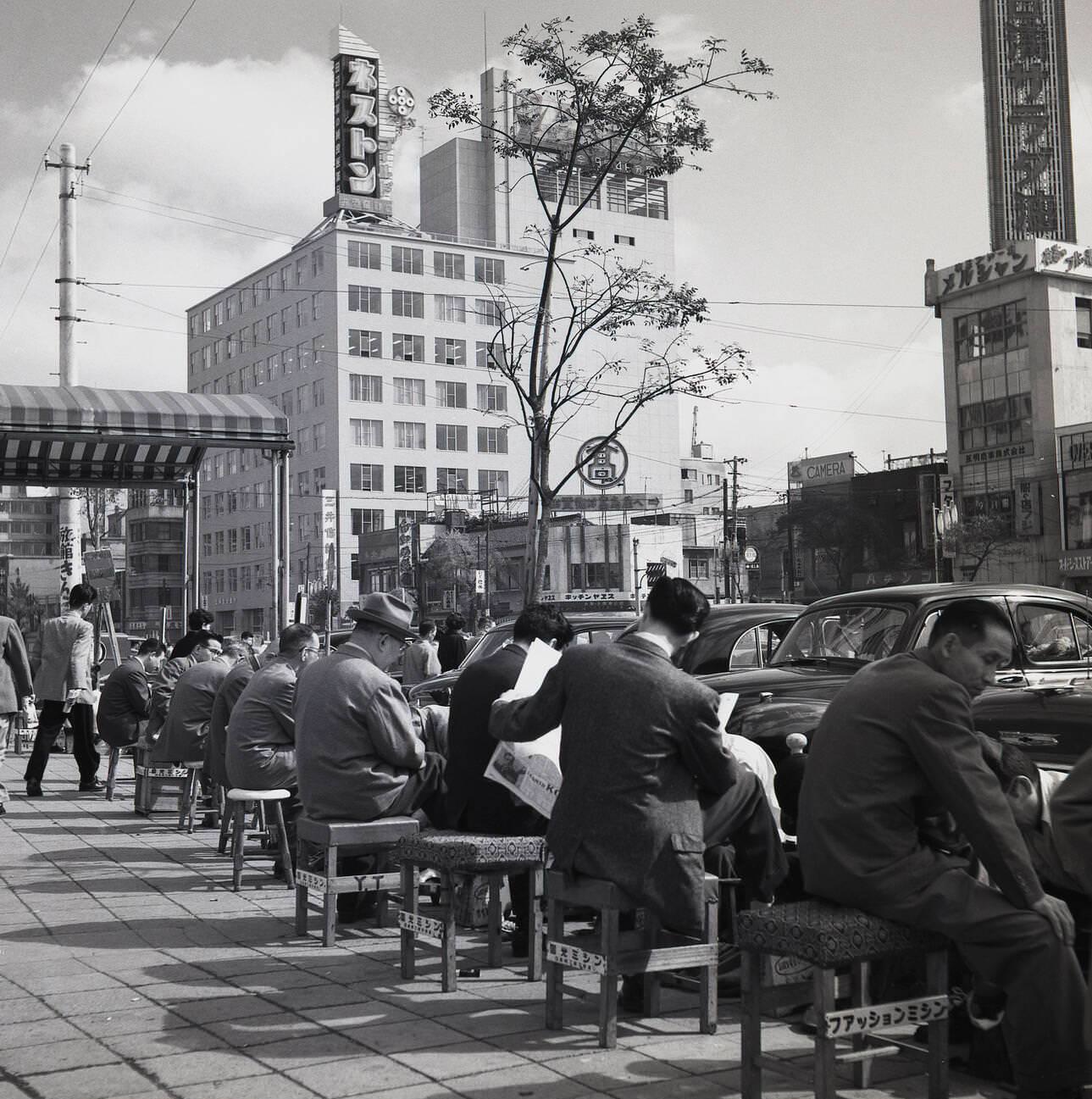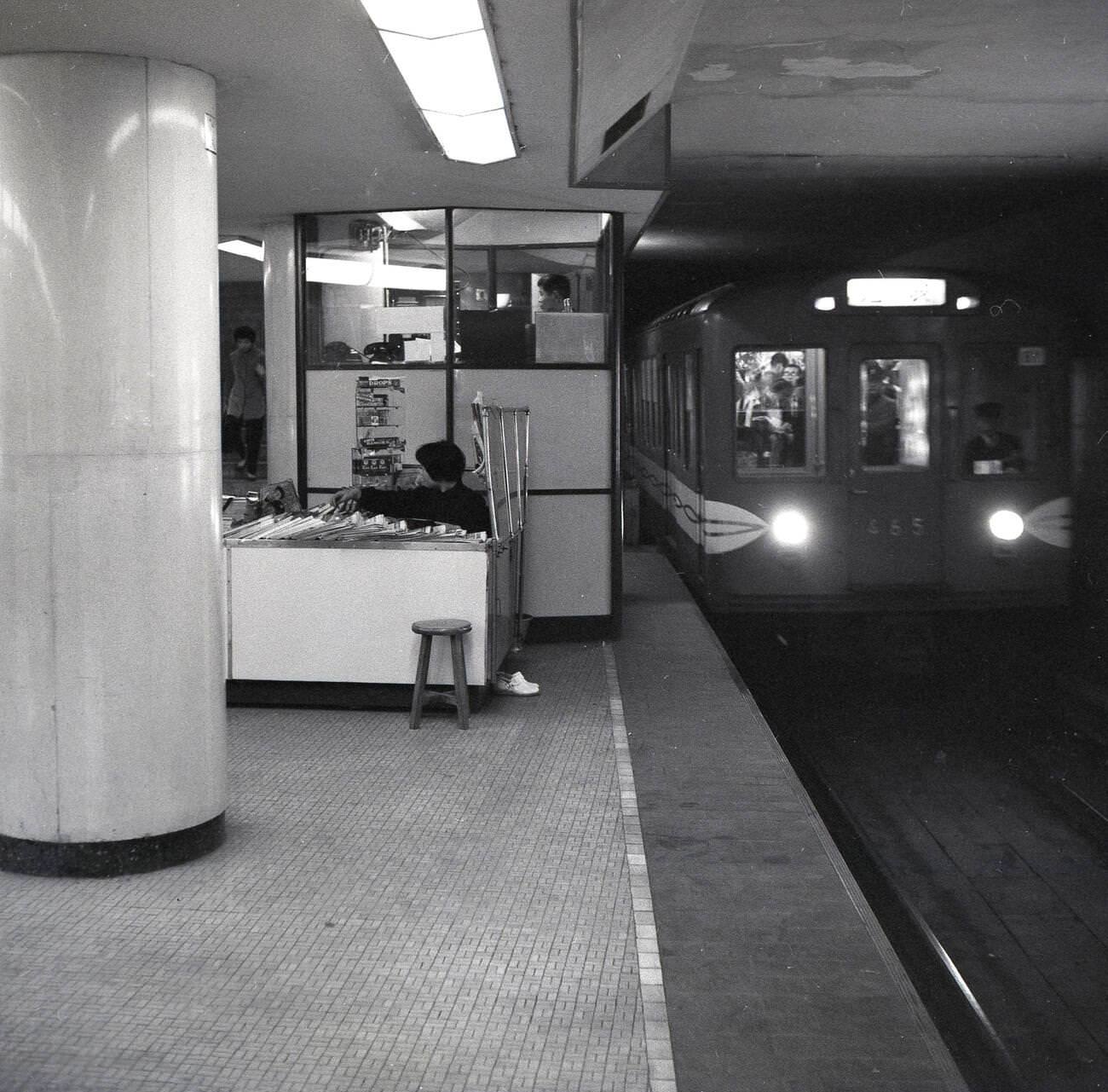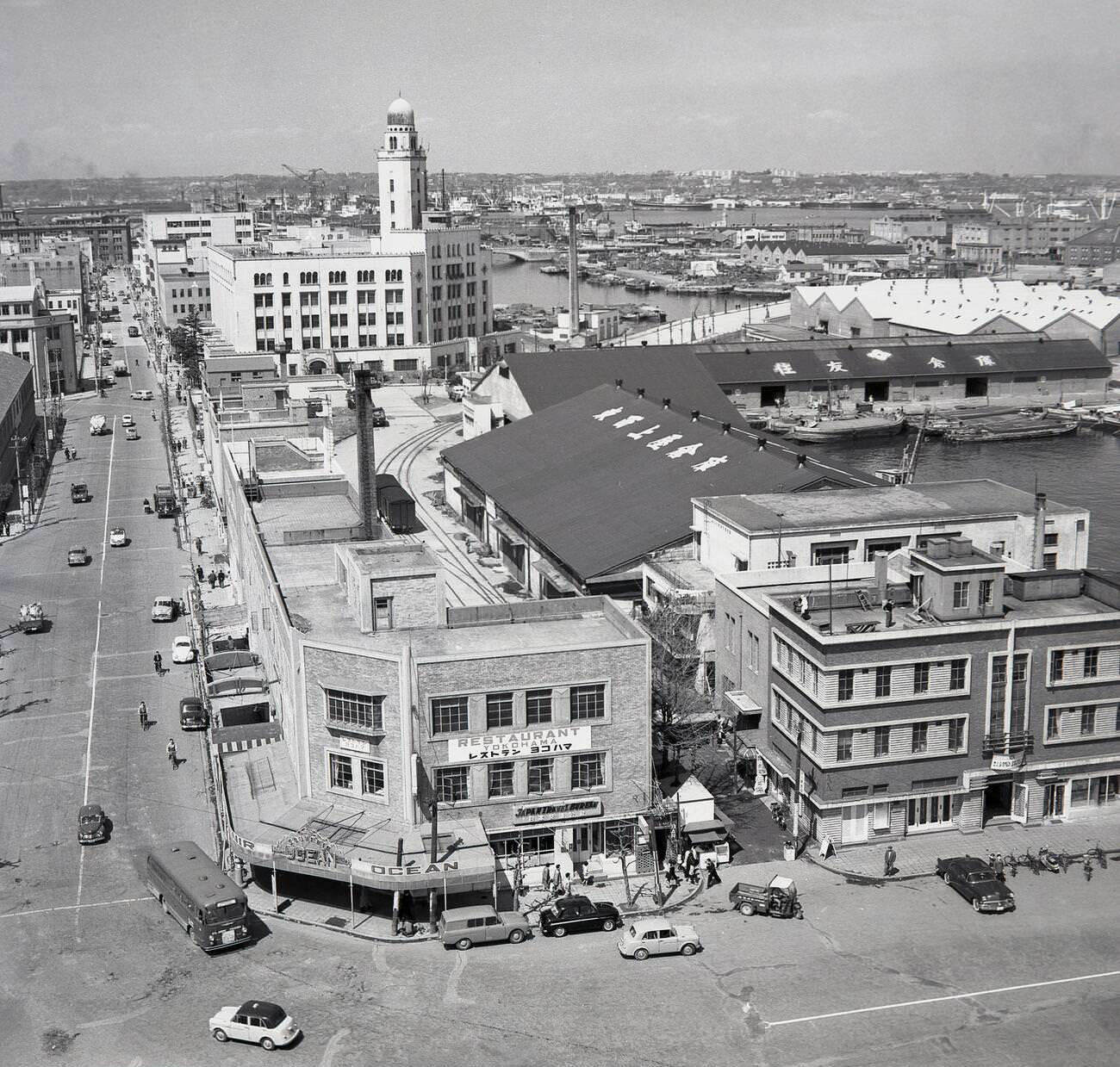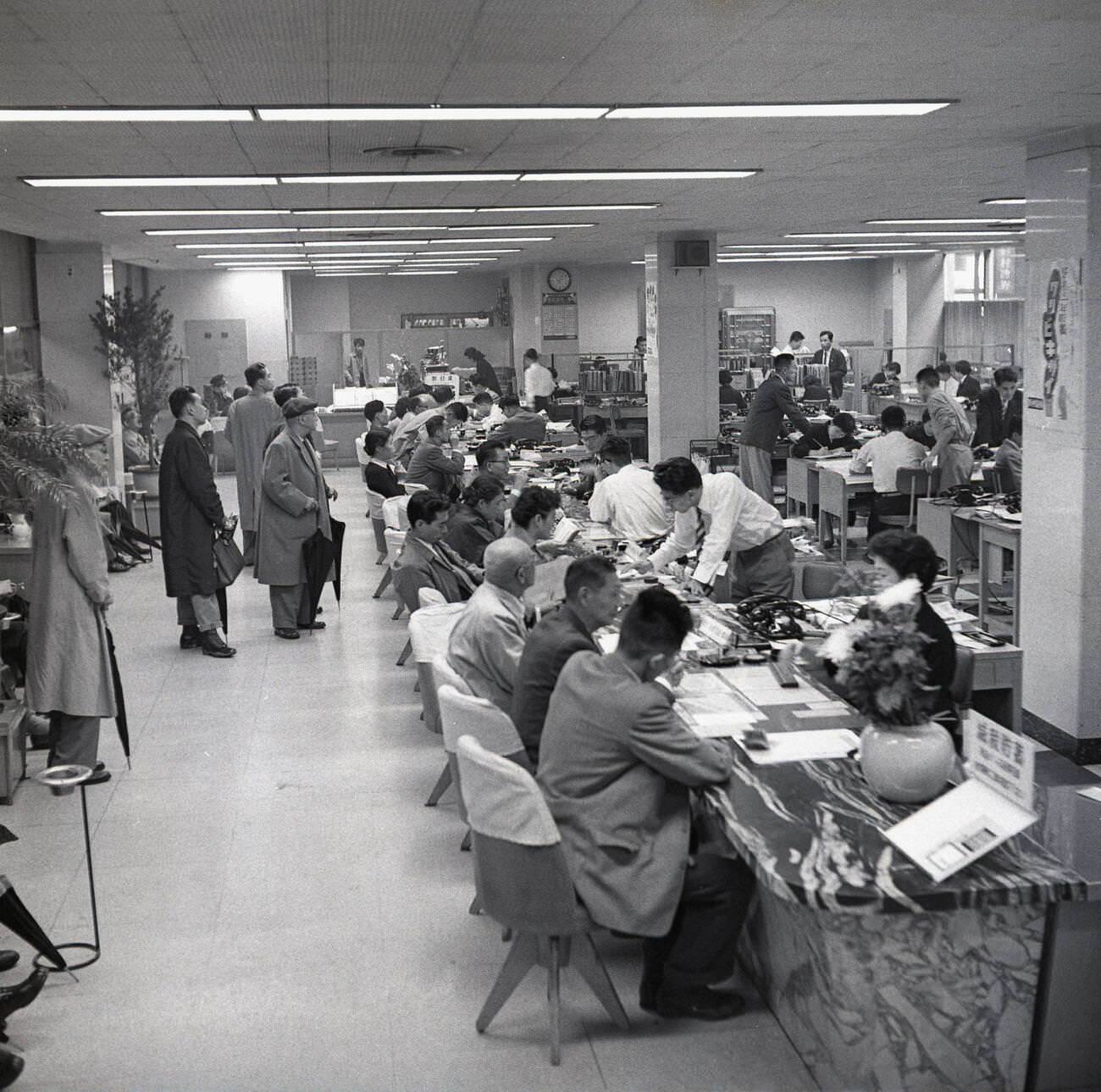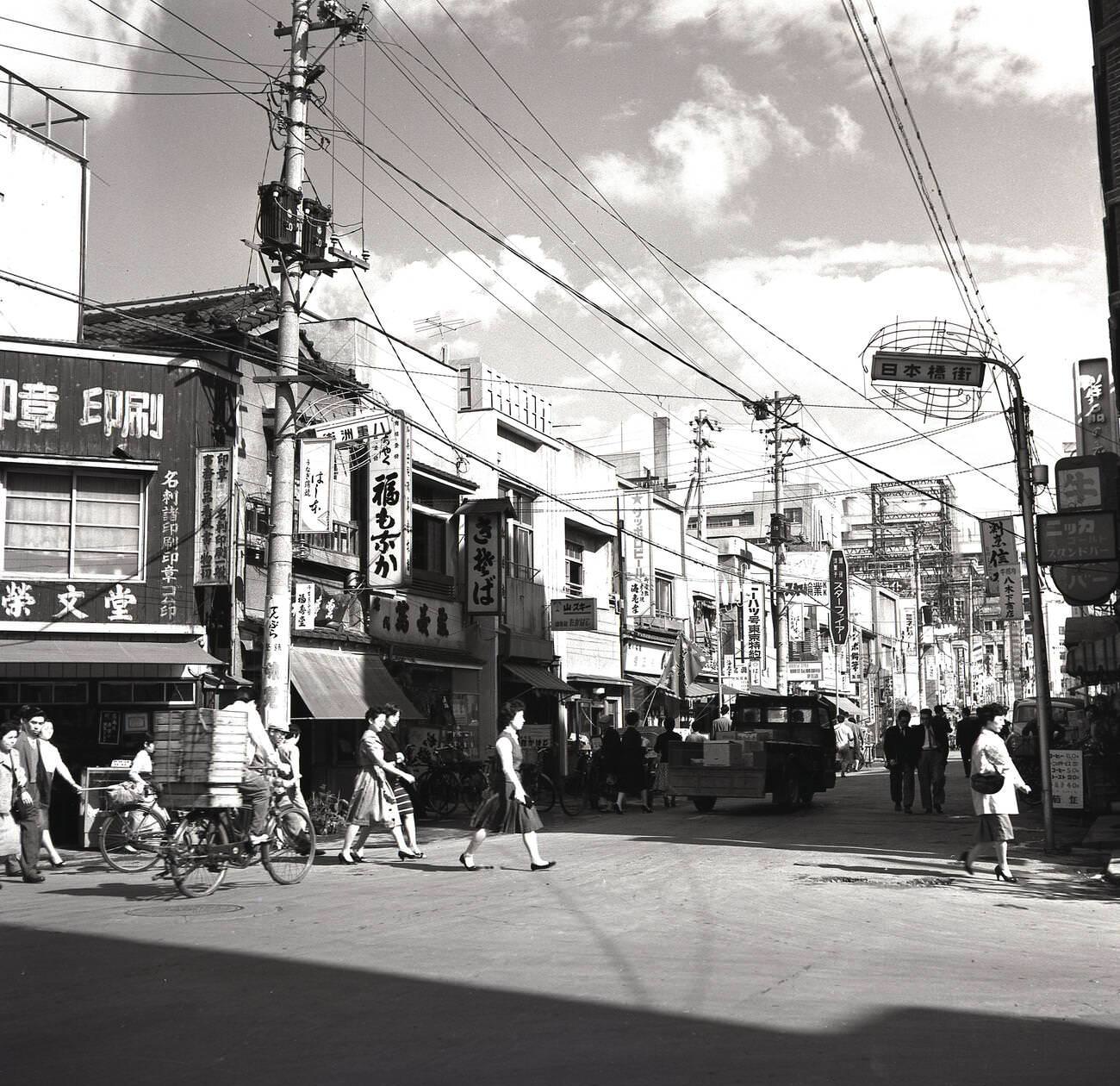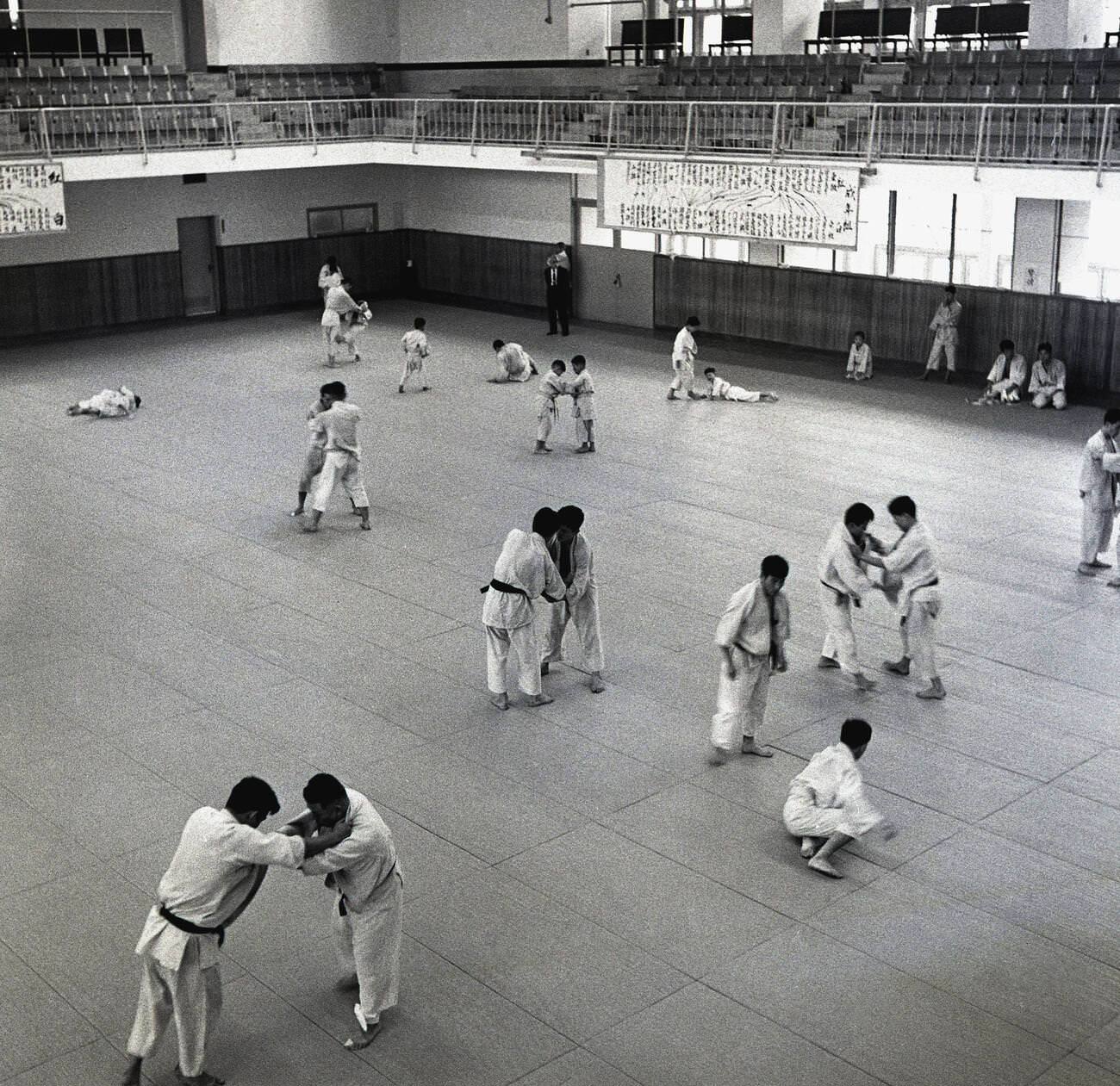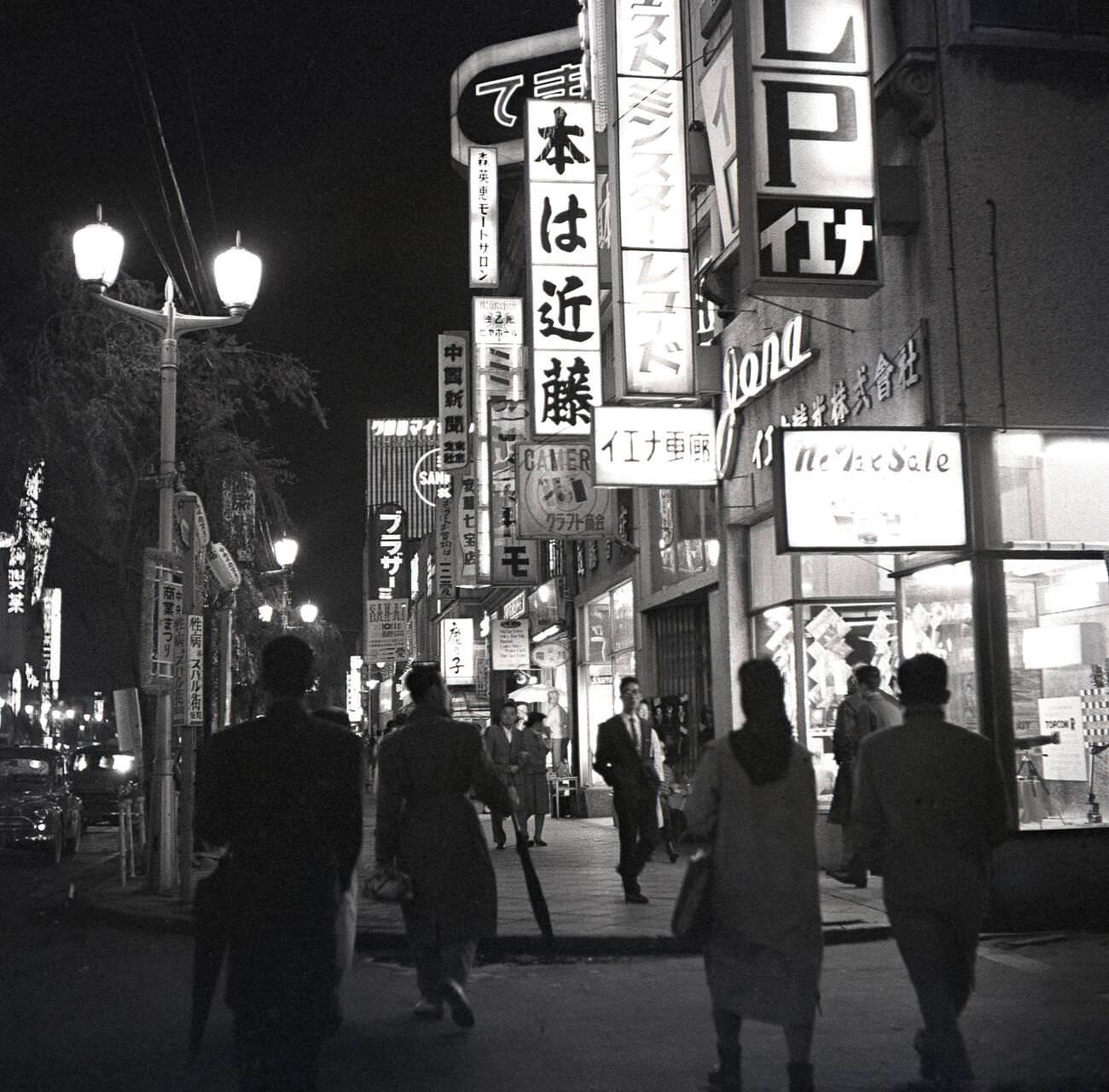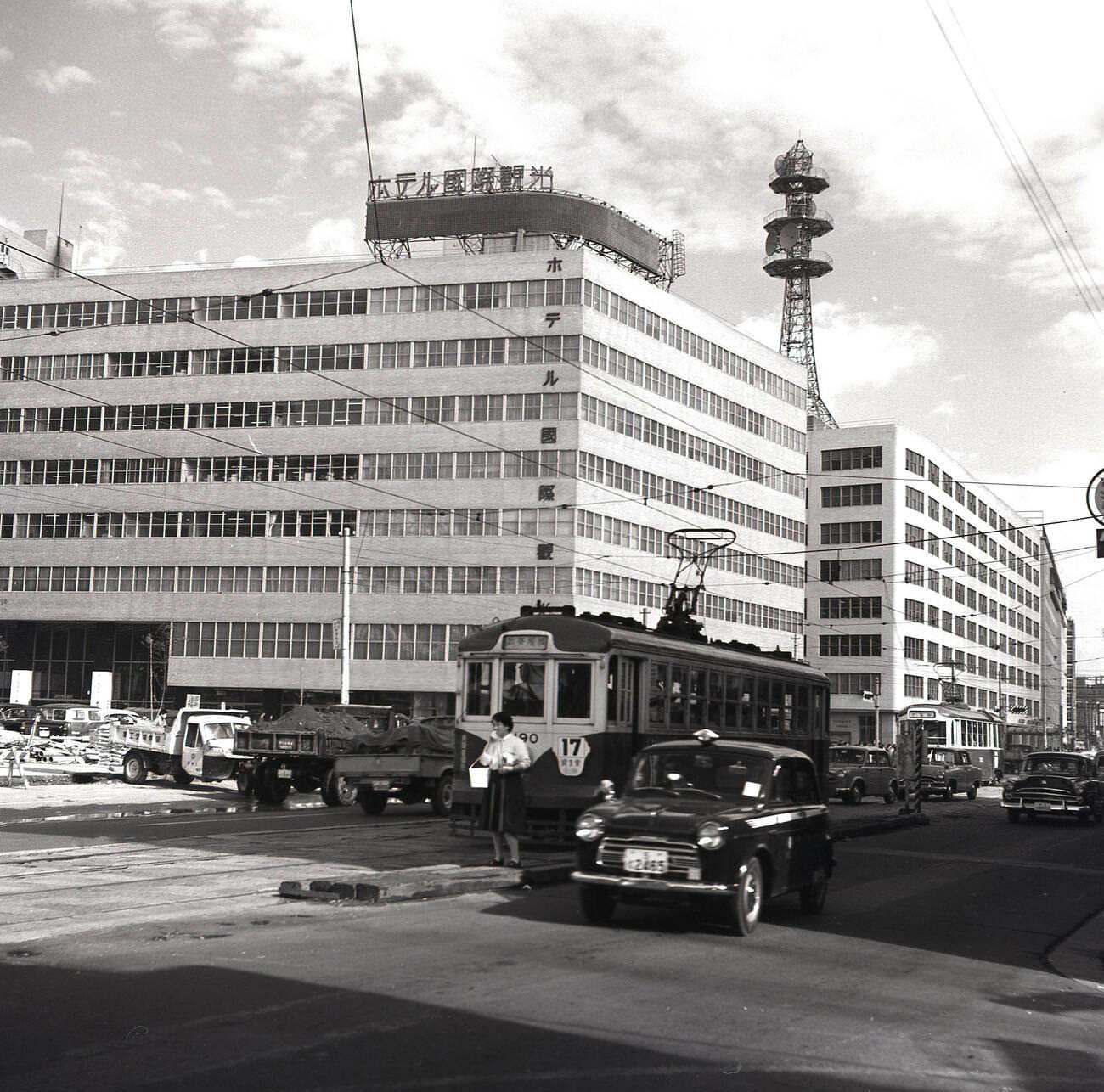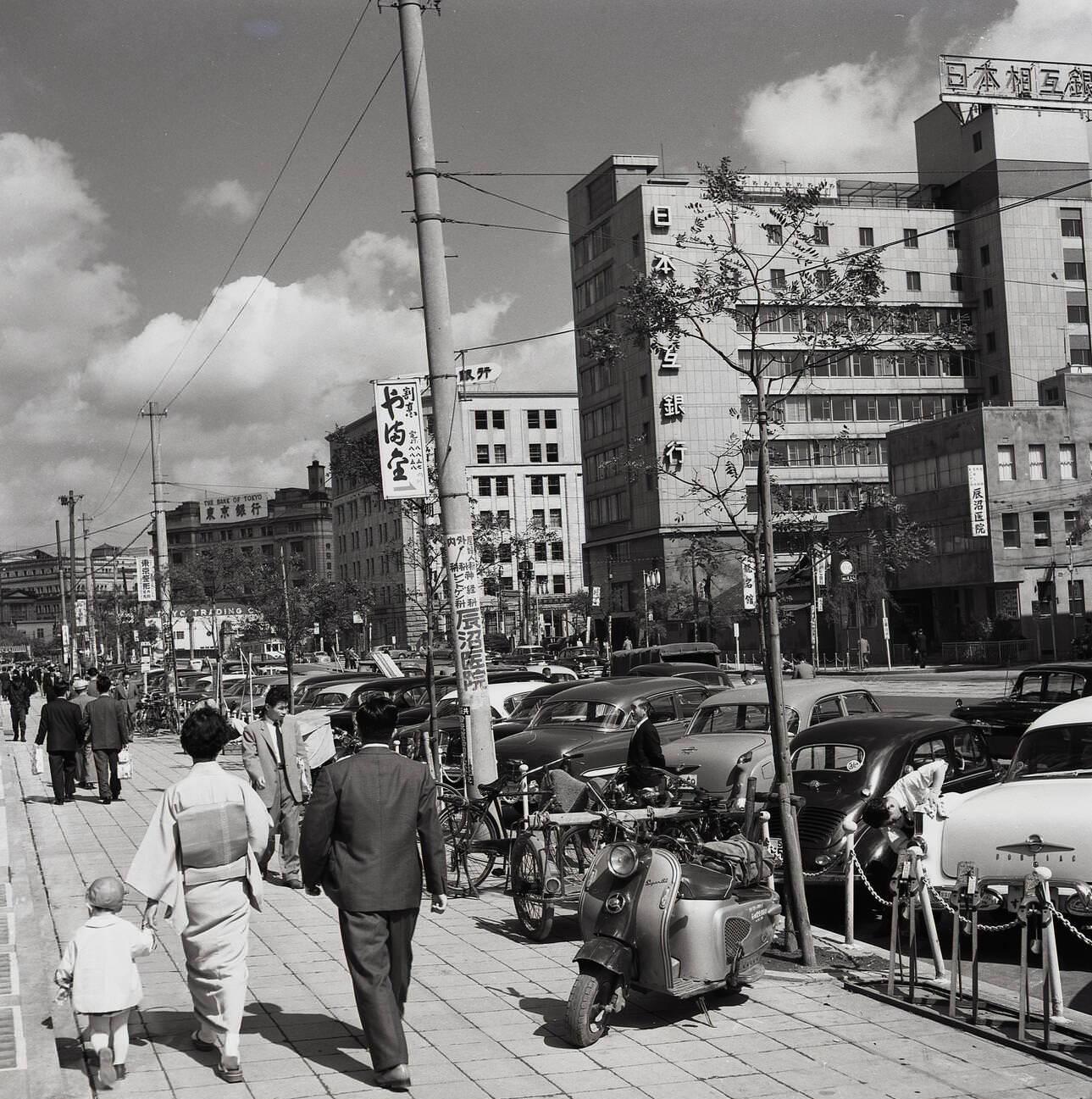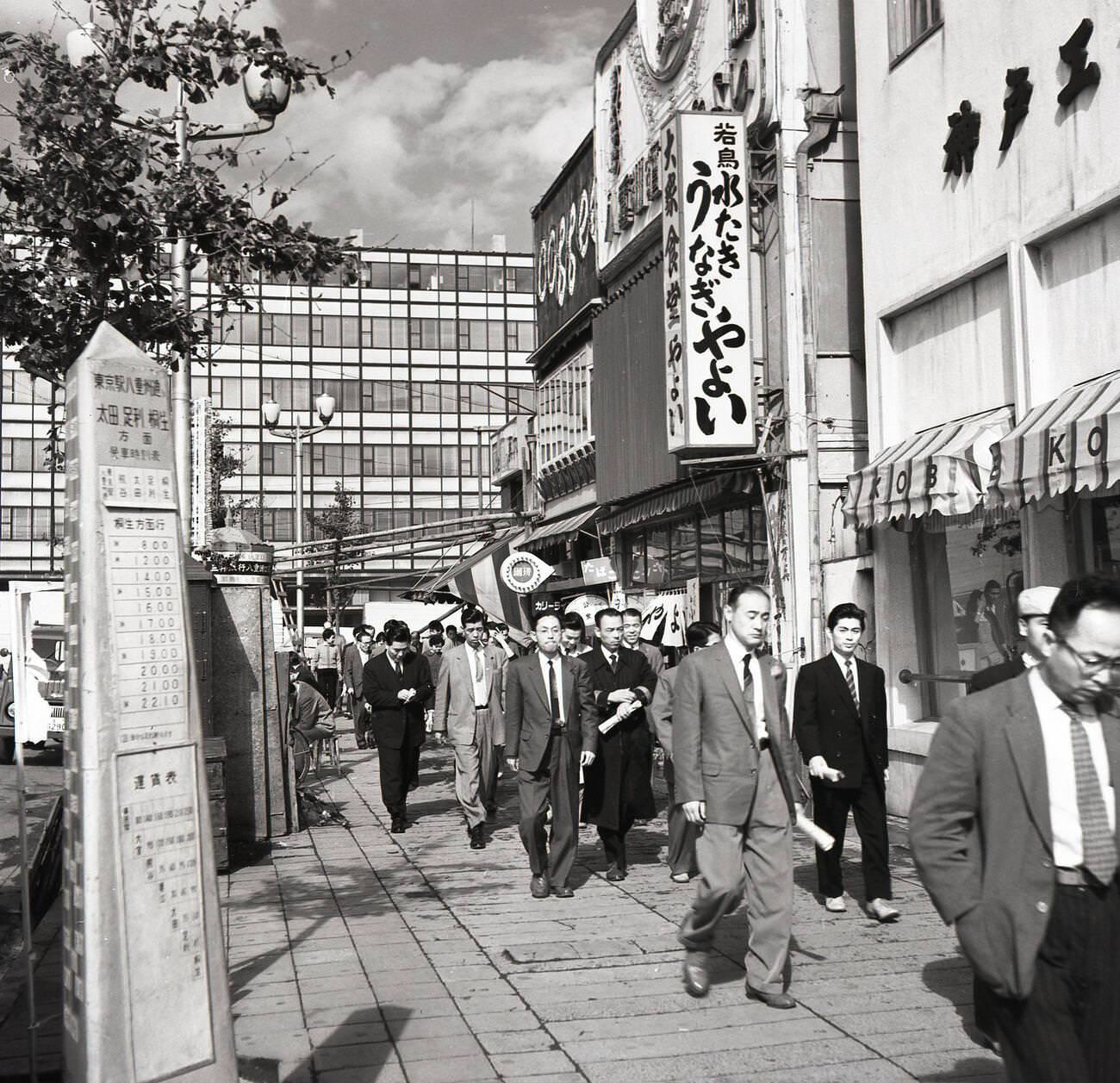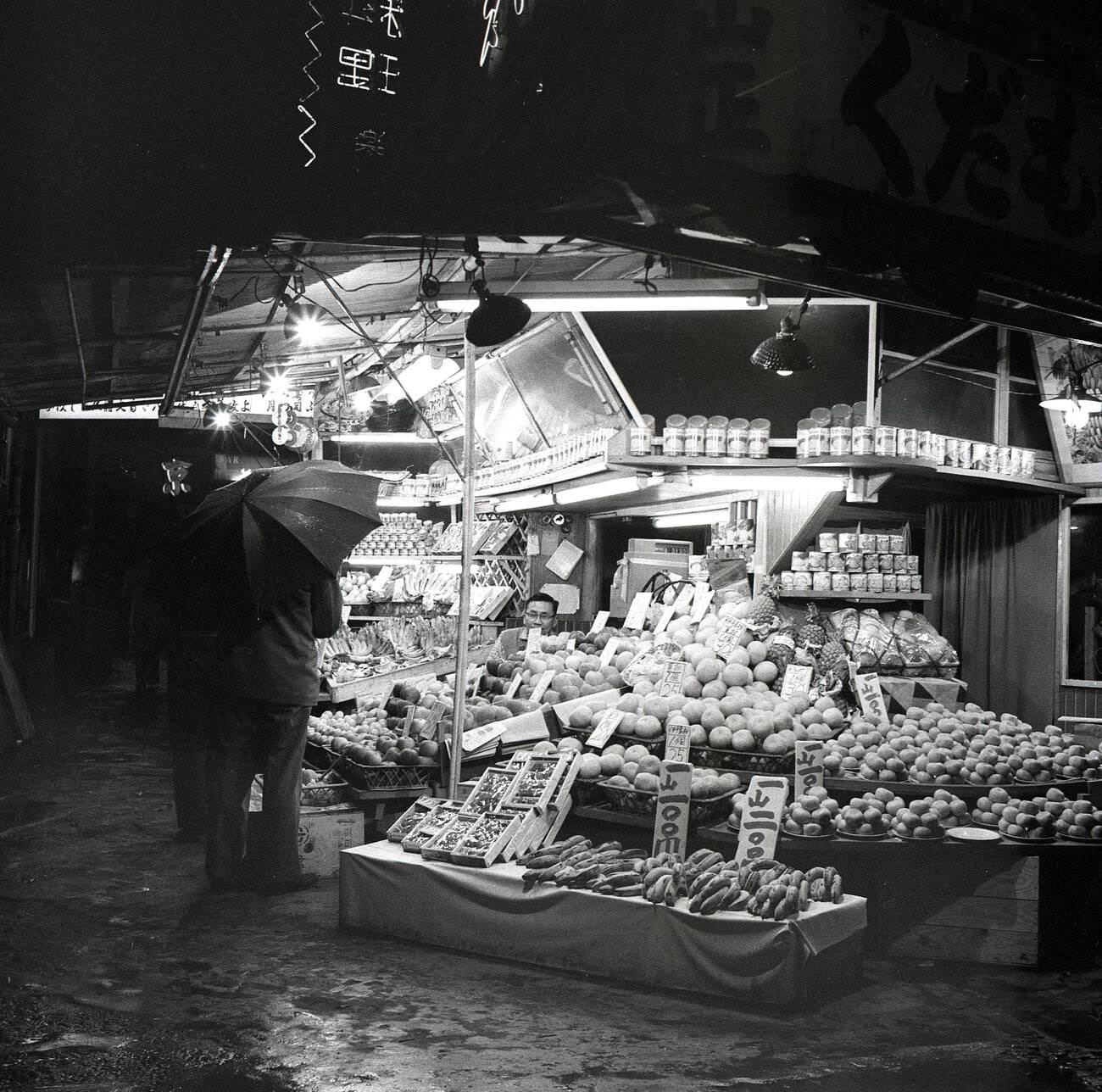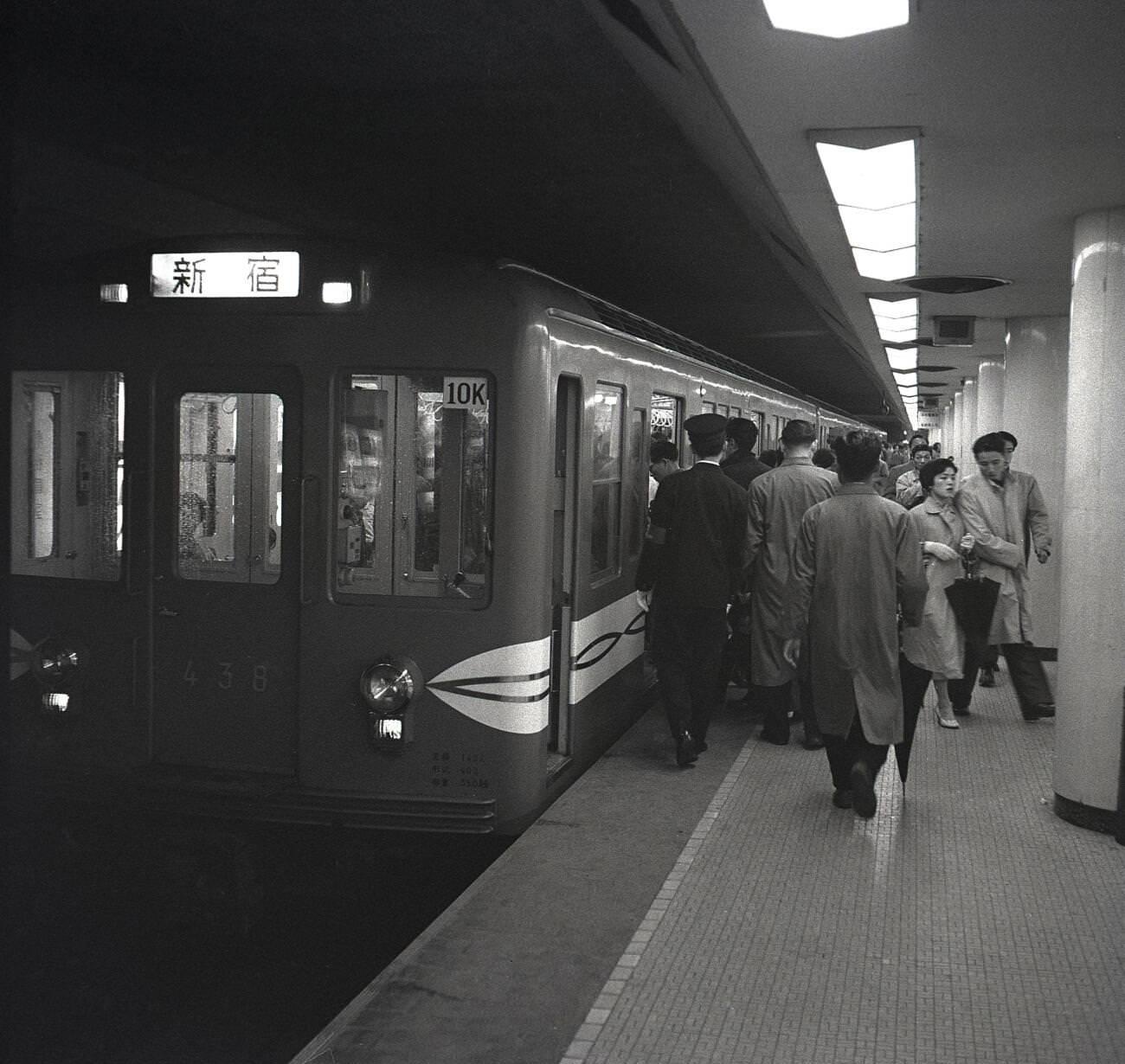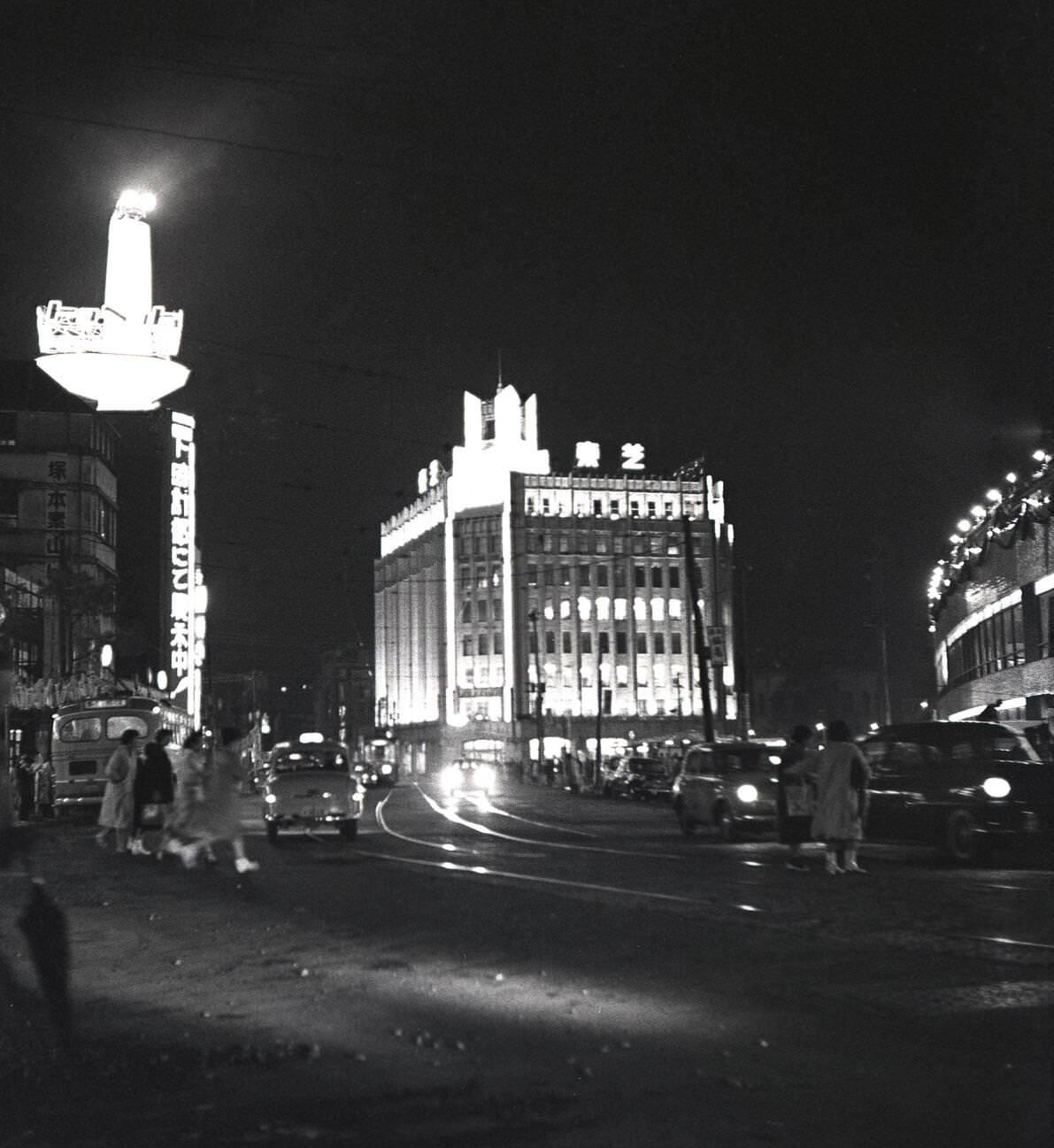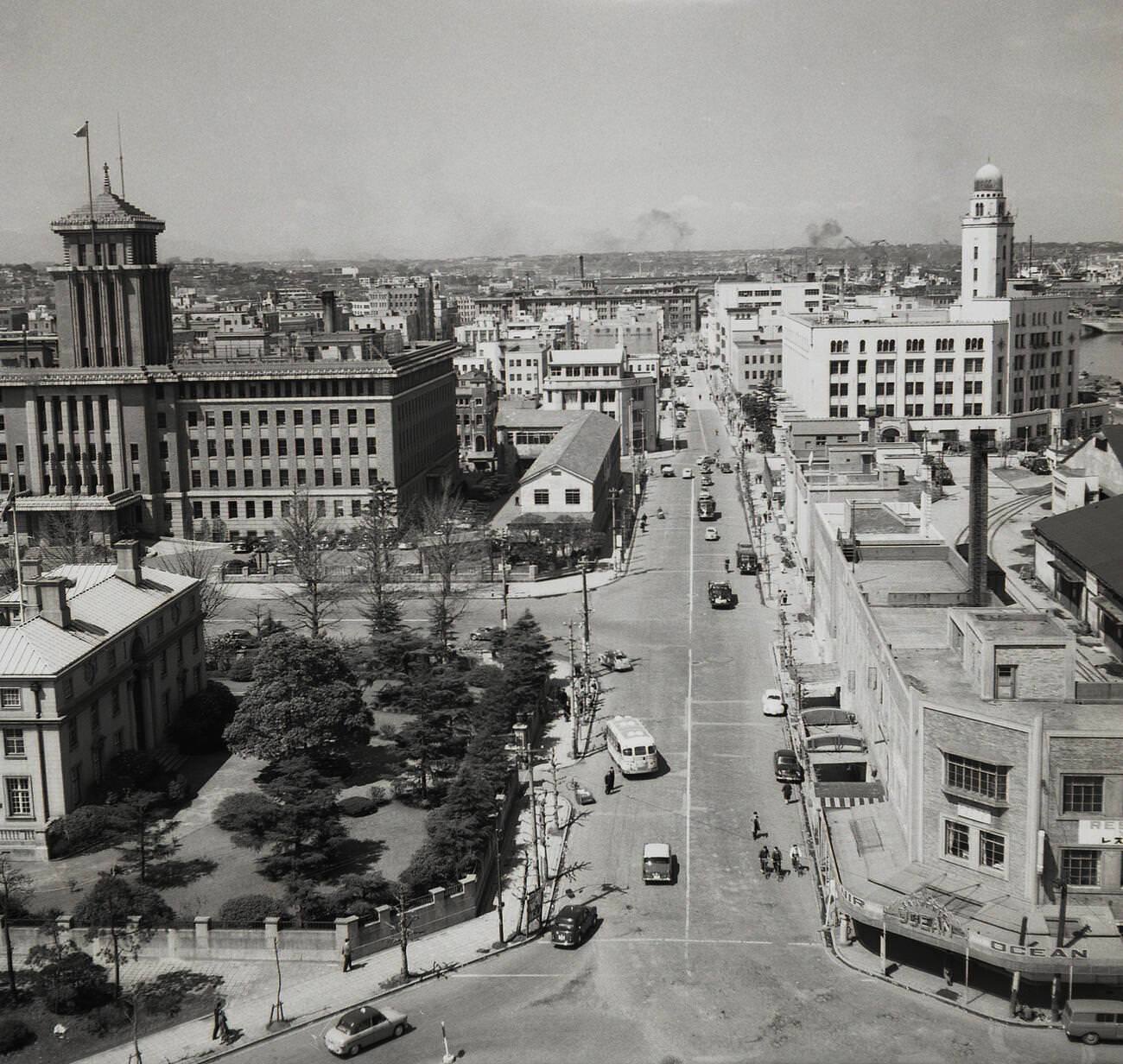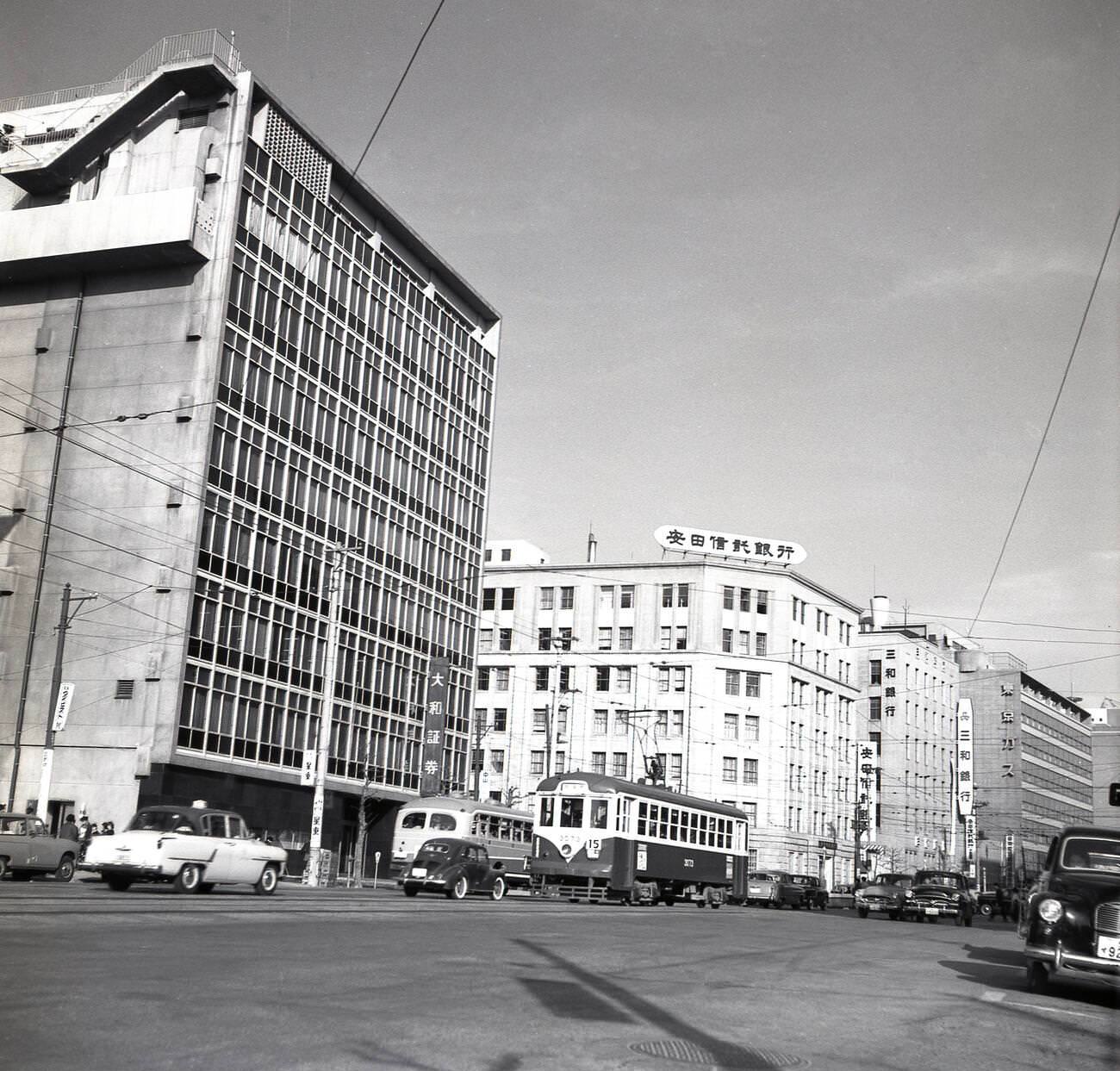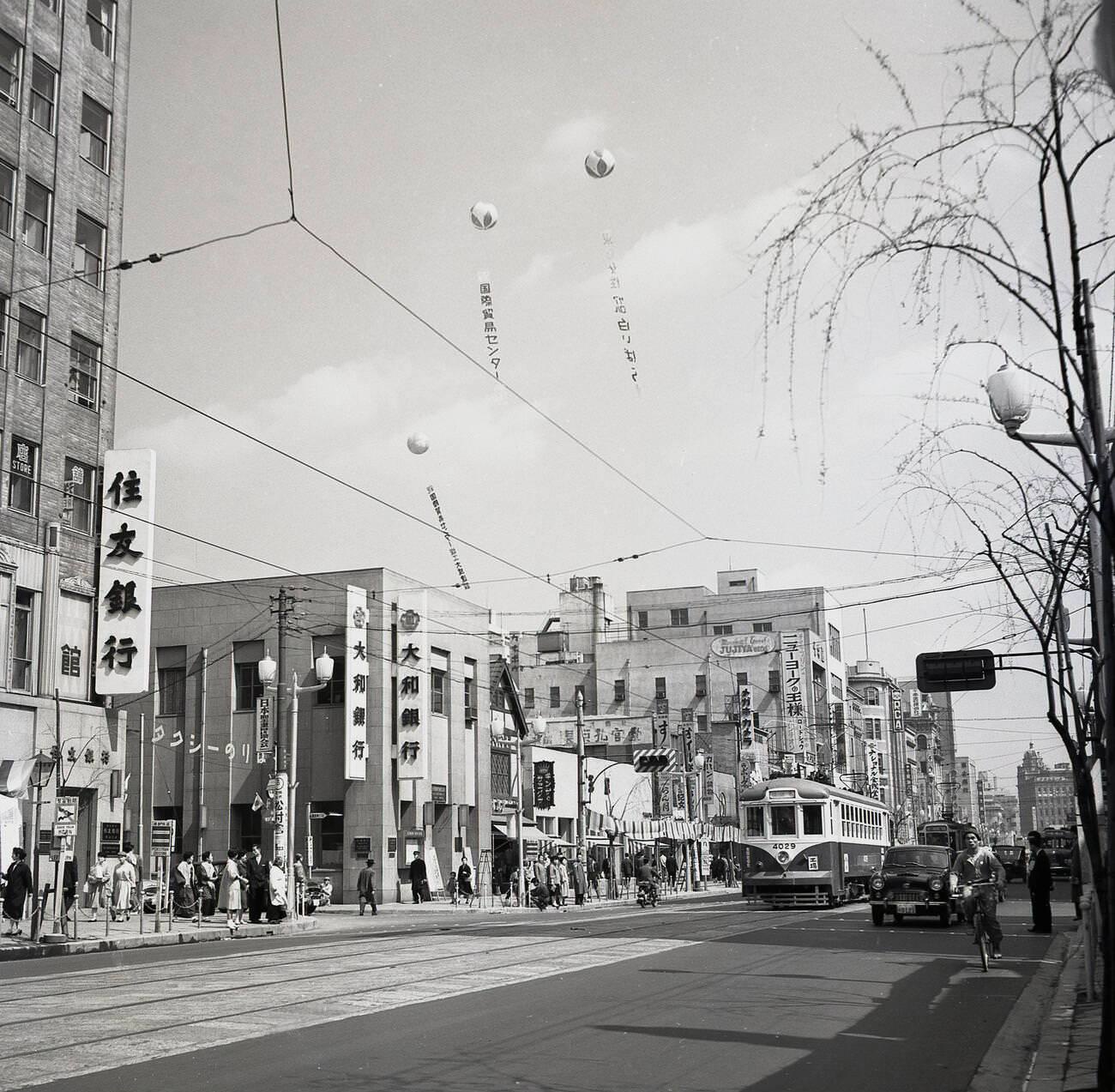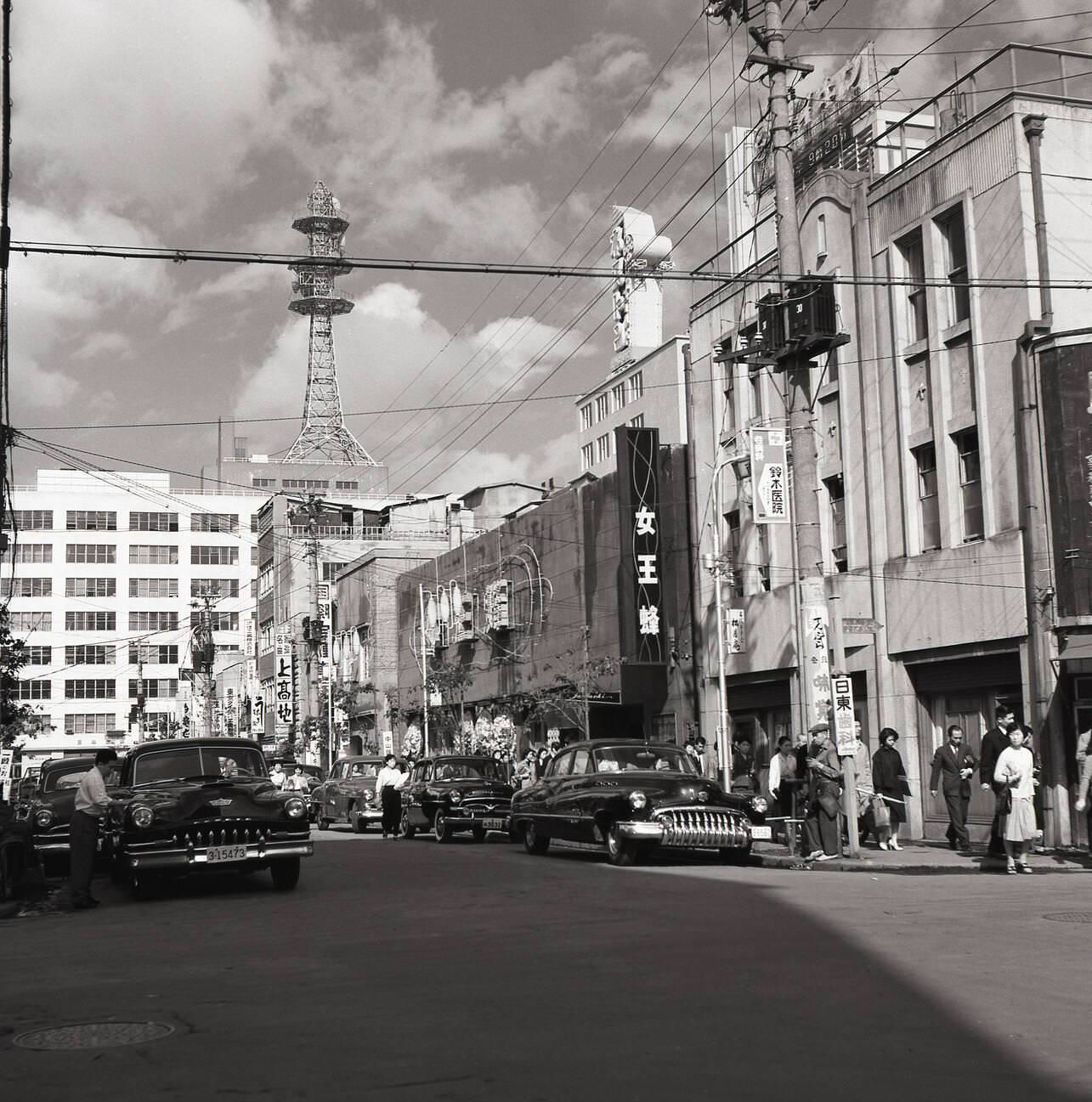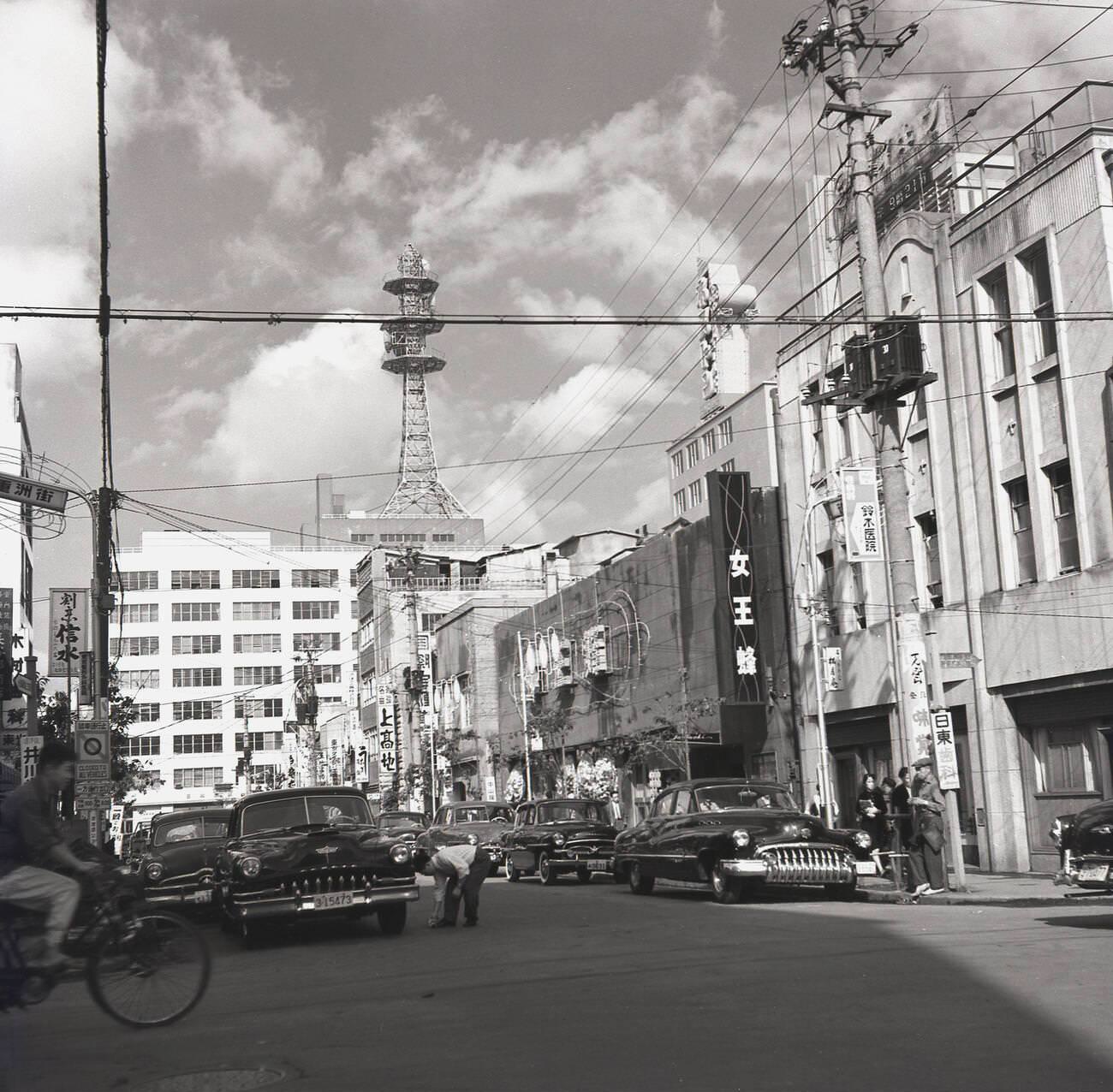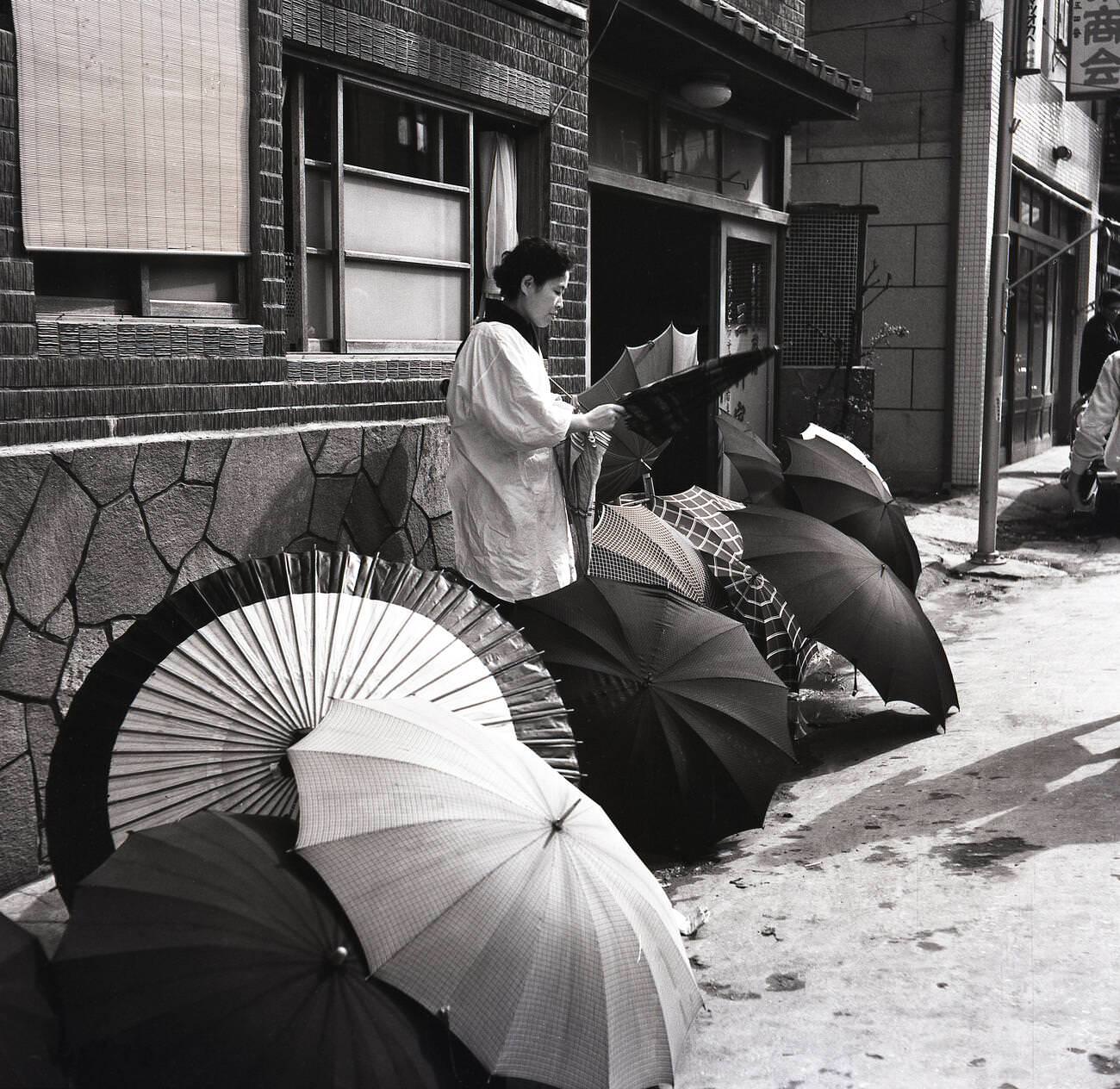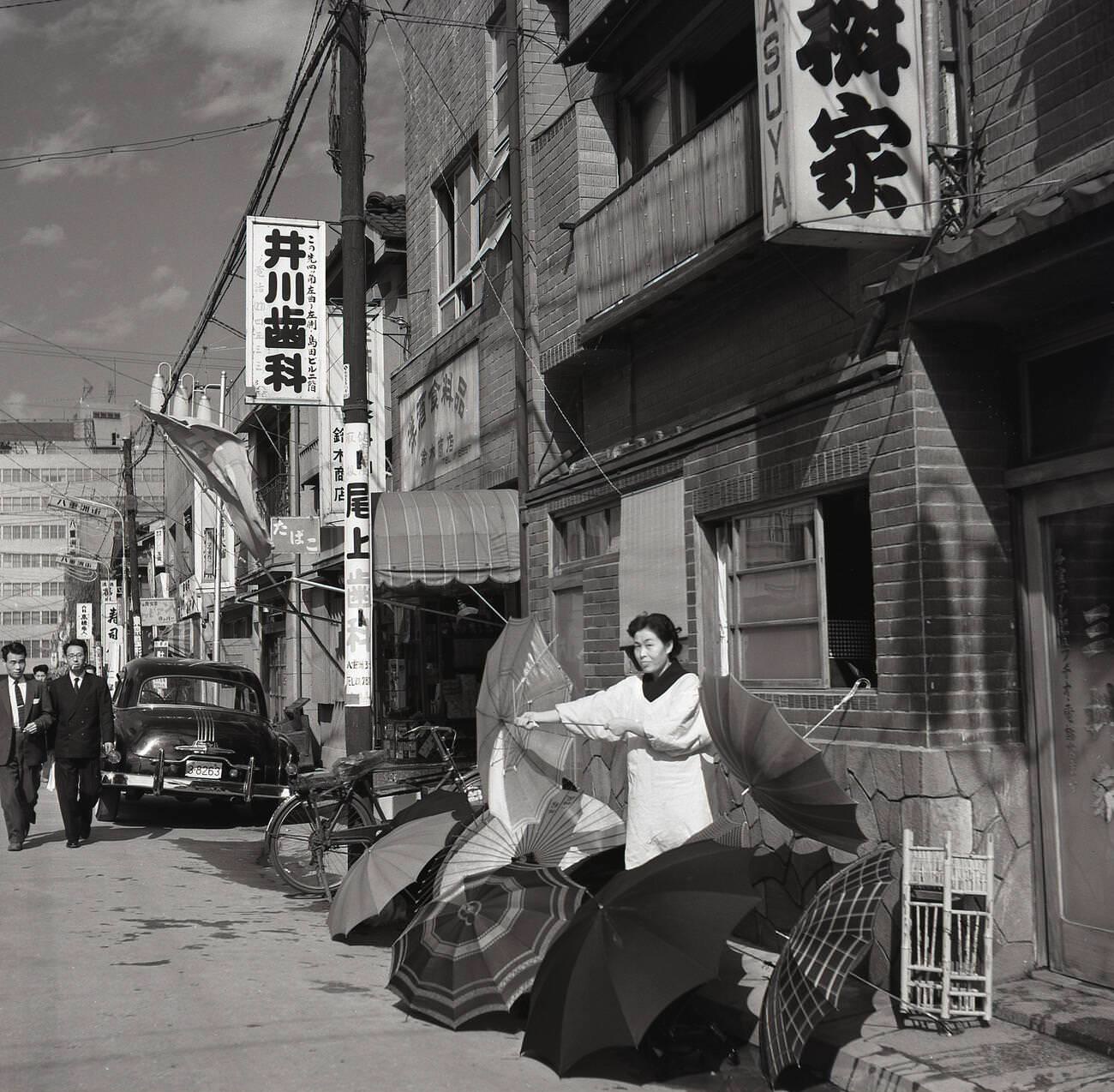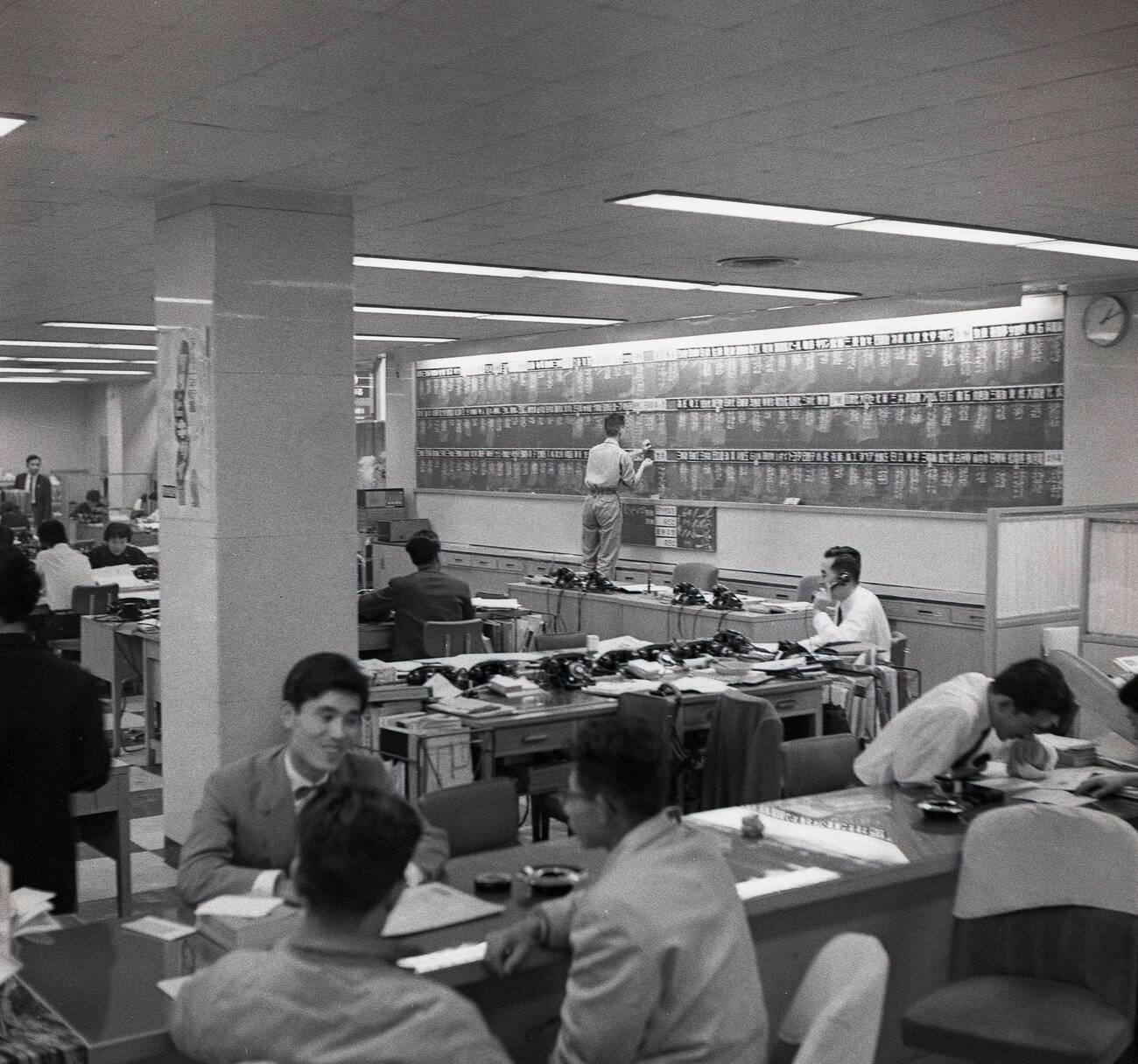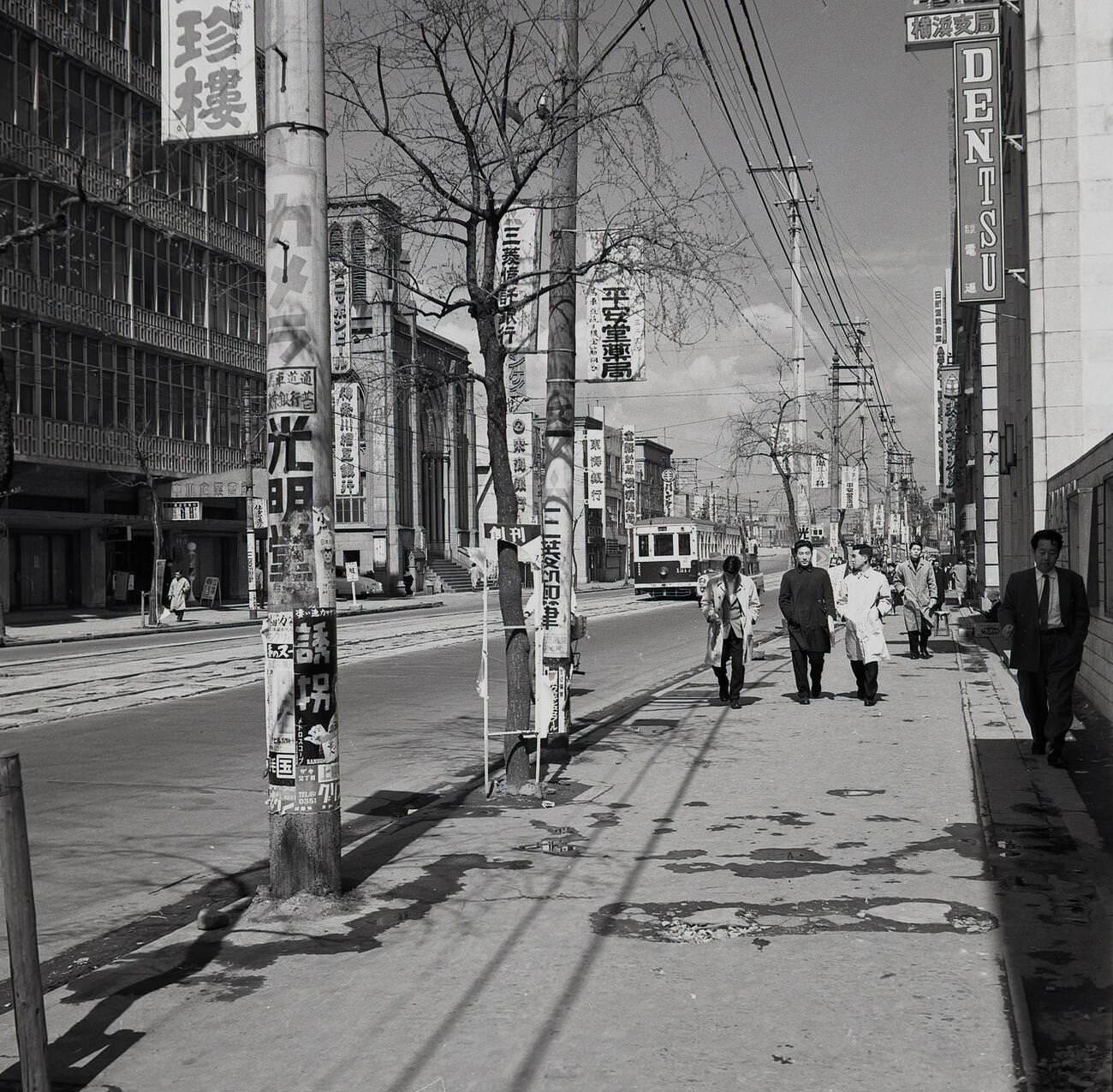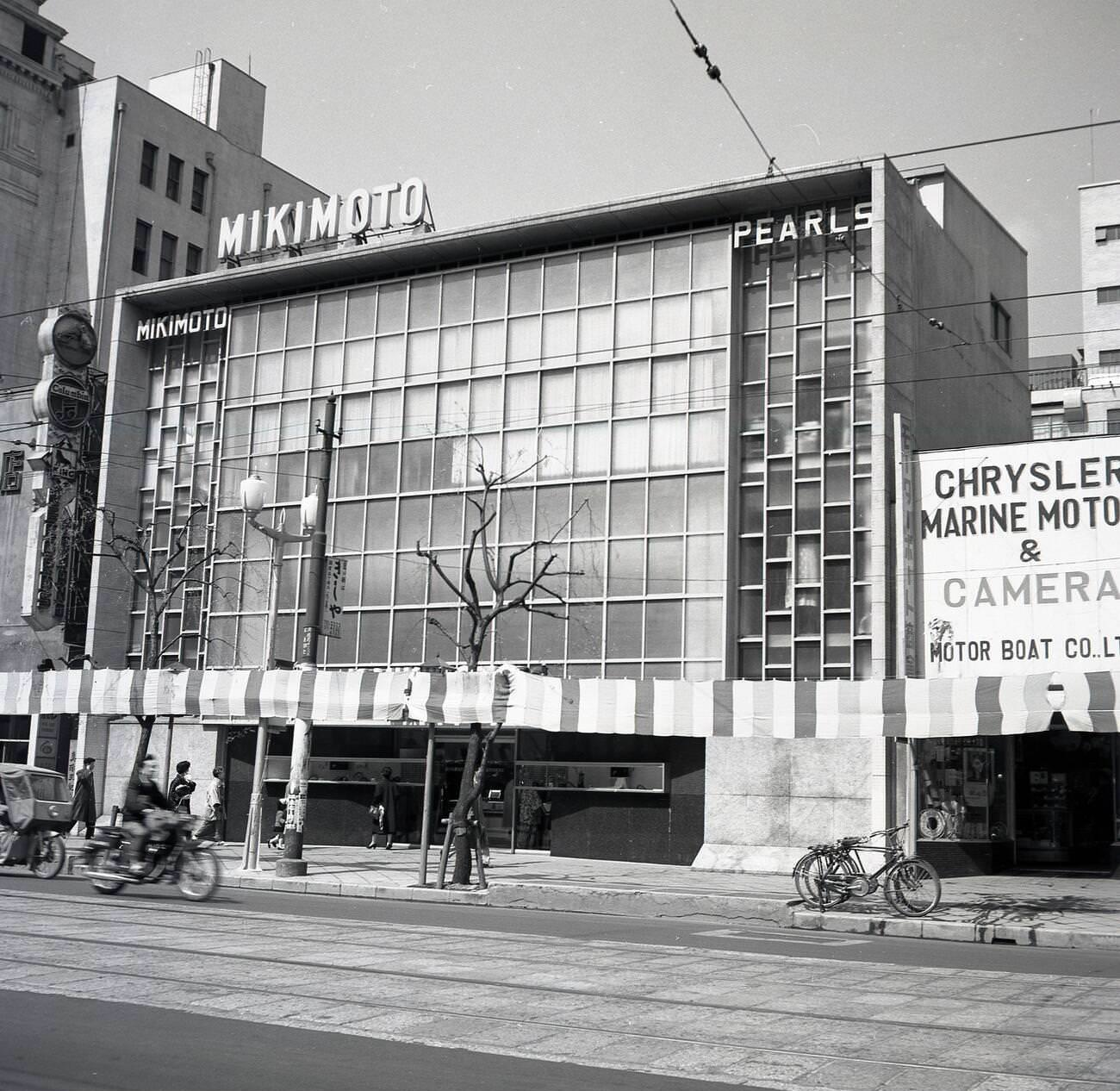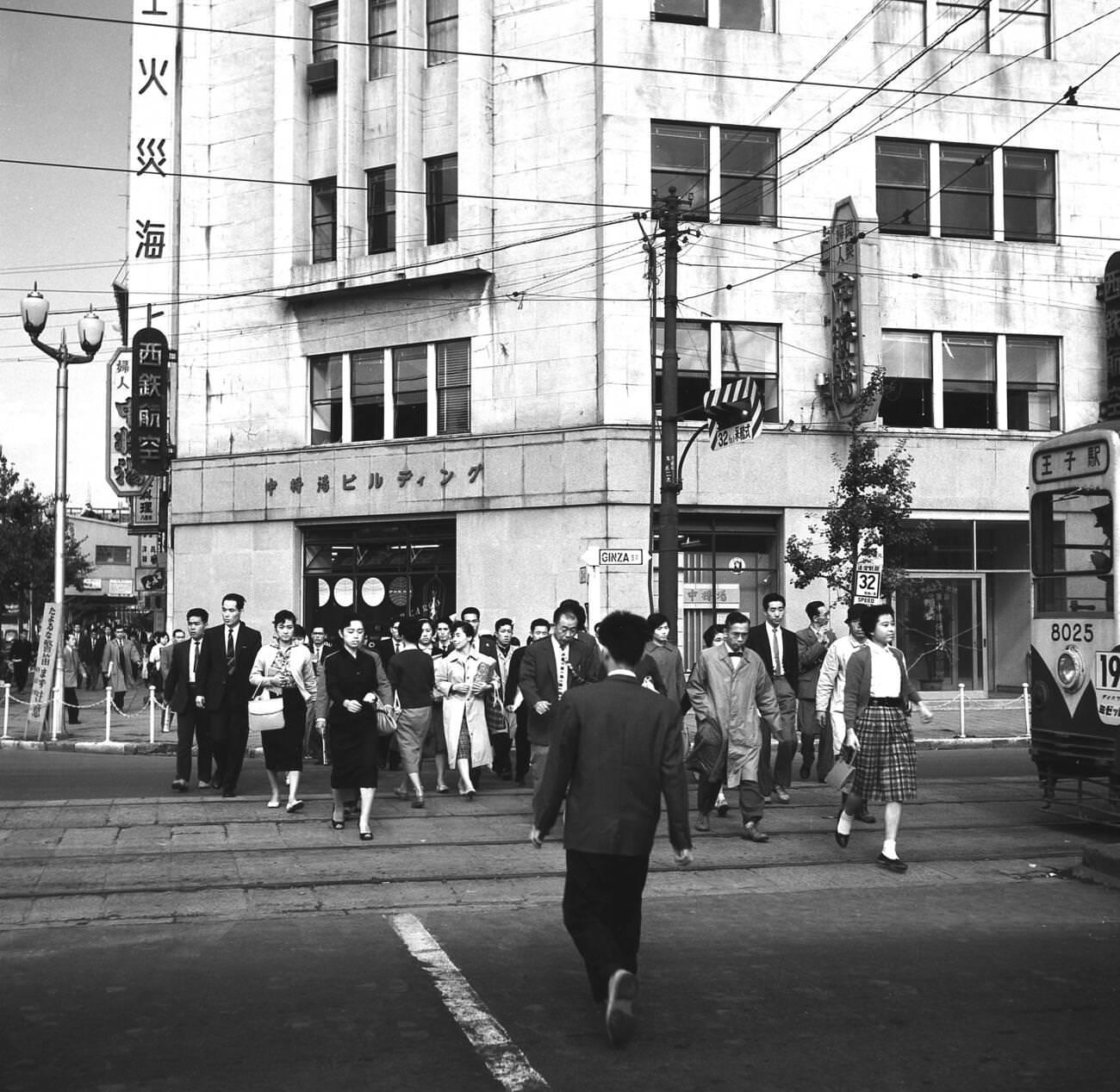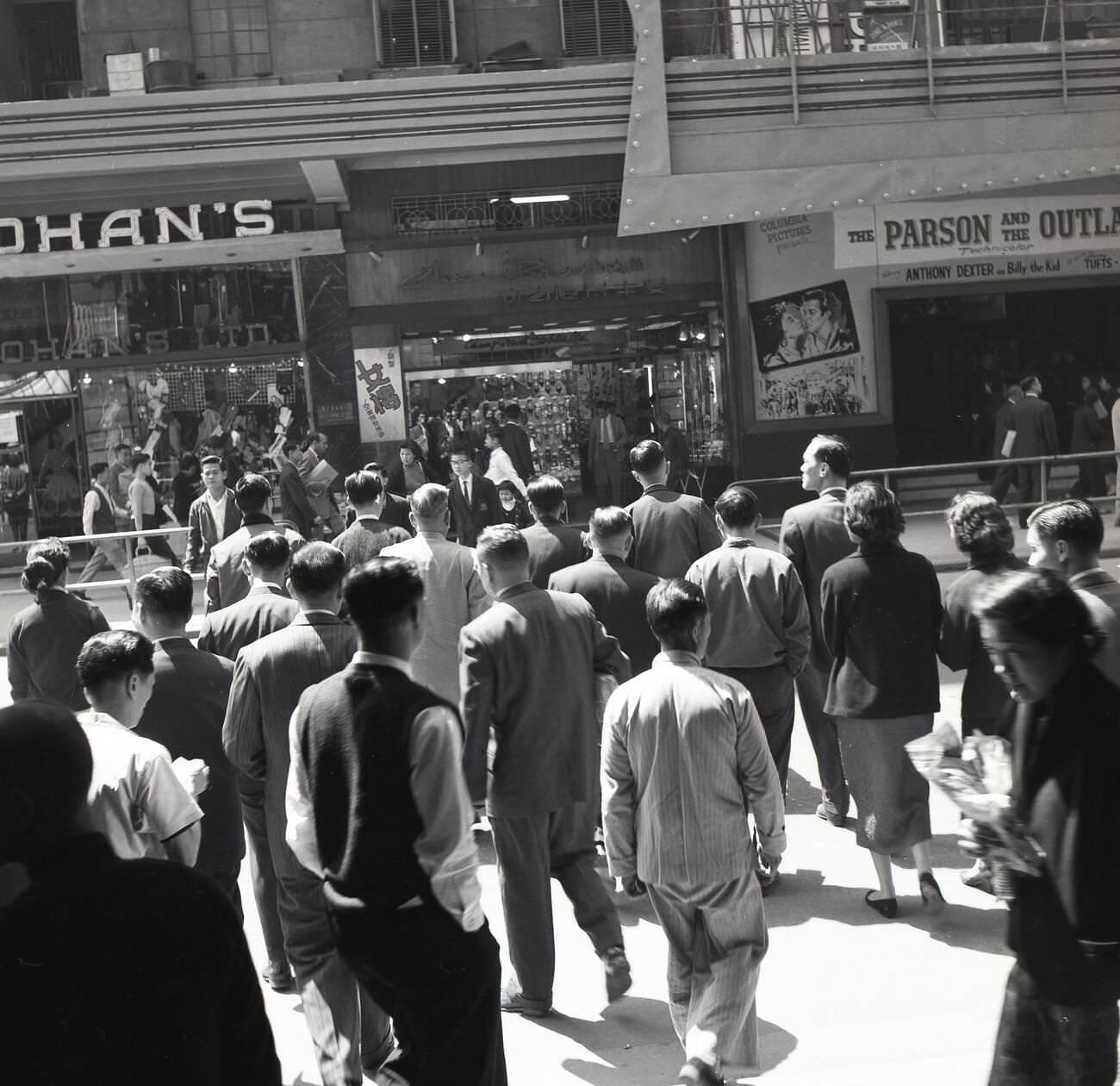In the 1950s, Tokyo was a city undergoing tremendous transformation. After the devastation of World War II, Tokyo had to rebuild almost from scratch. The city was marked by contrasts: remnants of the old world stood alongside the new, and traditional Japanese culture mingled with Western influences brought by the post-war occupation.
The Physical Rebuilding
Tokyo in the 1950s was a construction site. The war had left the city in ruins, and the people of Tokyo were determined to rebuild quickly. Wooden shanties gradually gave way to modern buildings. The skyline began to change as new, Western-style architecture emerged. Streets that were once filled with rubble now buzzed with the activity of vendors and pedestrians. This was a period of rapid urban development.
The economy of Tokyo in the 1950s saw significant growth. Factories that had been repurposed during the war returned to producing consumer goods. New industries, especially electronics and automobiles, began to thrive. Tokyo became a center for innovation and manufacturing. American aid, through programs like the Marshall Plan, played a crucial role in this economic revival. Jobs were plentiful, and people felt a sense of optimism about the future.
Read more
Daily Life and Challenges
Life in postwar Tokyo was not without its challenges. Housing was scarce, and many families lived in cramped, temporary shelters. Food shortages were common, and rationing continued into the early 1950s. Black markets were widespread, and people often had to rely on them for basic necessities. Despite these hardships, the community spirit was strong. People helped one another, sharing resources and supporting each other through difficult times.
Cultural Changes
The 1950s saw significant cultural shifts in Tokyo. Traditional Japanese values and customs were still very much alive, but there was a growing fascination with Western culture. Young people embraced new fashions, music, and lifestyles. Jazz clubs, dance halls, and cinemas became popular spots for entertainment. American movies and music had a profound influence on the youth of Tokyo, leading to a cultural fusion that was both exciting and innovative.
Socially, Tokyo was evolving. Women, who had taken on various roles during the war, continued to participate actively in the workforce. They sought higher education and professional careers, challenging traditional gender roles. This shift laid the groundwork for future advances in gender equality. Education was also a priority, with schools being rebuilt and reformed to promote democratic values and critical thinking.
Public Transportation
The expansion of Tokyo’s public transportation system was crucial for the city’s growth. New train lines and bus routes were established, making it easier for people to commute. The efficient transportation network helped connect different parts of the city, facilitating economic activities and social interactions. Trains became a symbol of modernity and progress, reflecting Tokyo’s rapid development.
Entertainment and Leisure
Tokyo in the 1950s was a city that knew how to have fun. As the economy improved, people had more disposable income for leisure activities. Shopping districts like Ginza became popular destinations. Department stores offered a variety of goods, from traditional Japanese items to the latest Western fashions. Parks and public spaces were revitalized, providing places for families to relax and enjoy the outdoors.
The Role of Bath Houses
Bath houses, or sento, were an integral part of daily life in Tokyo. They were not only places for physical cleanliness but also social hubs where people gathered to relax and interact. With the presence of American officers, some bath houses adapted to serve their Western clientele. These interactions provided a unique cultural exchange, reflecting the blending of Japanese and American influences.


